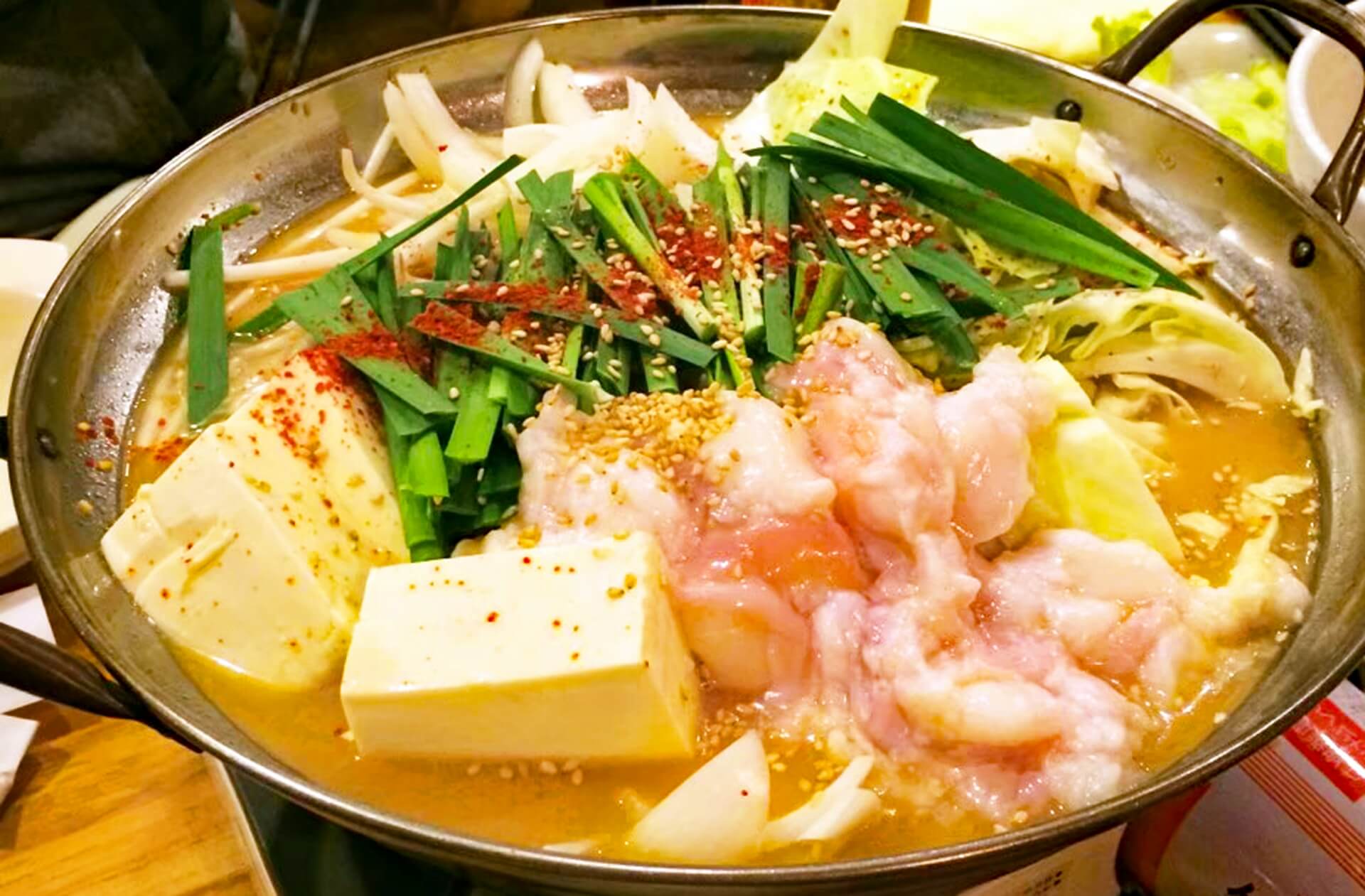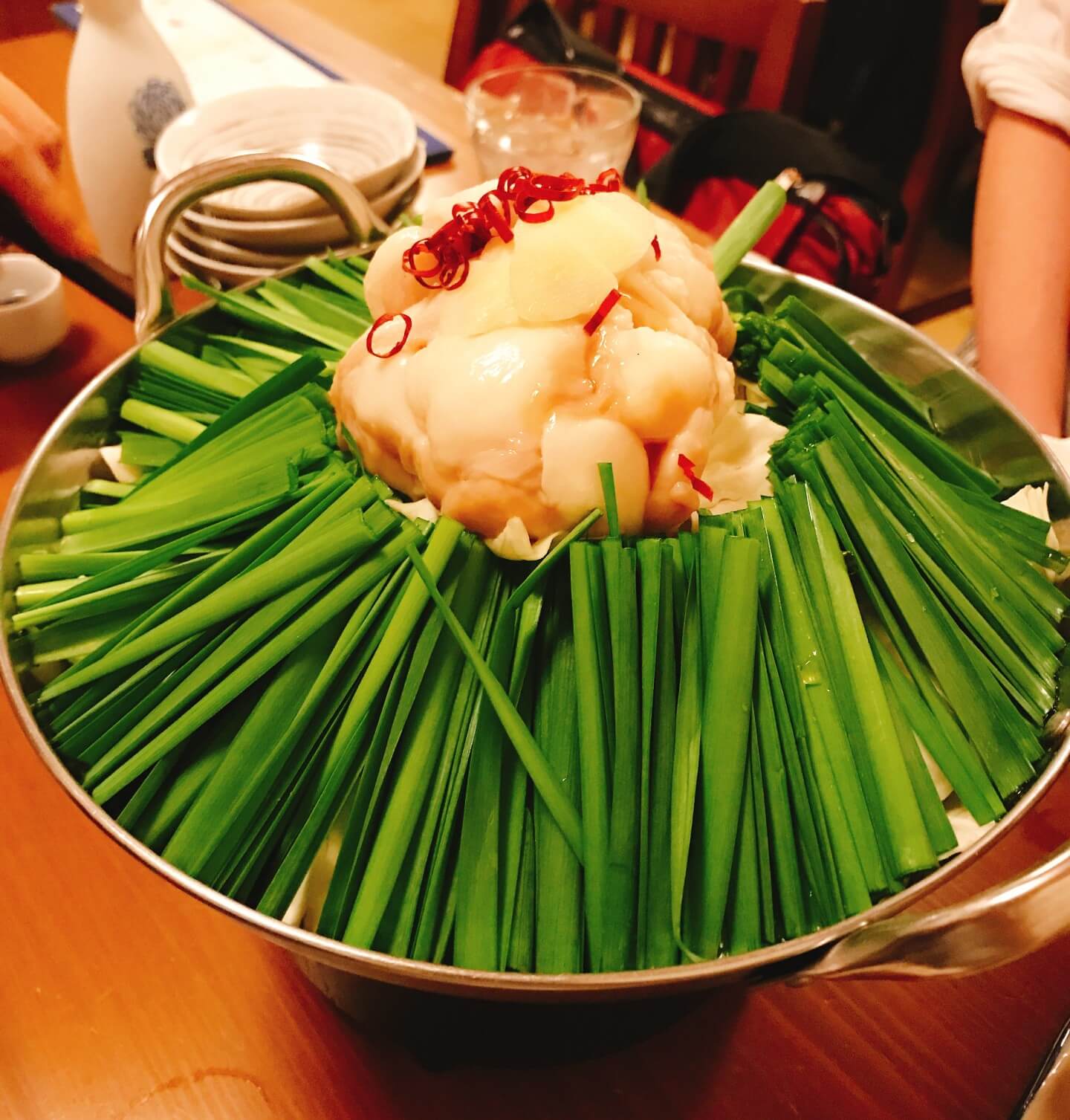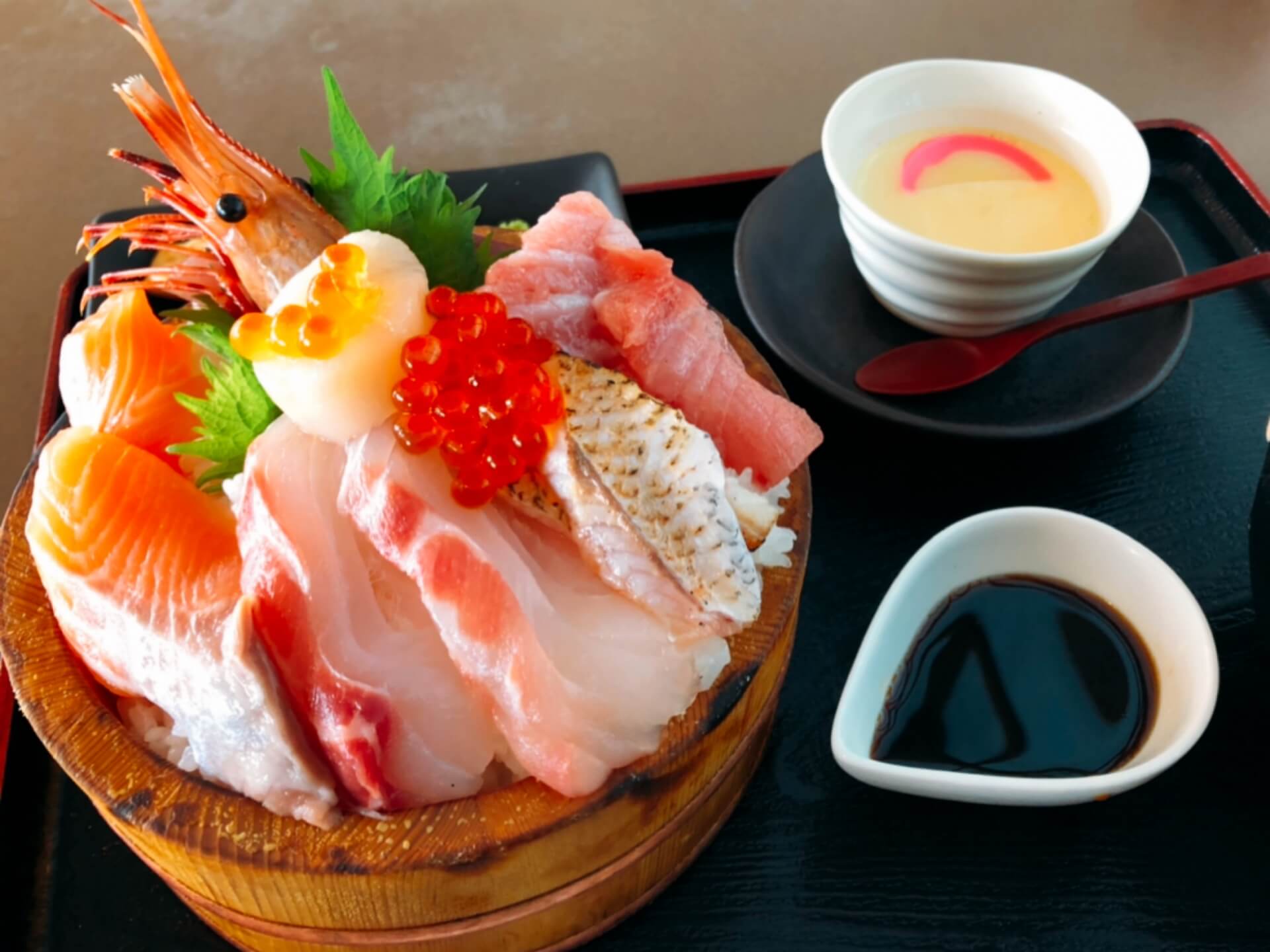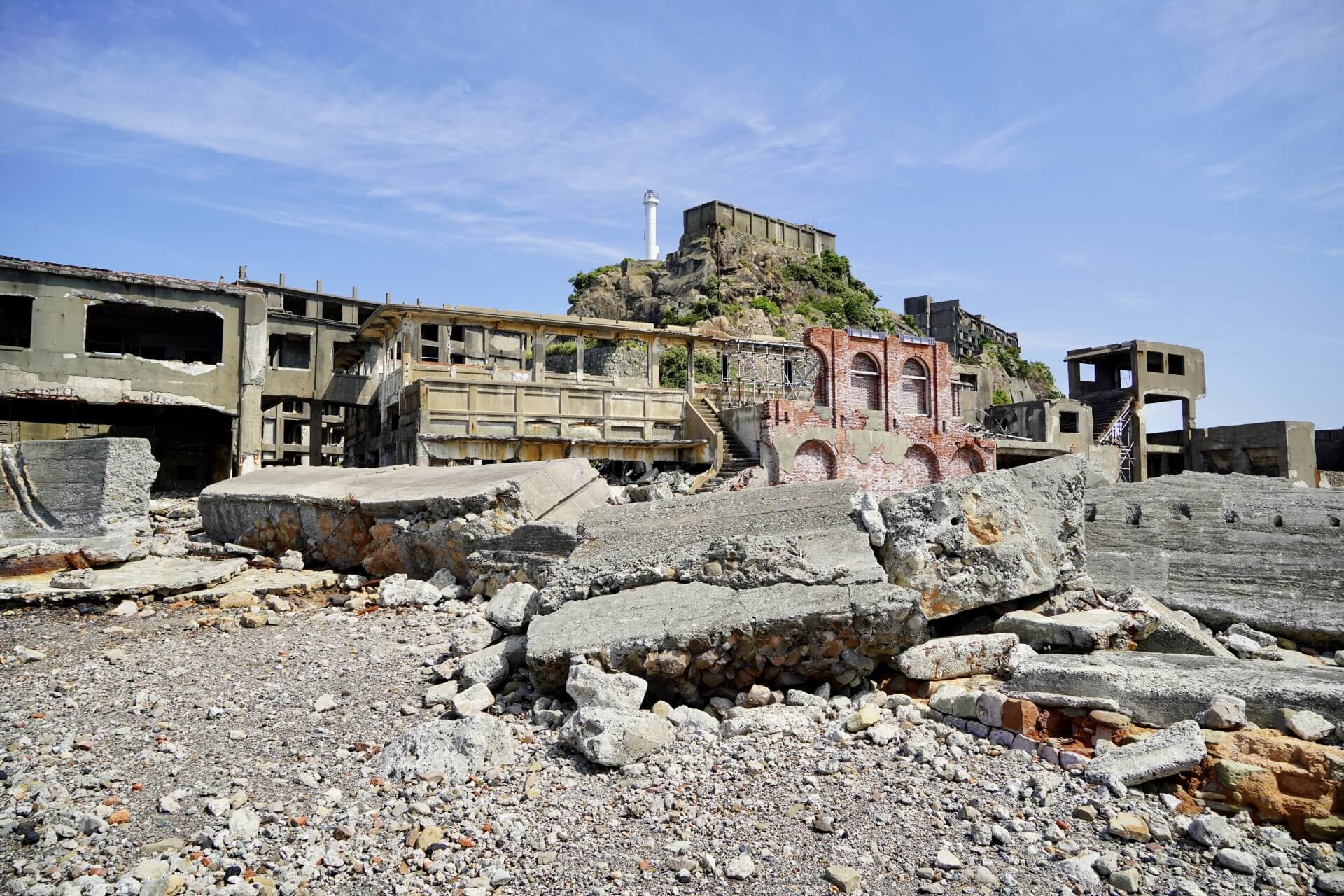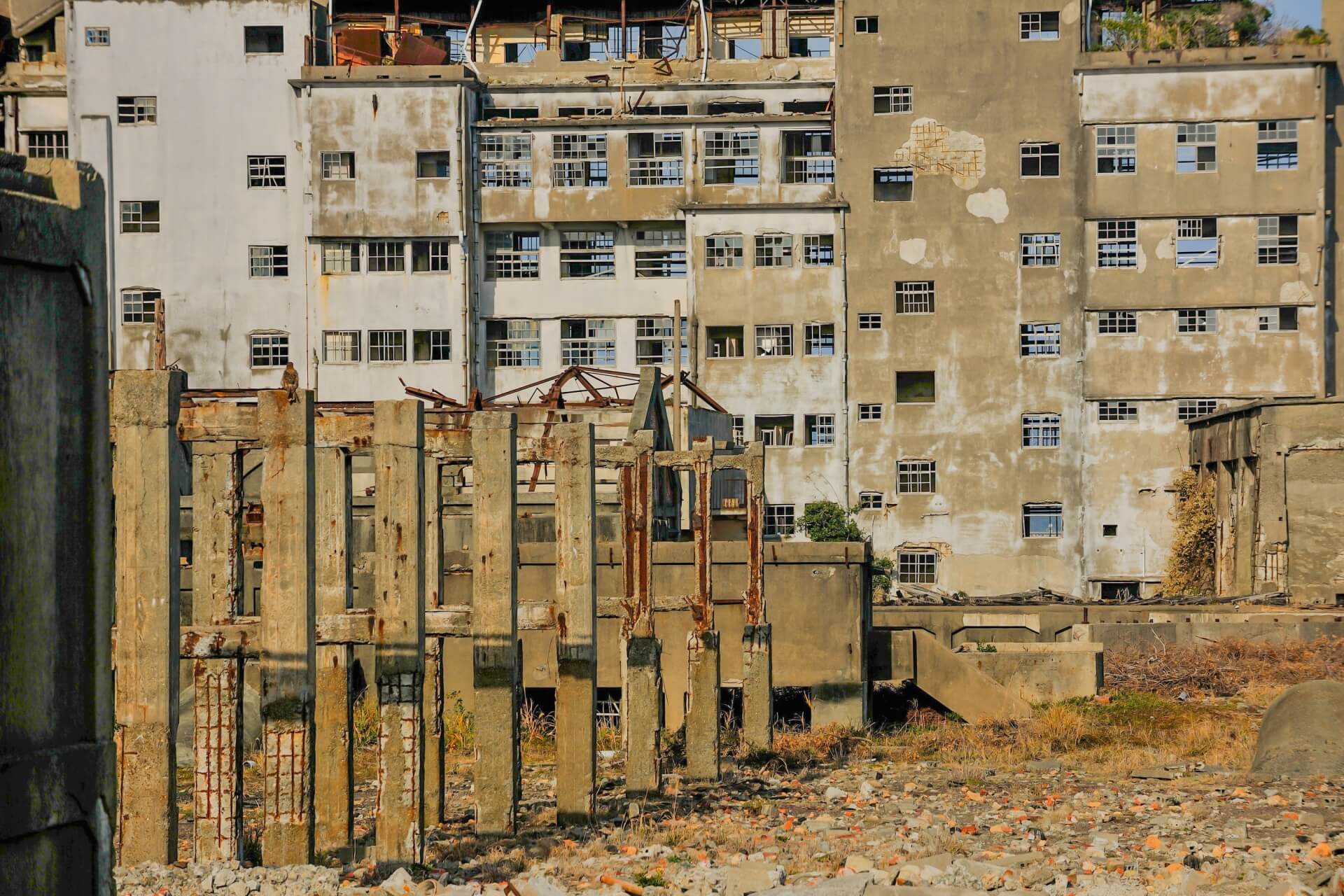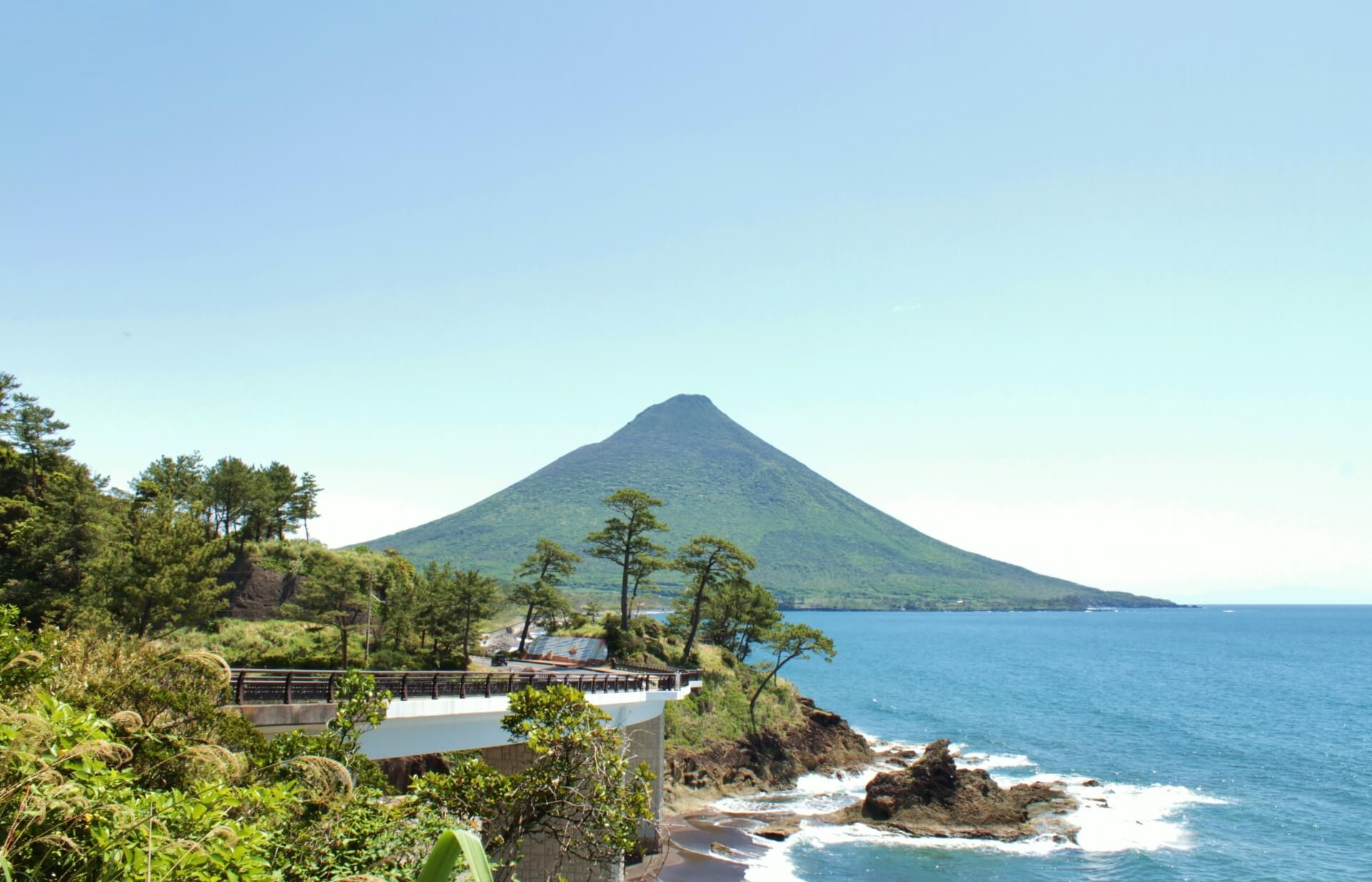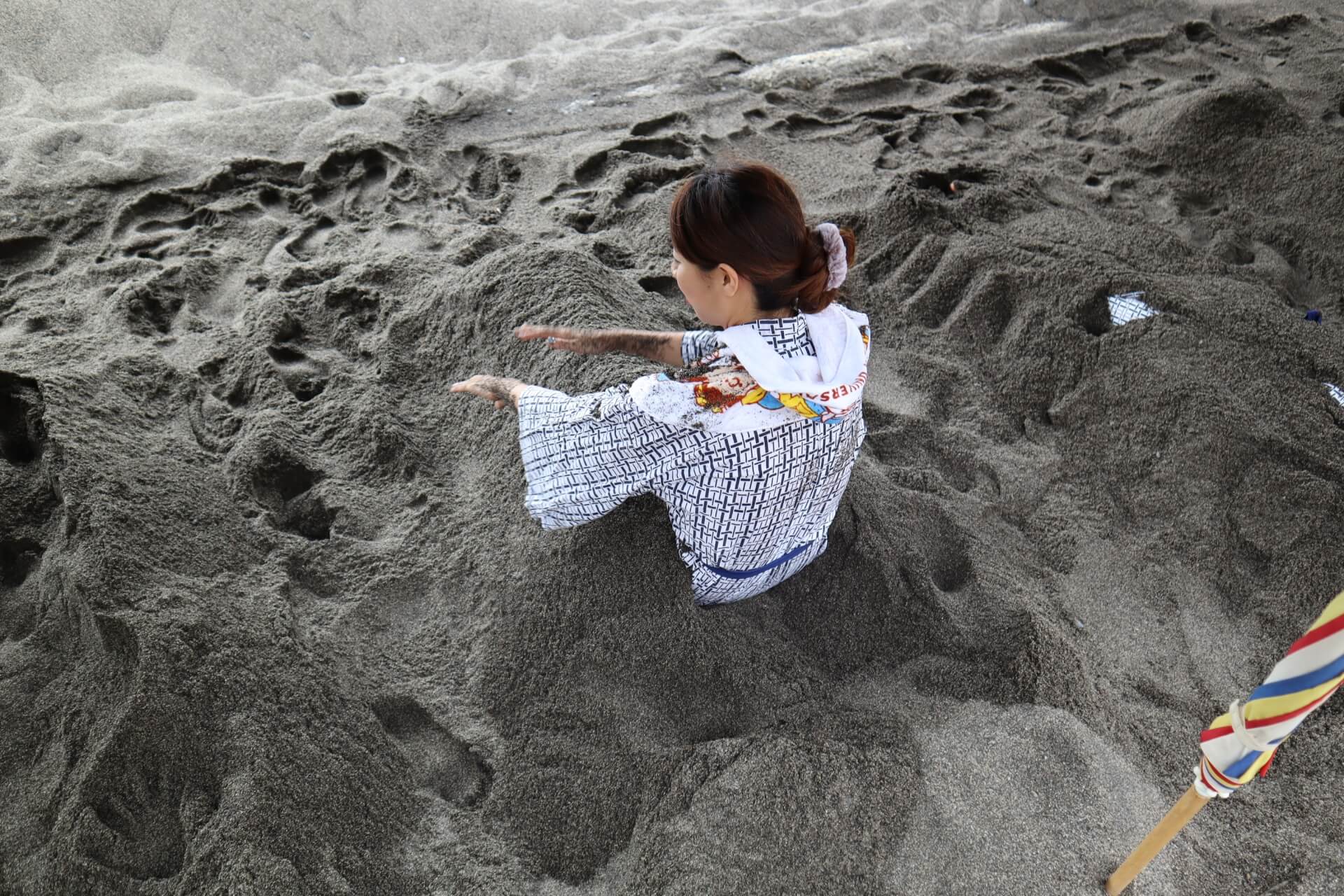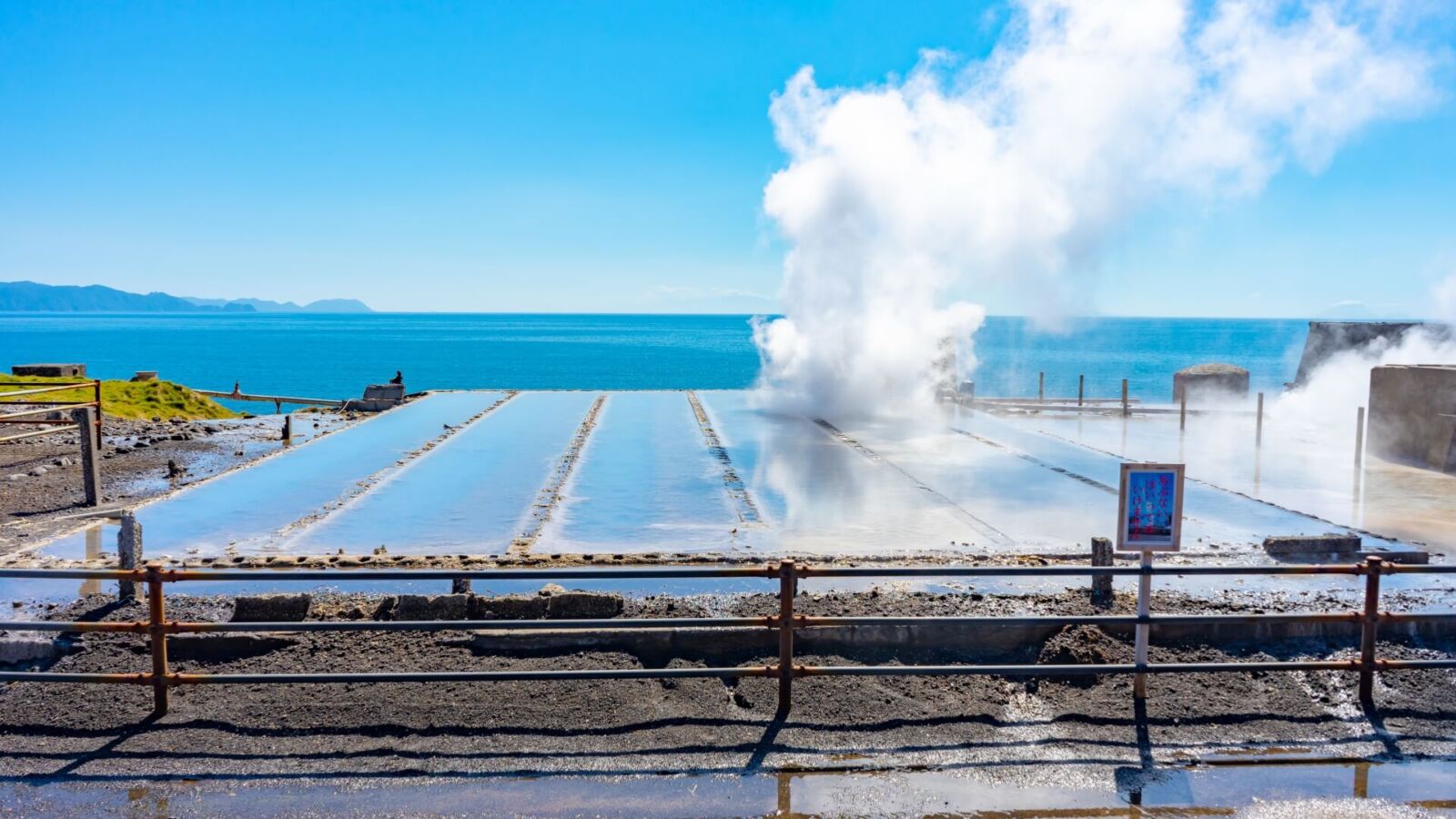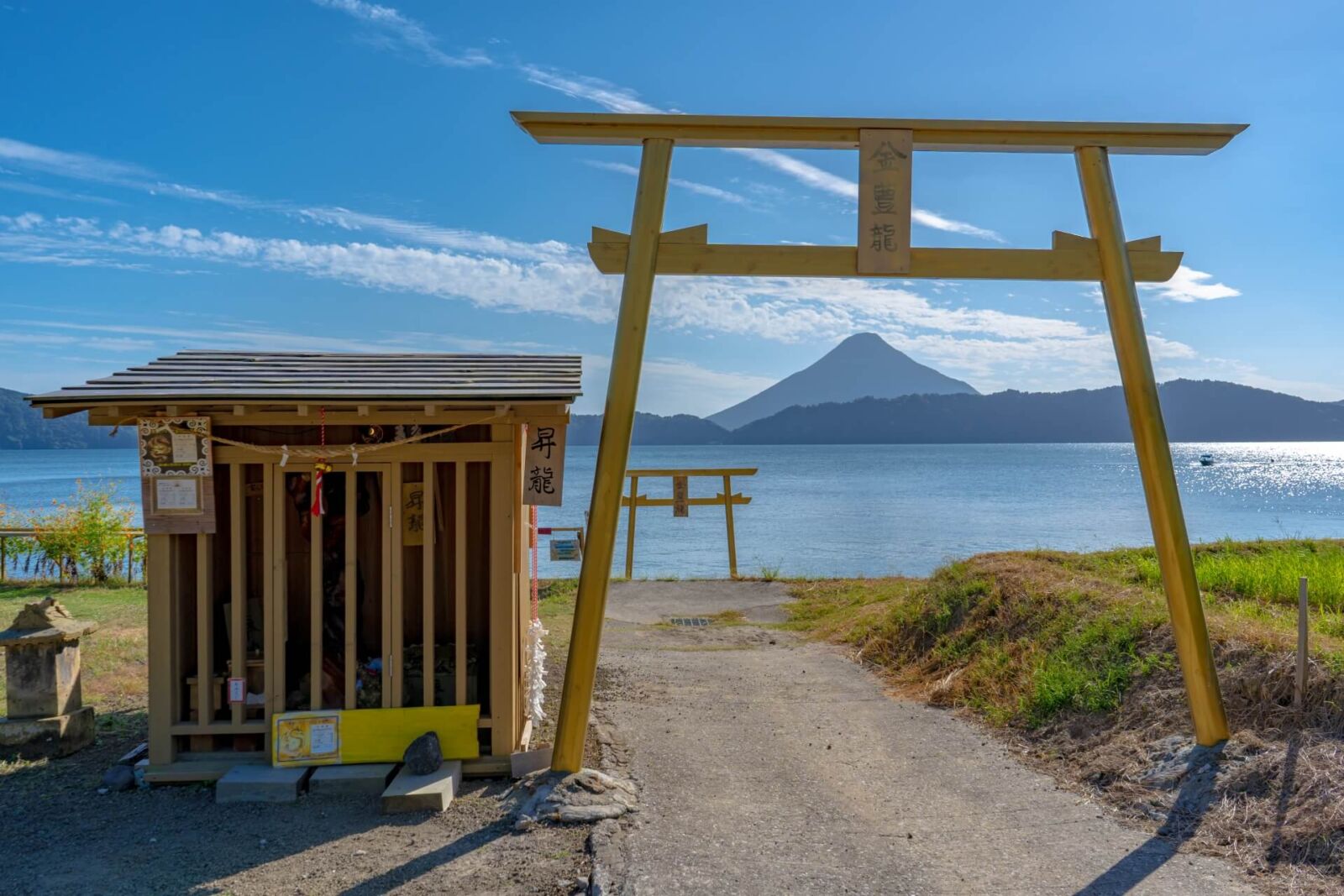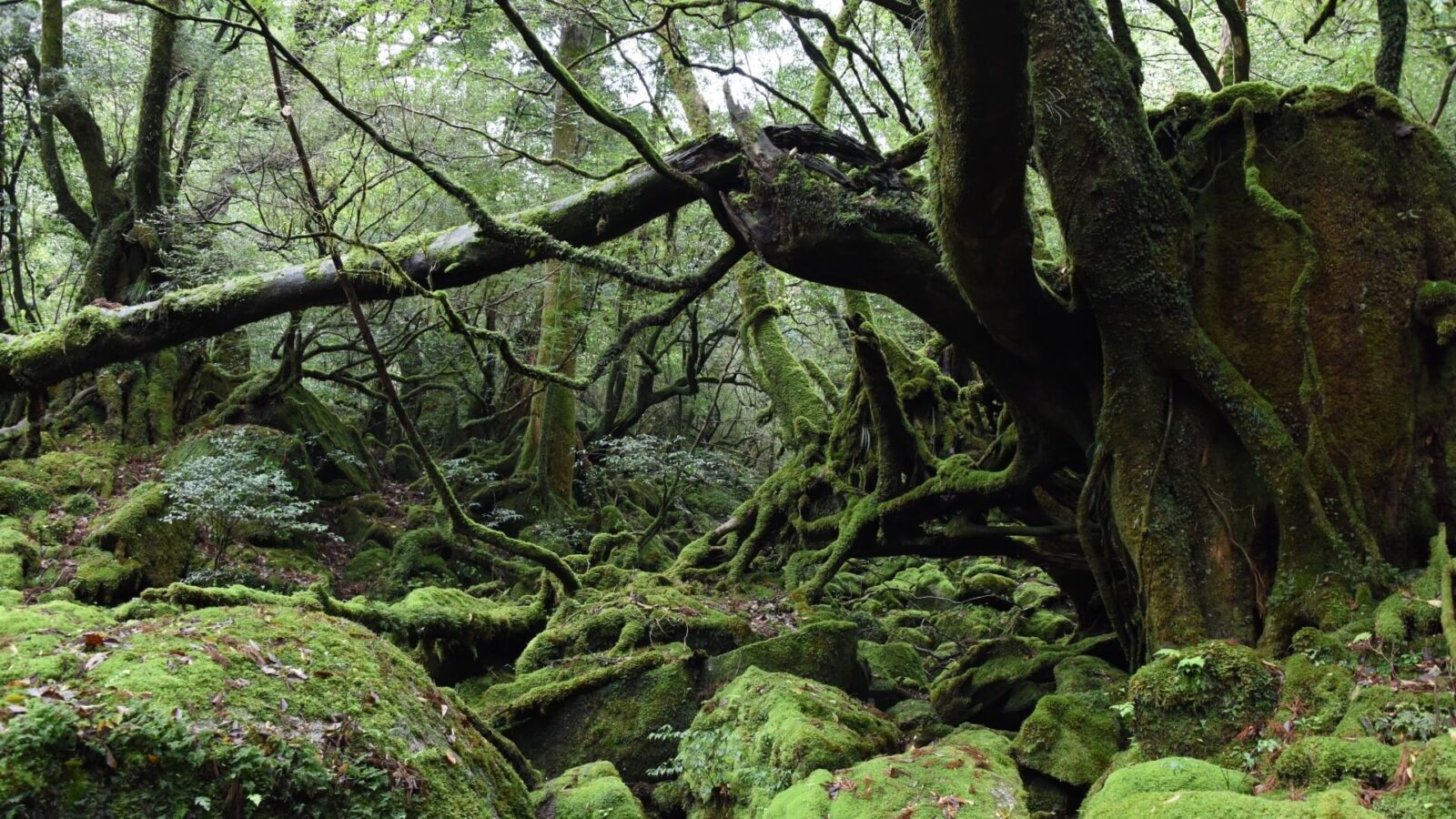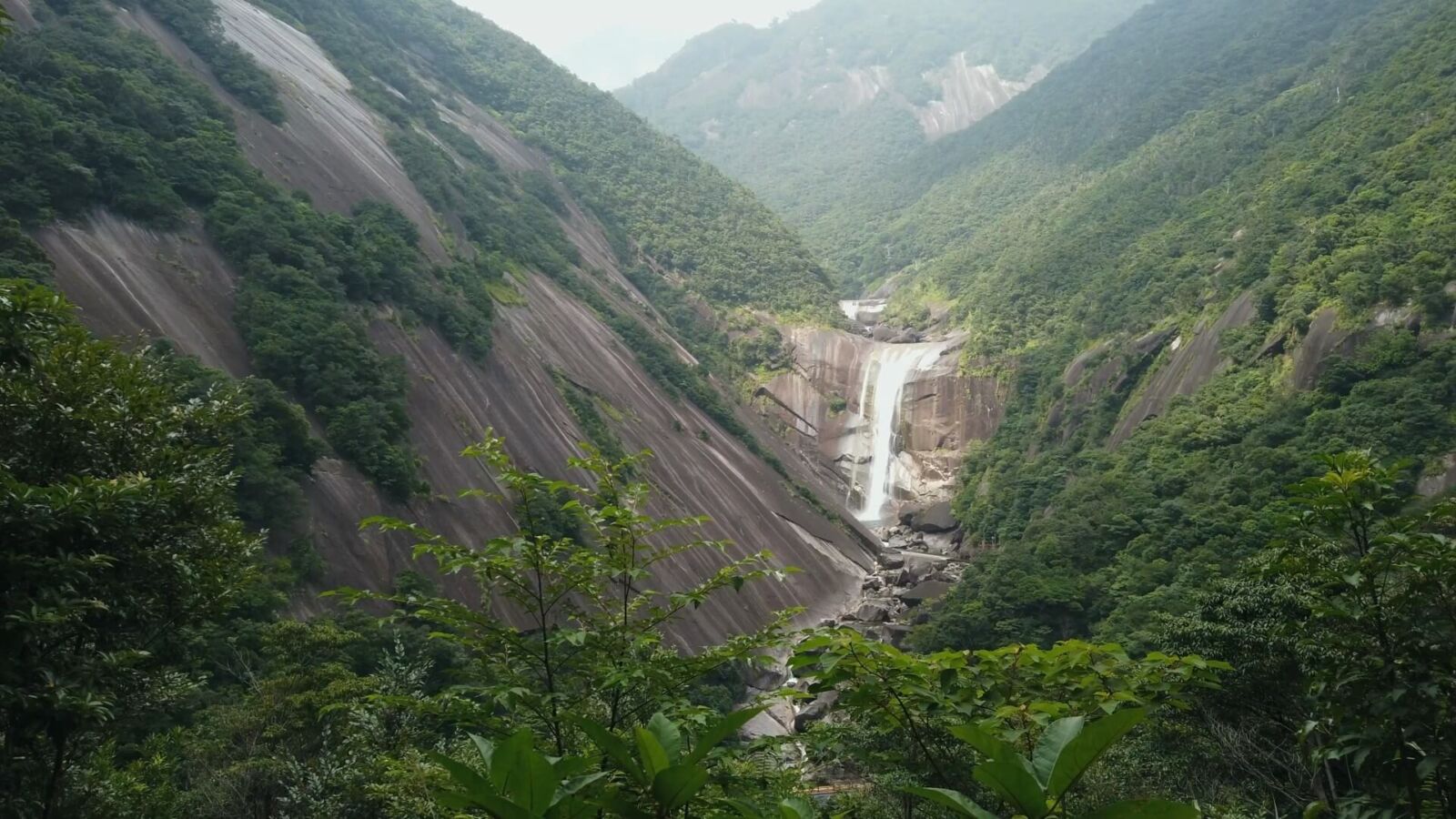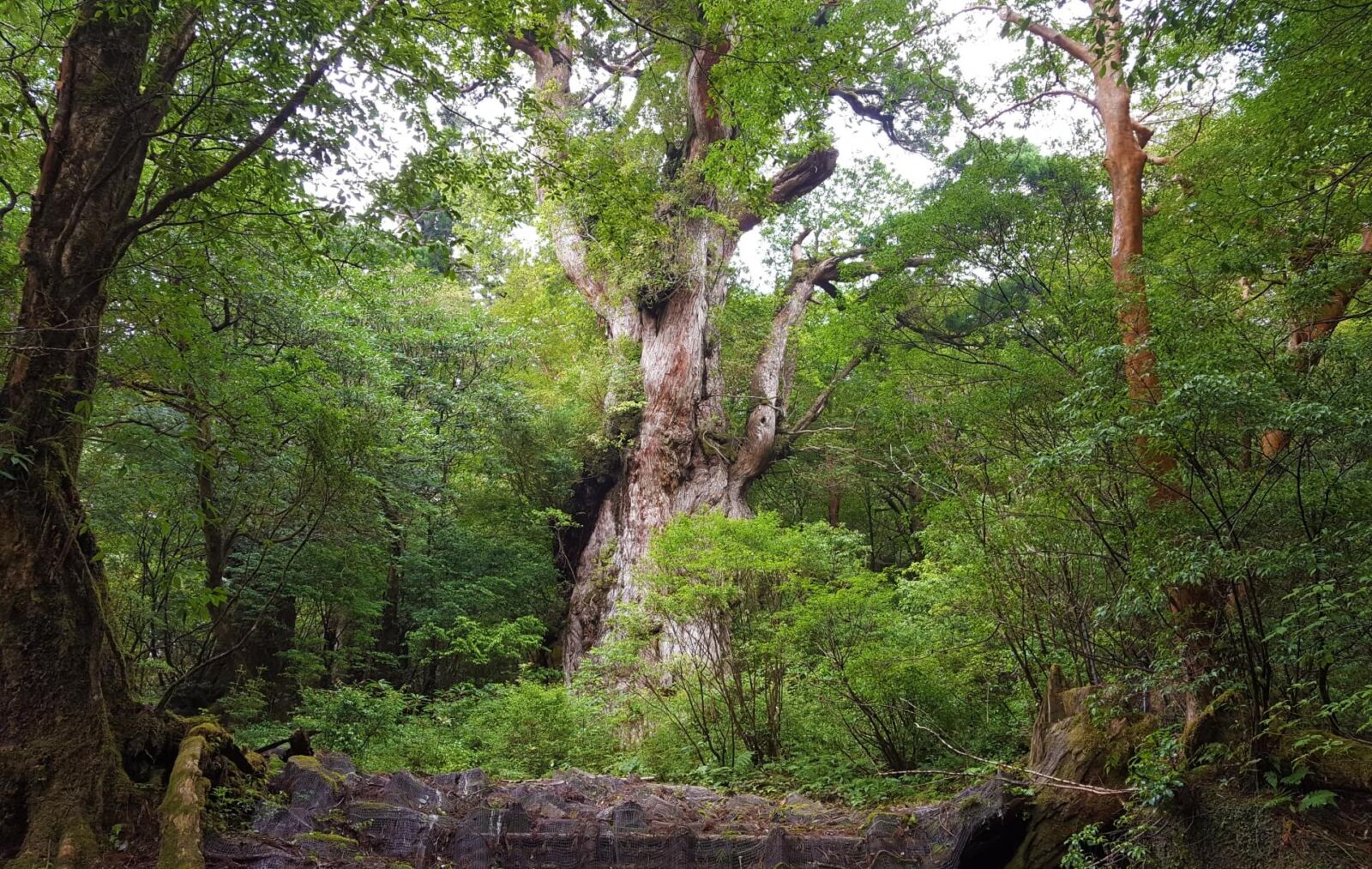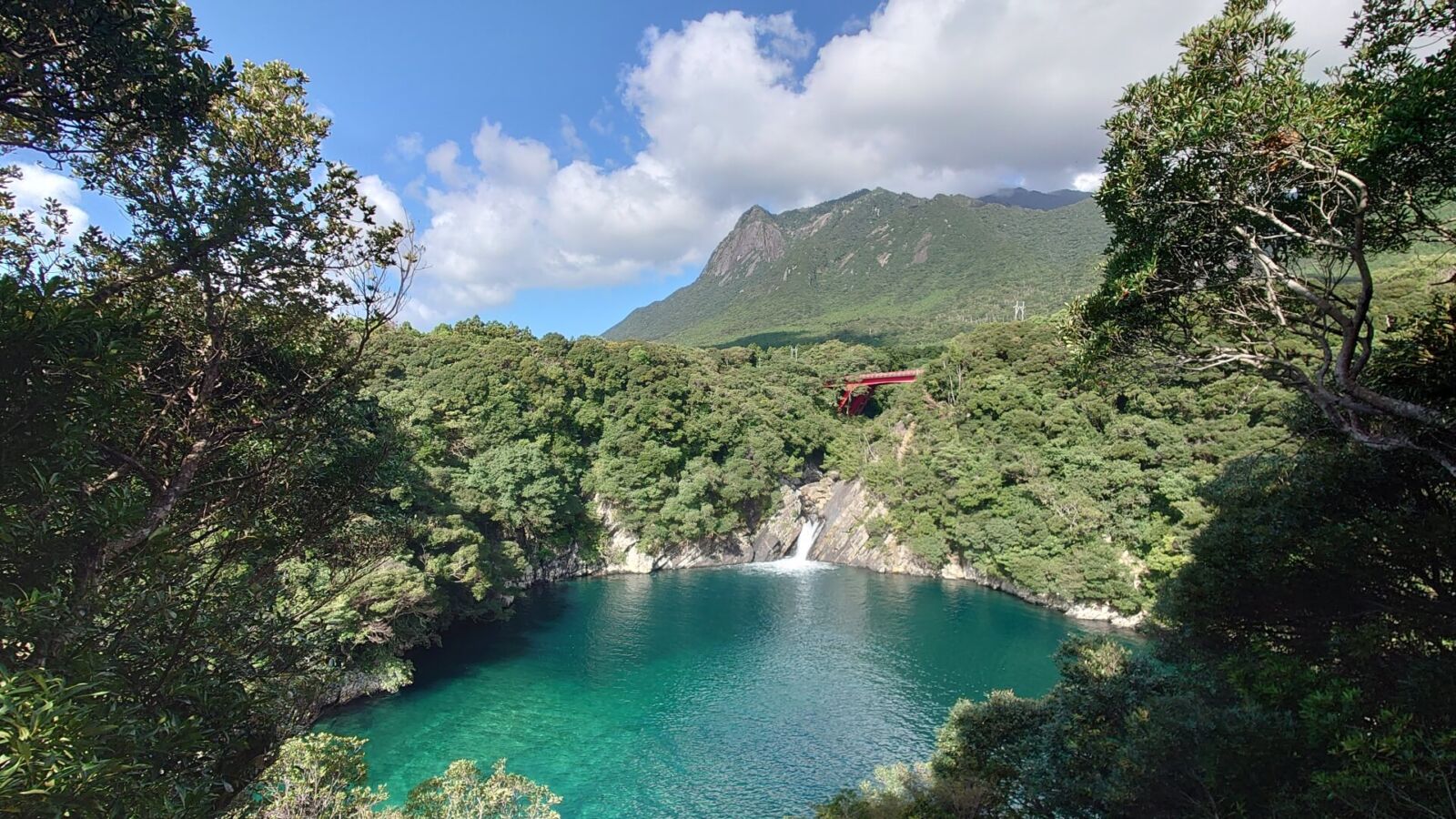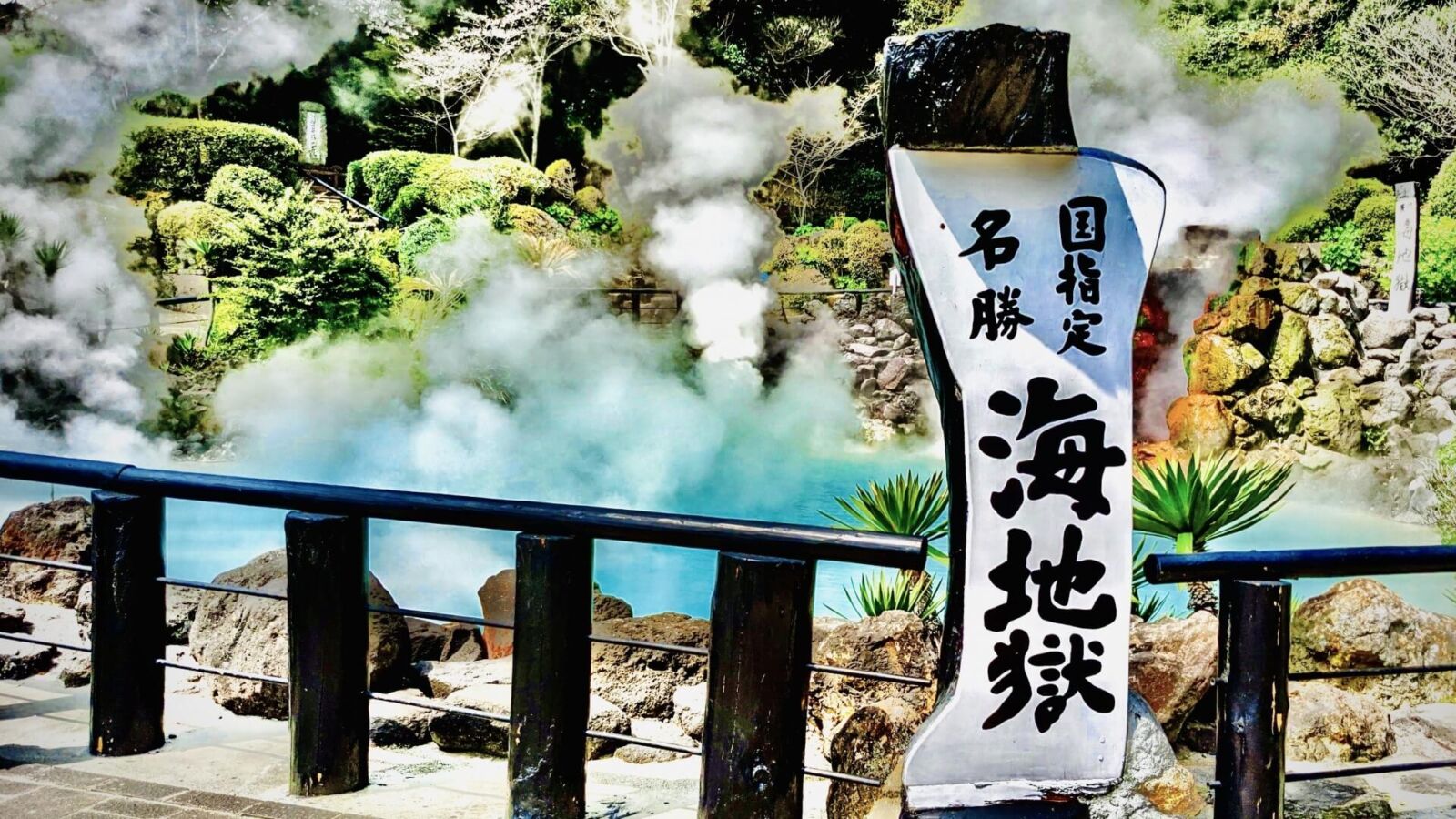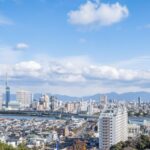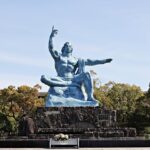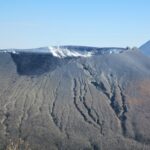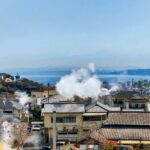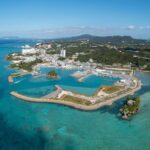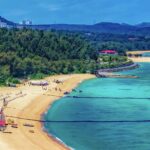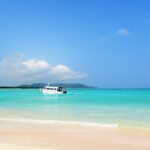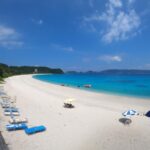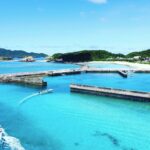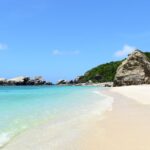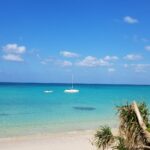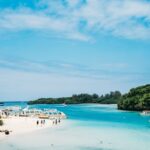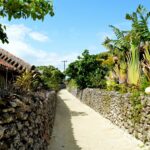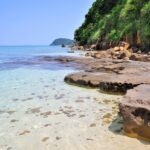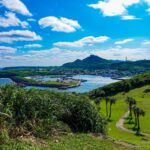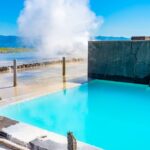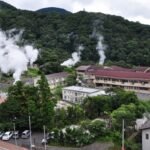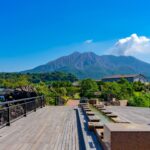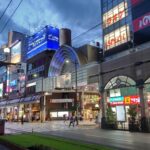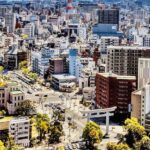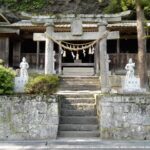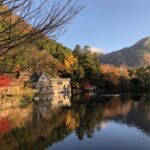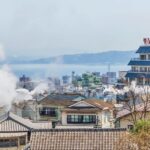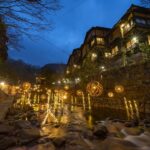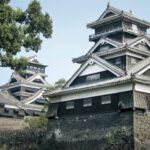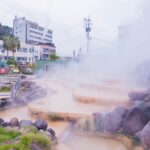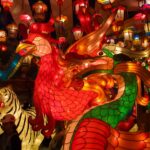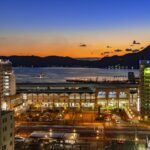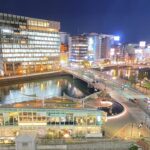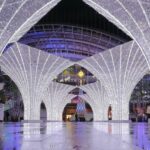30 Things to Do Around Kyushu & Where to Stay
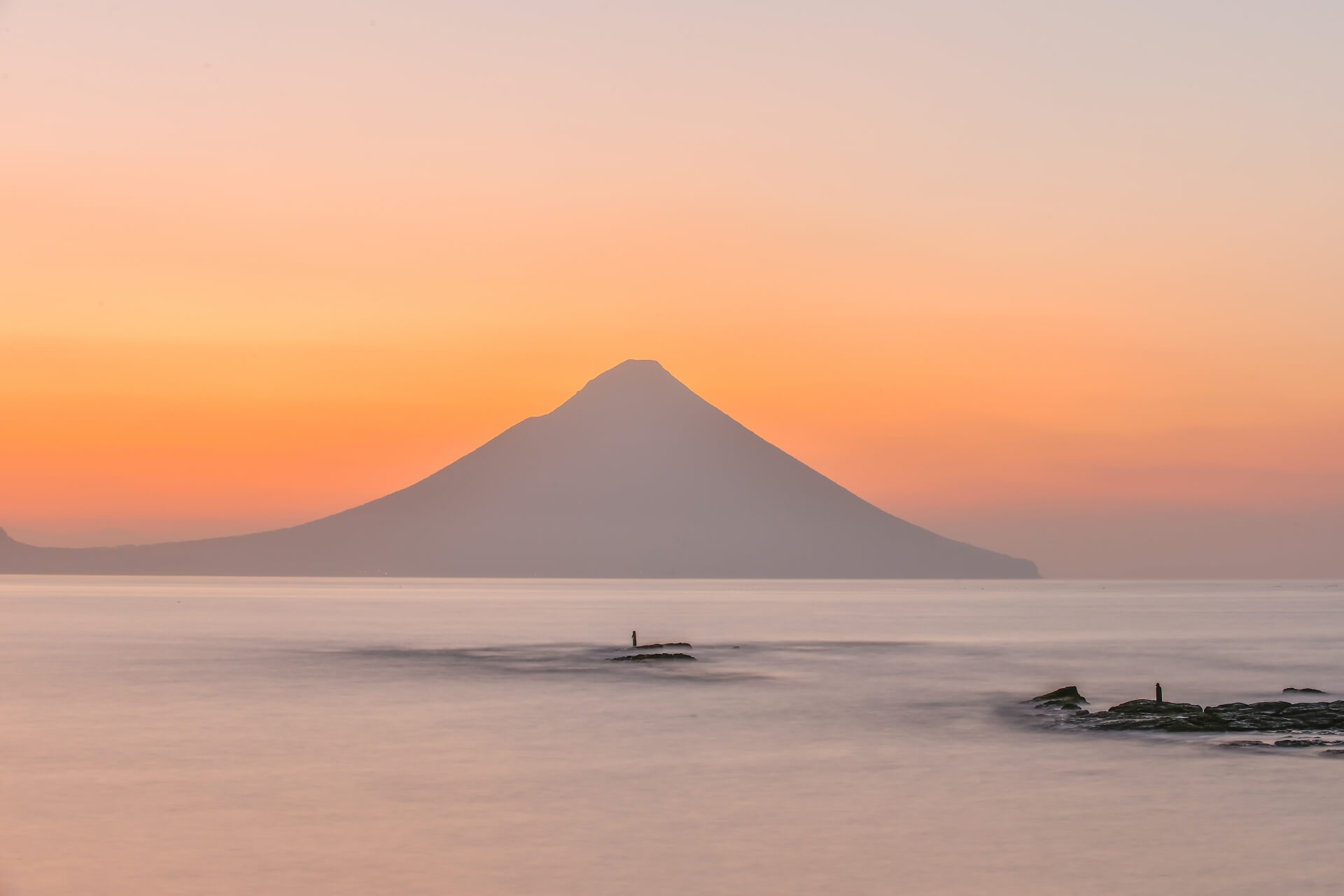
Sitting quietly in the southwest of the Japanese mainland, Kyushu is a region of beautiful coastline, volcanic islands and mountain ranges, historic cities hot springs and more. On this page you will find the following information:
— 30 Best Things to Do When Visiting Kyushu
— Best Places to Stay When Visiting Kyushu
Translating as ‘Nine Provinces’, Kyushu sits to the southwest of Japan’s main island of Honshu and offers visitors an enticing mix of cultural and natural attractions. Fukuoka is the largest city in the region while Nagasaki occupies an important place in the global consciousness. Moving south, Kumamoto boasts one of Japan’s most famous castles and Kagoshima is your gateway to natural wonders including Sakurajima, Satsuma Peninsula and Yakushima.
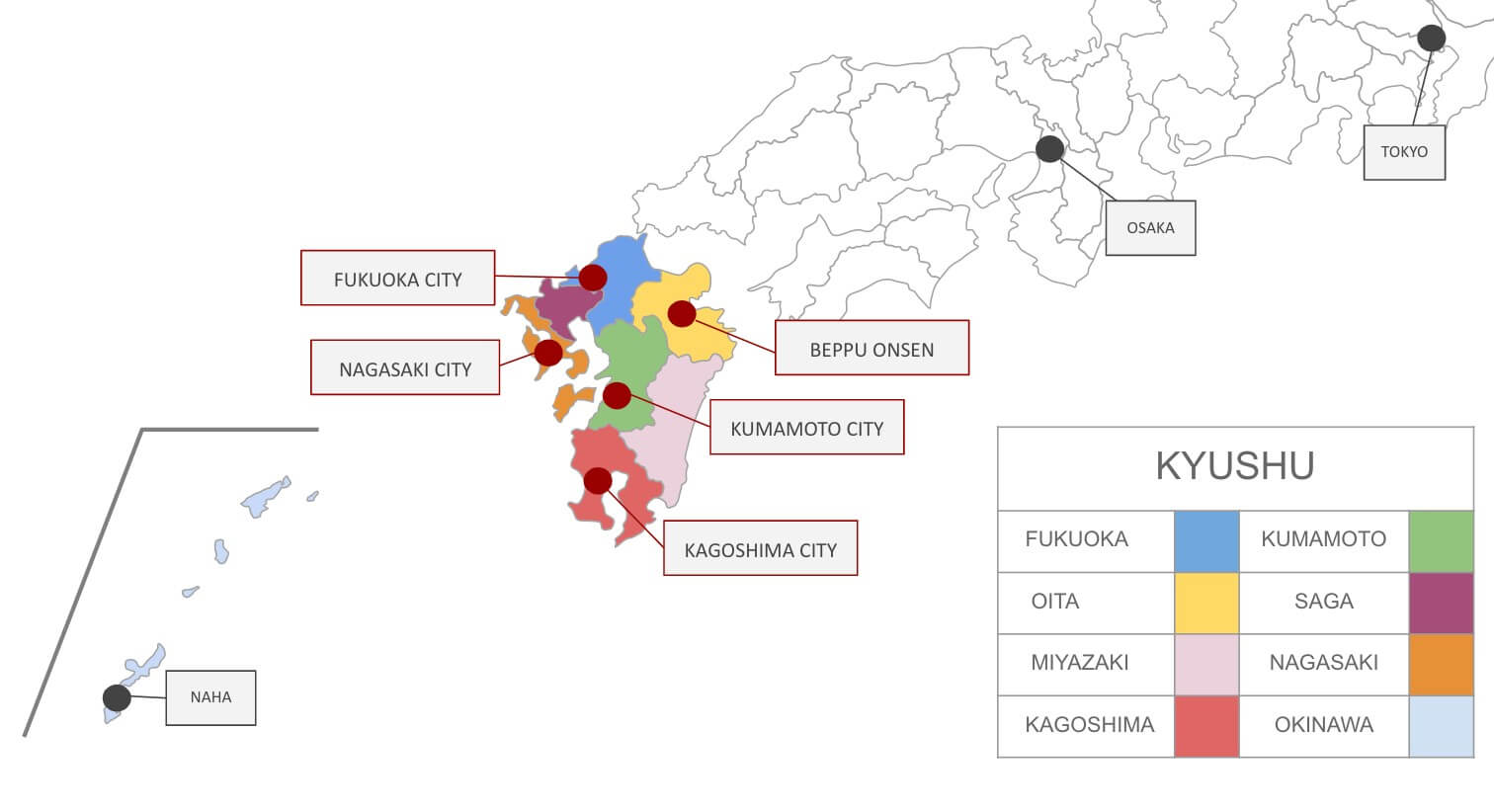
The tropical islands of Okinawa are also part of the Kyushu region however given their significant distance from the Japanese mainland, lying around 850km to the southwest of Fukuoka in the South China Sea, its best to consider them a separate destination.
WHERE IS KYUSHU?
Located to the southwest of Honshu, Kyushu is the third largest of Japan’s four main islands. Comprised of the prefectures of Fukuoka, Saga, Nagasaki, Kumamoto, Kagoshima, Miyazaki, Oita and Okinawa, Kyushu is separated from Honshu by a narrow strait but connected via both tunnels and bridges that carry road and rail traffic to the island*. This includes the Sany’o Shinkansen which runs from Osaka, Kobe and Hiroshima – all on Honshu – to Fukuoka – on Kyushu. Multiple airports and ferry services make the island readily accessible. Hakata Station in Fukuoka City is the largest and busiest station on Kyushu. As the terminus of both the San’yo Shinkansen and Kyushu Shinkansen lines, it acts as important transit point for many international visitors headed to the region. Fukuoka is also the largest city on Kyushu – serviced by Fukuoka Airport – while Nagasaki, Kumamoto and Kagoshima also rank among the island’s largest cities and most popular destinations.
*Okinawa is part of Kyushu however given the geographical distance of the Okinawan islands from the Japanese mainland and the fact they cannot be reached by road or rail, for travel purposes it’s best to consider Okinawa as a separate and distinct region.
30 BEST THINGS TO DO WHEN VISITING KYUSHU
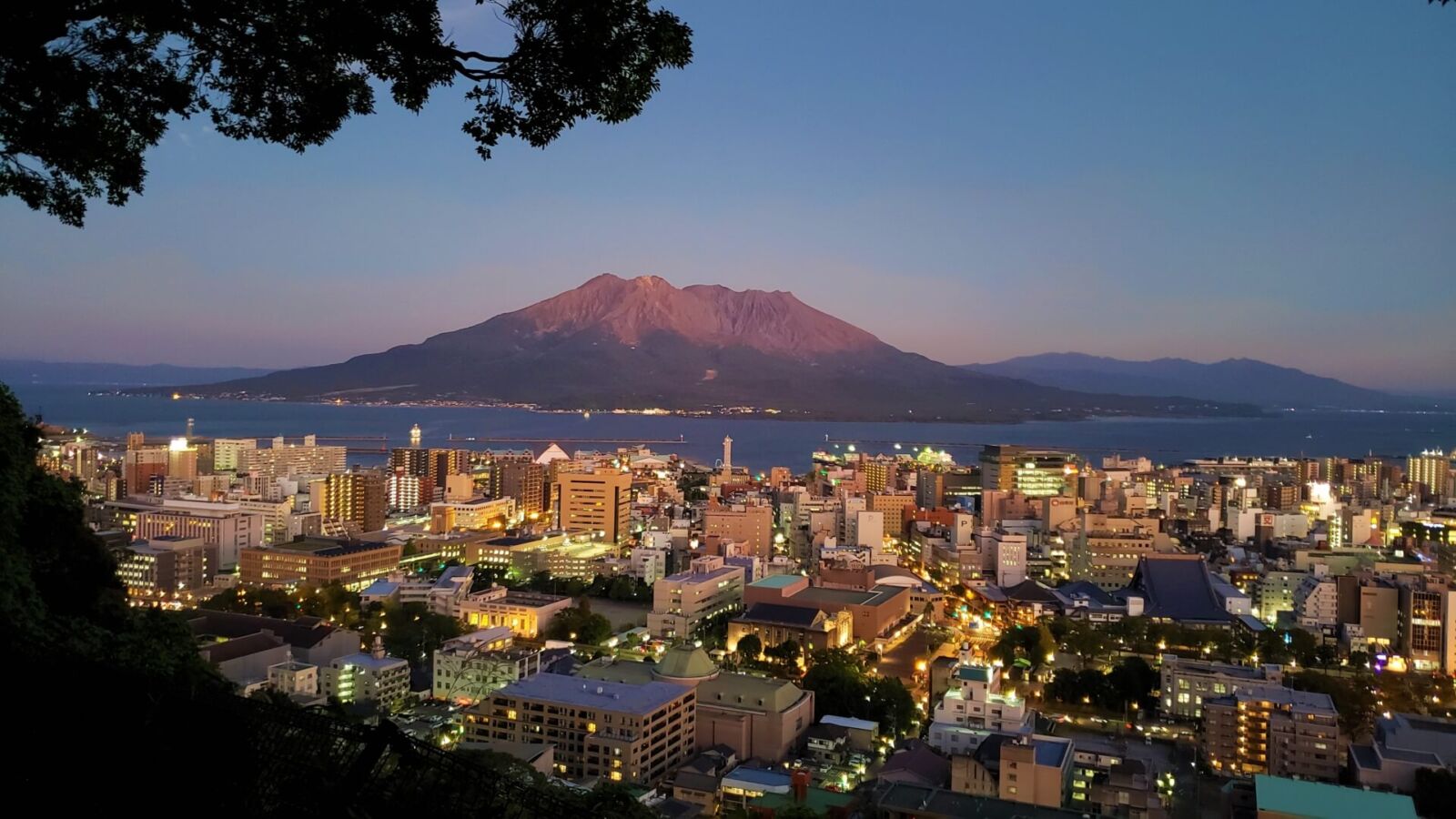
Kyushu is a diverse region consisting of multiple prefectures, cities and regional areas offering an enticing blend of cultural and natural attractions. In this section you’ll find our recommendation of the best things to do:
FUKUOKA / NAGASAKI / KUMAMOTO / BEPPU ONSEN / KAGOSHIMA
While these areas account for much of the Kyushu region, they don’t account for all of it and you’ll find plenty of other fantastic destinations and experiences in other areas. But for us, these are the best things to do and see when visiting Kyushu starting with the:
BEST THINGS TO DO IN & AROUND FUKUOKA
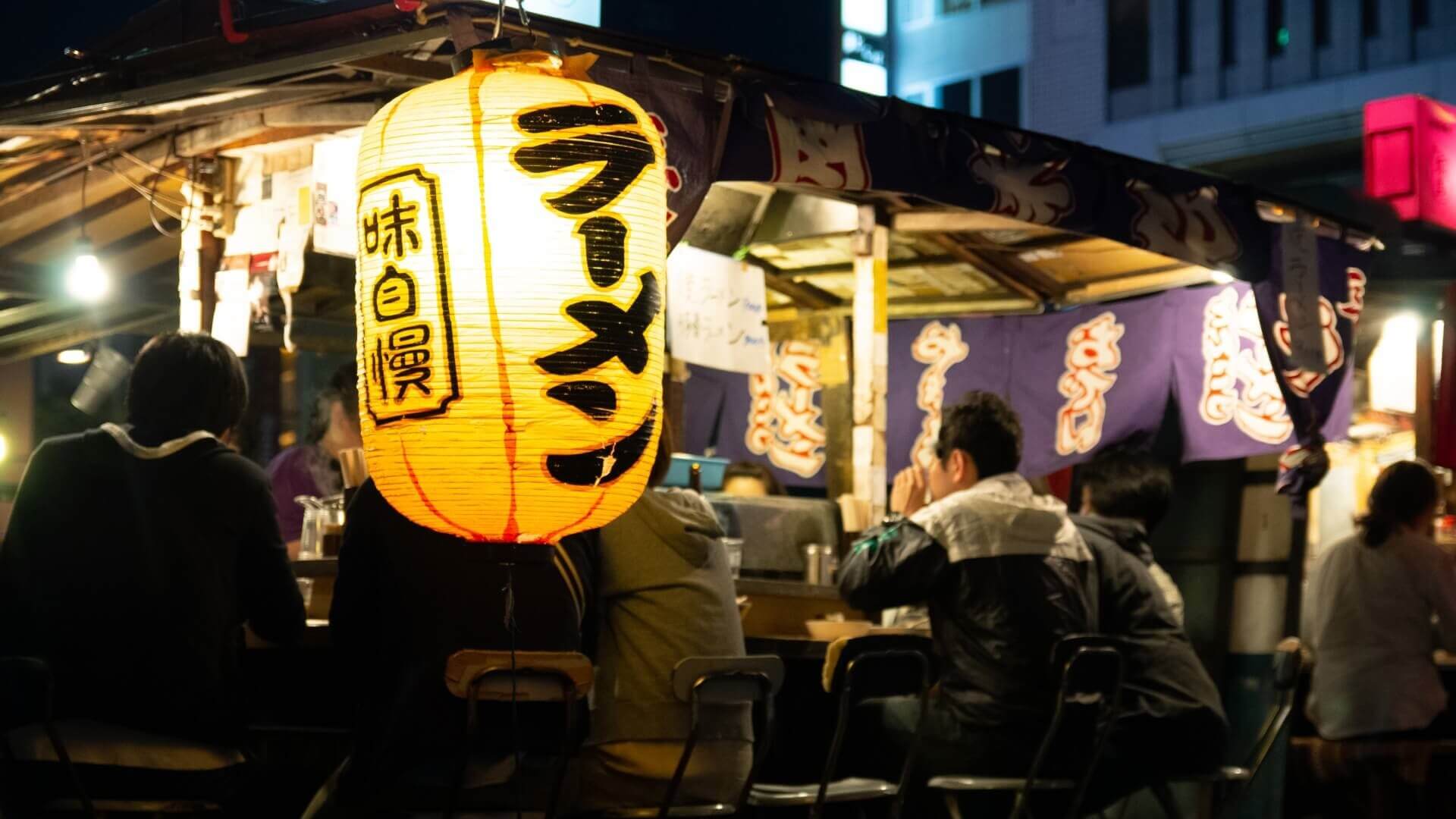
Fukuoka is the largest city in Kyushu and for many travellers, the gateway to the entire region. A vibrant and lively city, Fukuoka is all about good food and having fun before heading further into Kyushu to discover some of Japan’s most rewarding destinations. But before you do that, we recommend the following:
1 / HAKATA CITY DISTRICT / all year round
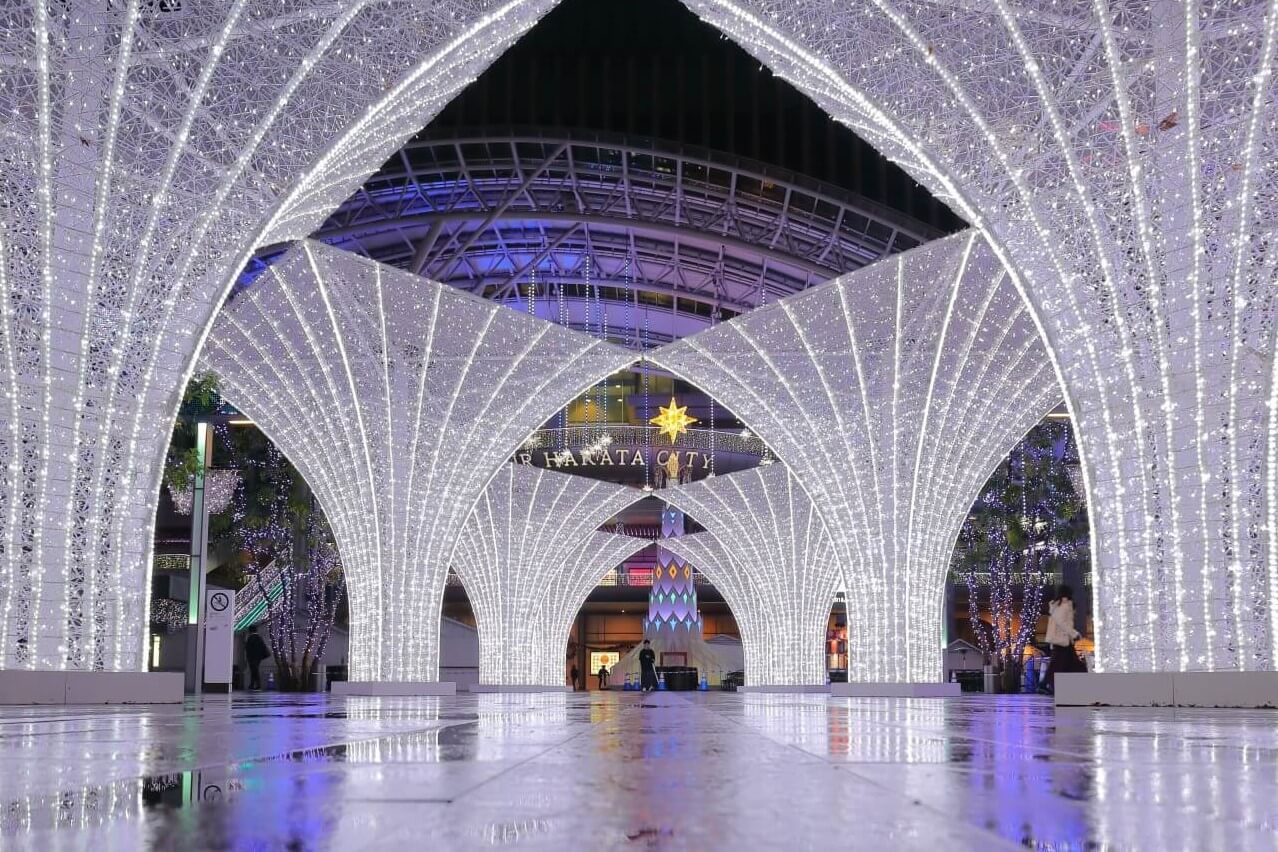
Referred to as ’Hakata City’, the area surrounding Hakata Station in Fukuoka is one of the city’s main business, shopping, dining and entertainment hubs. Amu Plaza has over 200 stores with the surrounding area offering many of the city’s best restaurants and nightlife. Fukuoka is a fantastic food city – most famous for its ramen, street stalls and seafood, see below for details – with the restaurants in the Hakata City being a gateway to the tasty treats of this vibrant city. You’ll also find the largest concentration of accommodation in this district of the city. For more information including links to accommodation listings, see our ‘Hakata Station Area’ hotel page.
2 / THE FOOD OF FUKUOKA / all year round
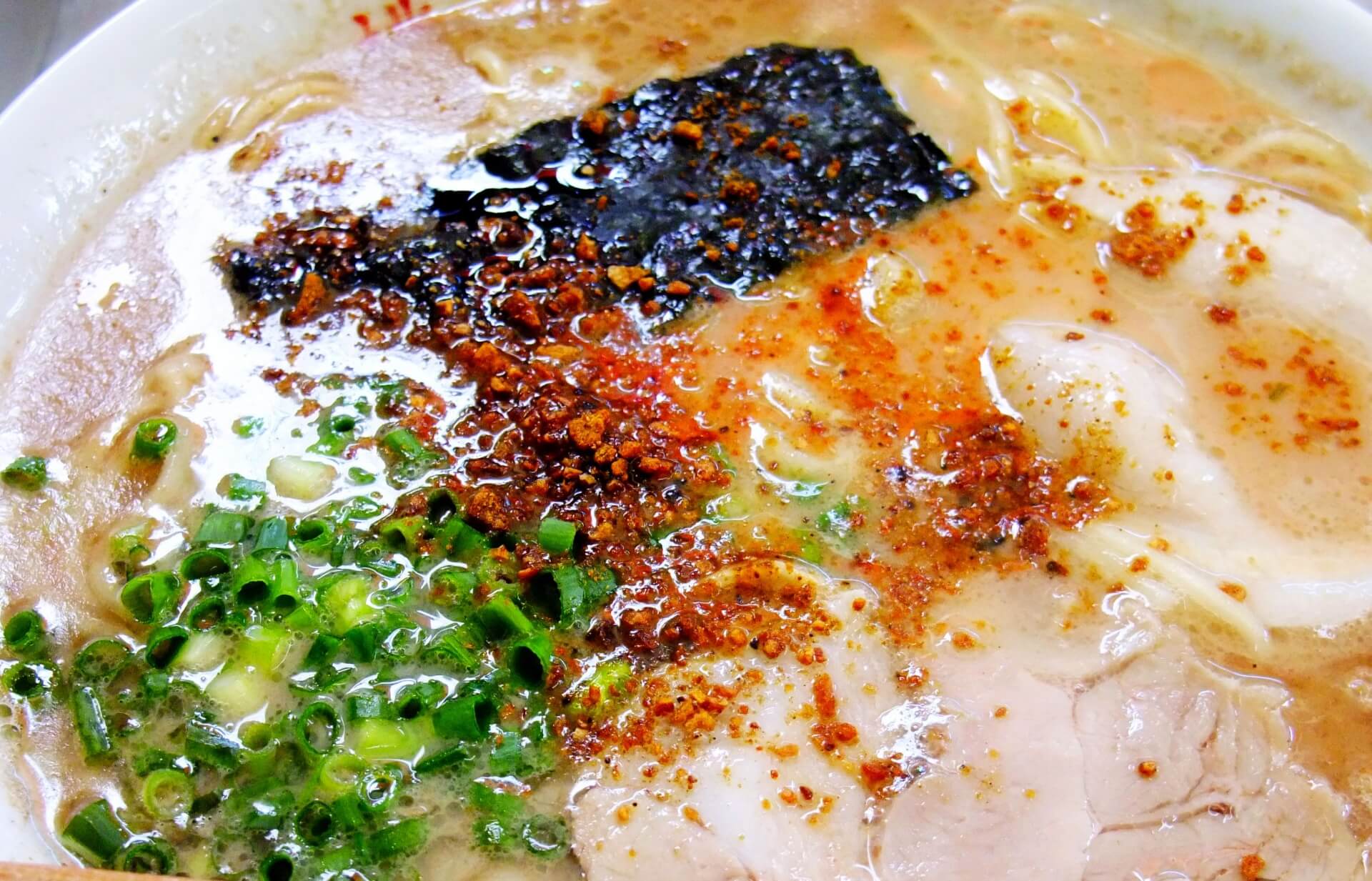
Fukuoka is one of Japan’s best food cities, most famous for its ramen and hot pots, street stalls and of course, indulgent seafood. Any conversation about food in Fukuoka has to start with its famous ‘tonkotsu’ ramen or ‘Hakata’ ramen; a pork-bone based silky-white broth with thin noodles and generous slices of pork meat. ‘Motsunabe’ is a hot pot of cow and pig offal, leek, sprouts and cabbage heated in a flavourful broth of ‘miso’ (soybean) and ‘shoyu’ (soy sauce).
These are other dishes reflect Fukuoka’s long connection to China and Korea, both of which have added to and enhanced the food traditions of the city, while its coastal location mean that there’s no shortage of fantastic seafood on offer at restaurants across the city.
3 / EAT AT FUKUOKA’S FAMOUS ‘YATAI’ / all year round
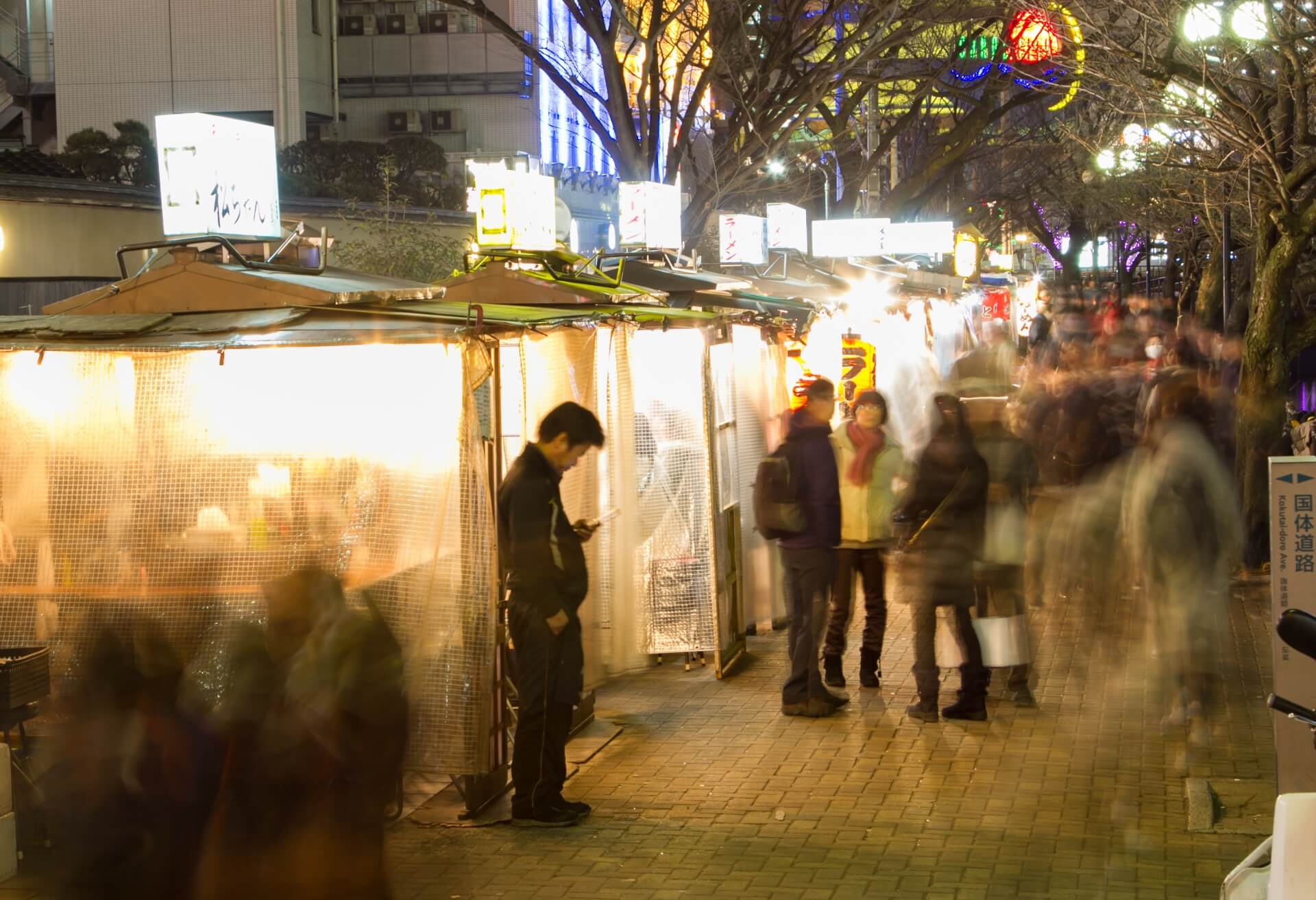
Any visitor to Fukuoka should make a point of eating-out of one of the city’s famous ‘yatai’ street food stalls. Usually seating seven to eight patrons, yatai are found throughout Fukuoka with the greatest concentration located in the southern tip of the city’s Nakasu Island. Given their small size, the atmosphere of each is typically cosy and a great place to engage with local people at night, who come to enjoy tasty treats including ‘yakitori’ (grilled chicken skewers), ‘oden’ (hot pot), ‘tonkotsu’ (a pork bone-based soup) and Fukuoka’s many famous types of ‘ramen’ (noodles). Operating days and times vary by stall however most are open daily – with one day off a week – from 18:00 to 02:00. Don’t expect much English but don’t let that put you off. You’ll get a warm welcome and no doubt the owner or other guests will help you order and make sure you enjoy your night. To reach Nakasu Island from Hakata Station, take the loop line bus – only a couple of minutes ride / JPY100 – or alternatively, it’s a 15 minute walk.
4 / ‘HAKATA GION YAMAKASE’ FESTIVAL / July
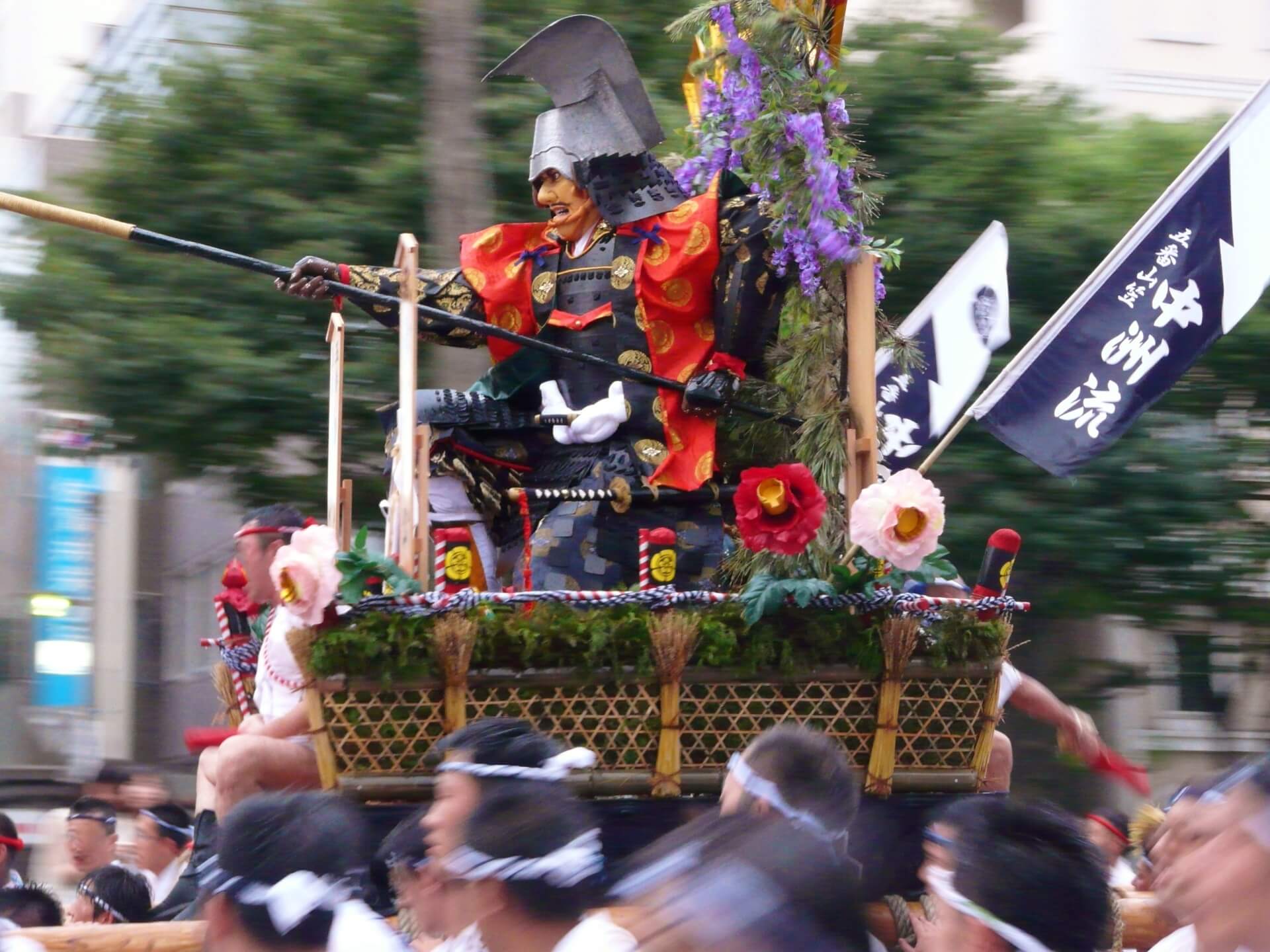
Taking place each year in the first half of July, the ‘Gion Yamakase’ Festival sees the seven neighborhoods of Hakata come together as they drag and pull elaborately decorated floats through the city. The ‘kazariyama’ floats are over 10 metres tall, of which there are 14 that are put on display around Fukuoka, while the 7 smaller ‘kakiyama’ floats are five metres tall, pulled by neighbourhood residents. For four days in the leadup to the festival climax, the seven neighbourhoods practice around the city before on the final day, around 1AM in front of Kushida Shrine, teams gather and begin a race over 5 kilometres that begins just before sunrise. Crowds line streets to watch the race, a raucous and fun affair well-worth witnessing for anyone heading to Kyushu in July. Kushida Shrine is the focal point of the festival, located around 20-minutes walk from Hakata Station or 5-minutes walk from Canal City.
5 / OHORI PARK / all year round
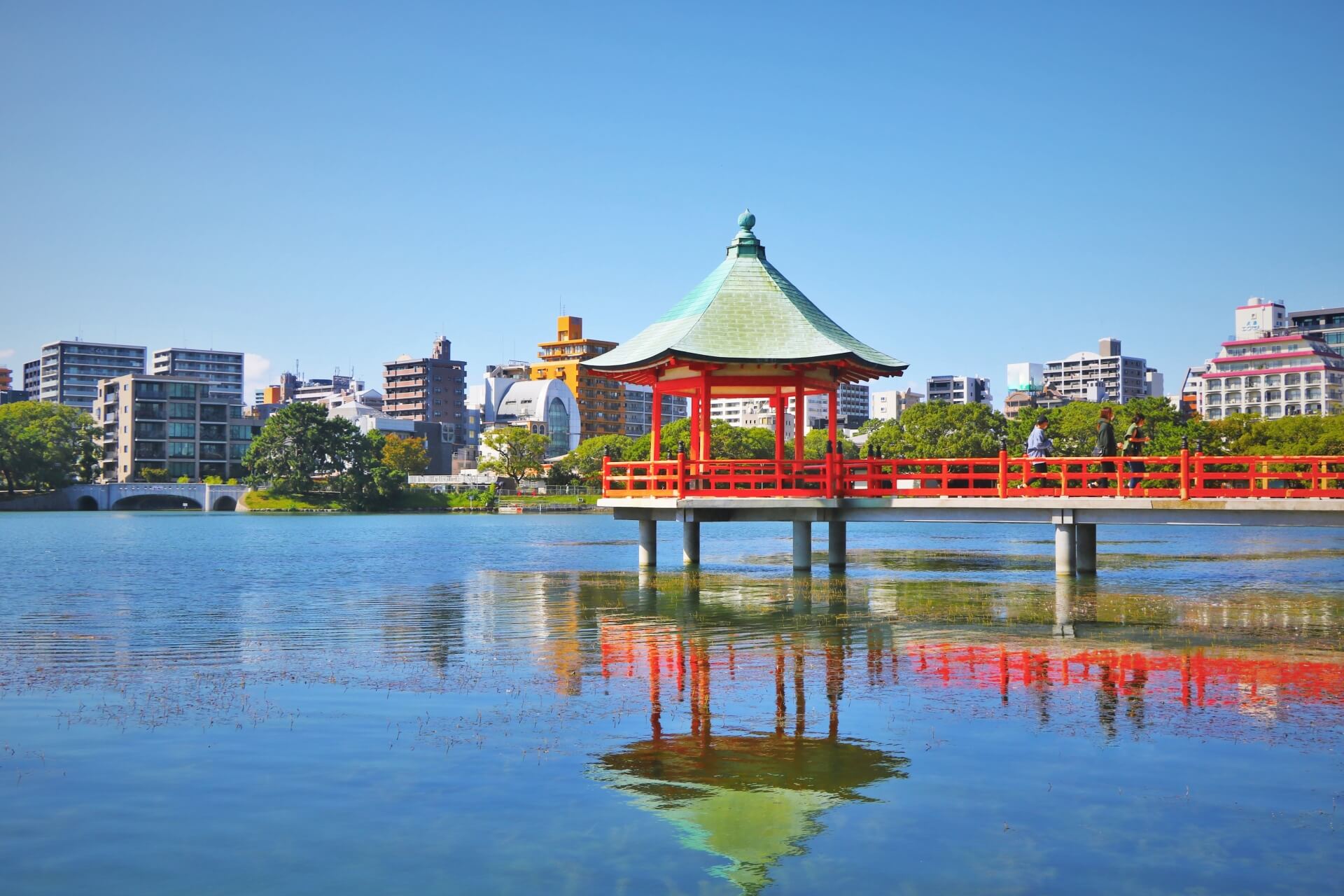
Ohori Park is a large park with a large central pond, in the centre of Fukuoka City. The current lake was once part of the moat system of the former Fukuoka Castle and while the castle no longer stands, the moat – ‘ohori’ in Japanese – was converted to a public park between 1926 and 1929. A walking trail leads visitors around the lake while three islands sitting within the lake are connected by traditional stone bridges. Fukuoka Art Museum and Ohori Park Japanese Garden are connected to the park, making it an enjoyable destination for a half-day visit. The park is immediately accessible from Ohori Koen Station, a 10-minute train ride for Hakata Station.
6 / CANAL CITY / all year round
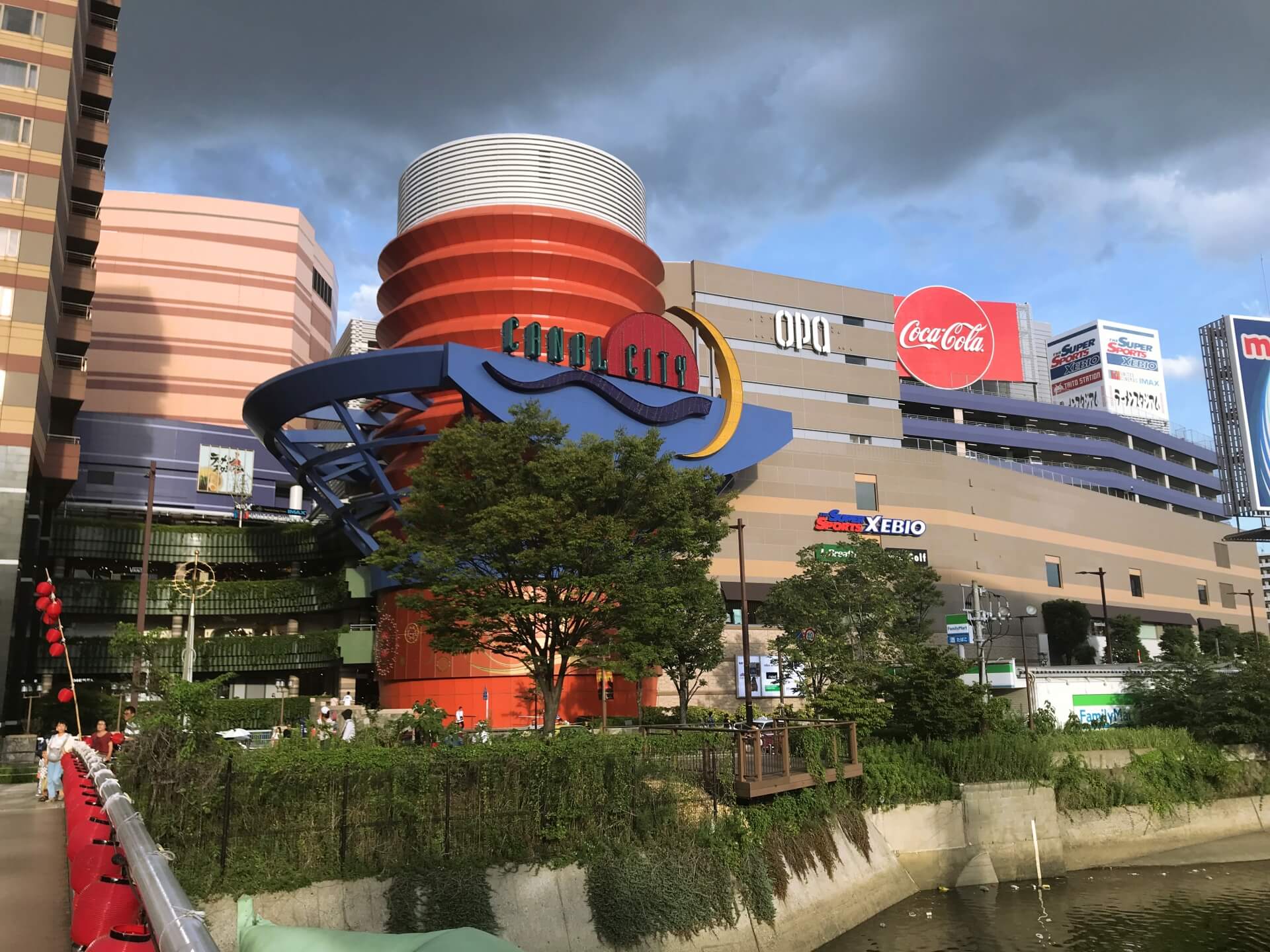
Canal City Hakata is a shopping and entertainment complex located around 10-minutes walk to the west of Hakata Station. It includes around 250 shops, cafes, restaurants, cinemas and hotels. The complex takes its name from a canal that dissects it and for the foodies among us, is worth visiting for its fifth floor ‘Ramen Stadium’ which features regional ramen restaurants from all over Japan. While it’s not the most engaging destination in Kyushu, Canal City is a good option if you have a few hours to fill while in Fukuoka, are in the mood for shopping or need another fill of ramen. It can be easily reached on-foot from Hakata Station – only 10 minutes – or a short ride using the loop line bus, only JPY100.
7 / DAZAIFU TENMANGU SHRINE / all year round
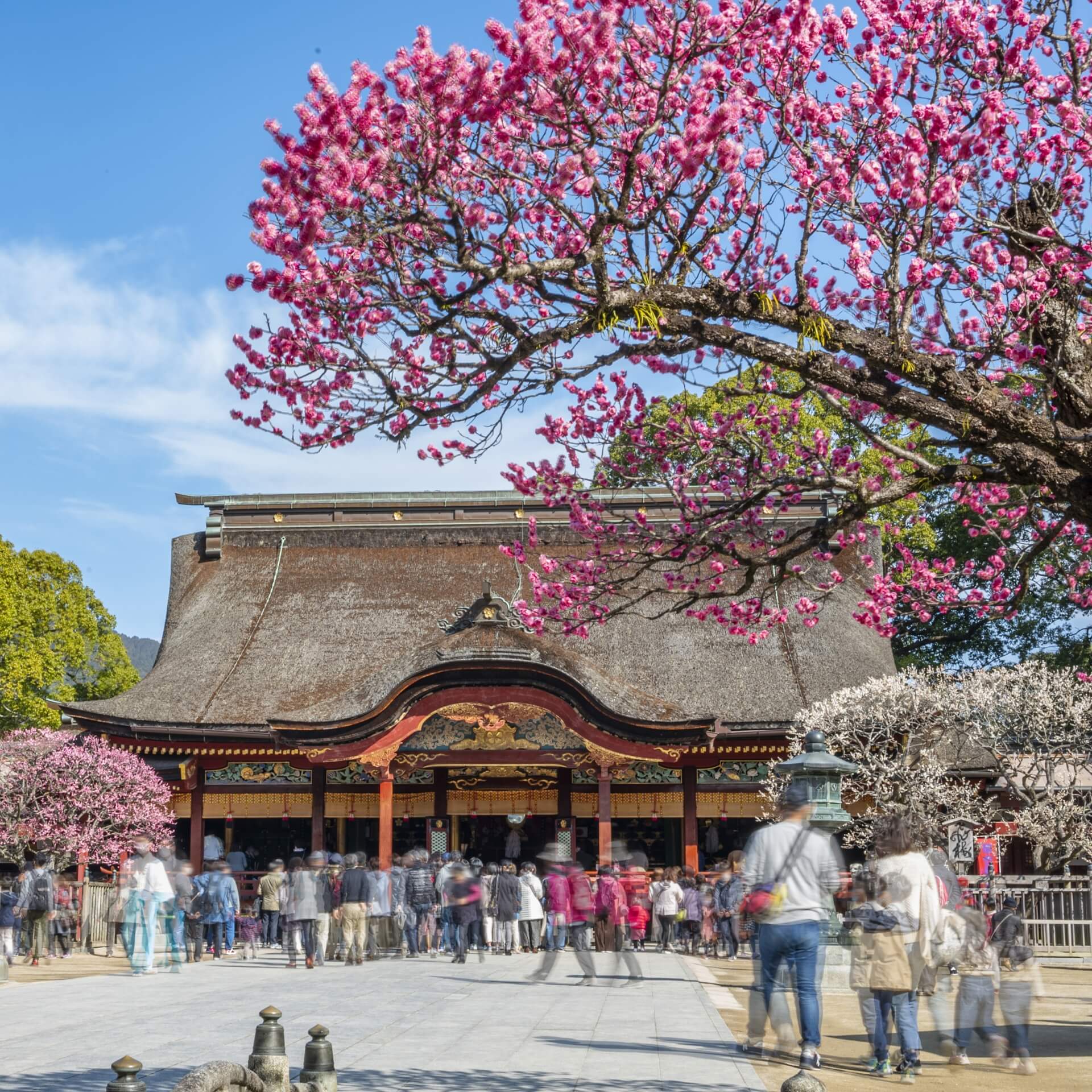
Dazaifu lies to the south of Fukuoka City. As the former administrative centre of the island of Kyushu, Dazaifu played a pivotal role in diplomatic relations with trading neighbours including China and Korea and in maintaining Japan’s western defences. Today, it is home to some beautiful temples and shrines including Tenmangu, a large shrine complex including a gate, central pond and garden and main hall. The shrine is surrounded by an estimated 6000 plum trees that bloom between late-February to mid-March. The shrine is open daily from 06:00 until 18:30 19:30 (depending on the season) and admission is free. To get there, services on the Kagoshima Line take around 40 minutes / JY490 to reach Dazaifu Station from Hakata Station. The shrine is immediately accessible from the station.
8 / KOMYOZEN-JI TEMPLE / all year round
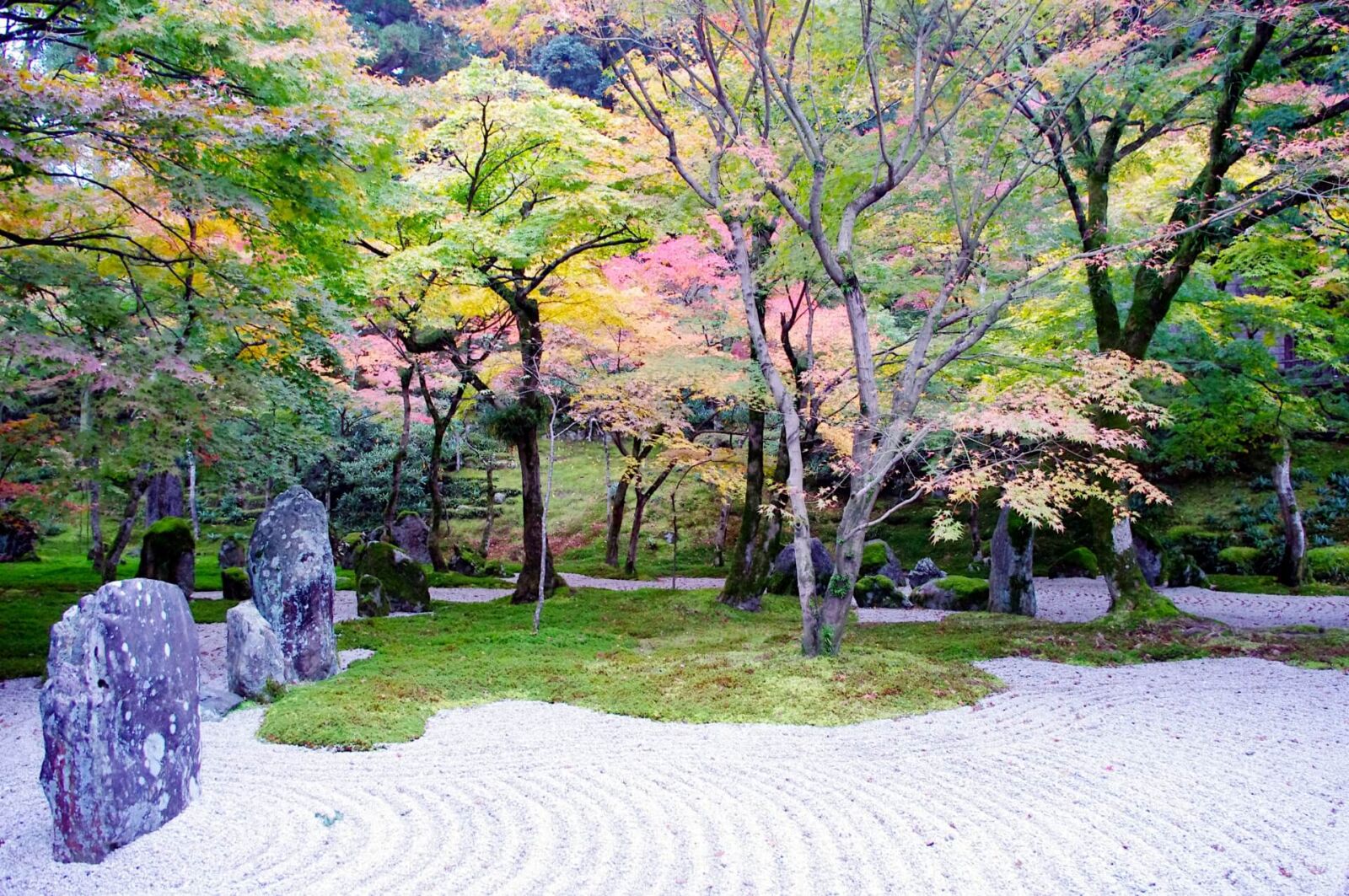
Komyozen-ji is a Zen temple belonging to the Rinzai sect, most famous for its traditional gardens including two rock gardens at the front and near of the temple. Located next to Dazaifu Tenmangu Shrine, enjoying both destinations as a morning or afternoon visit from Fukuoka is well-worth experiencing. Komyozen-ji is open daily from 09:30 to 16:30 and admission costs JPY500.
BEST THINGS TO DO IN & AROUND NAGASAKI
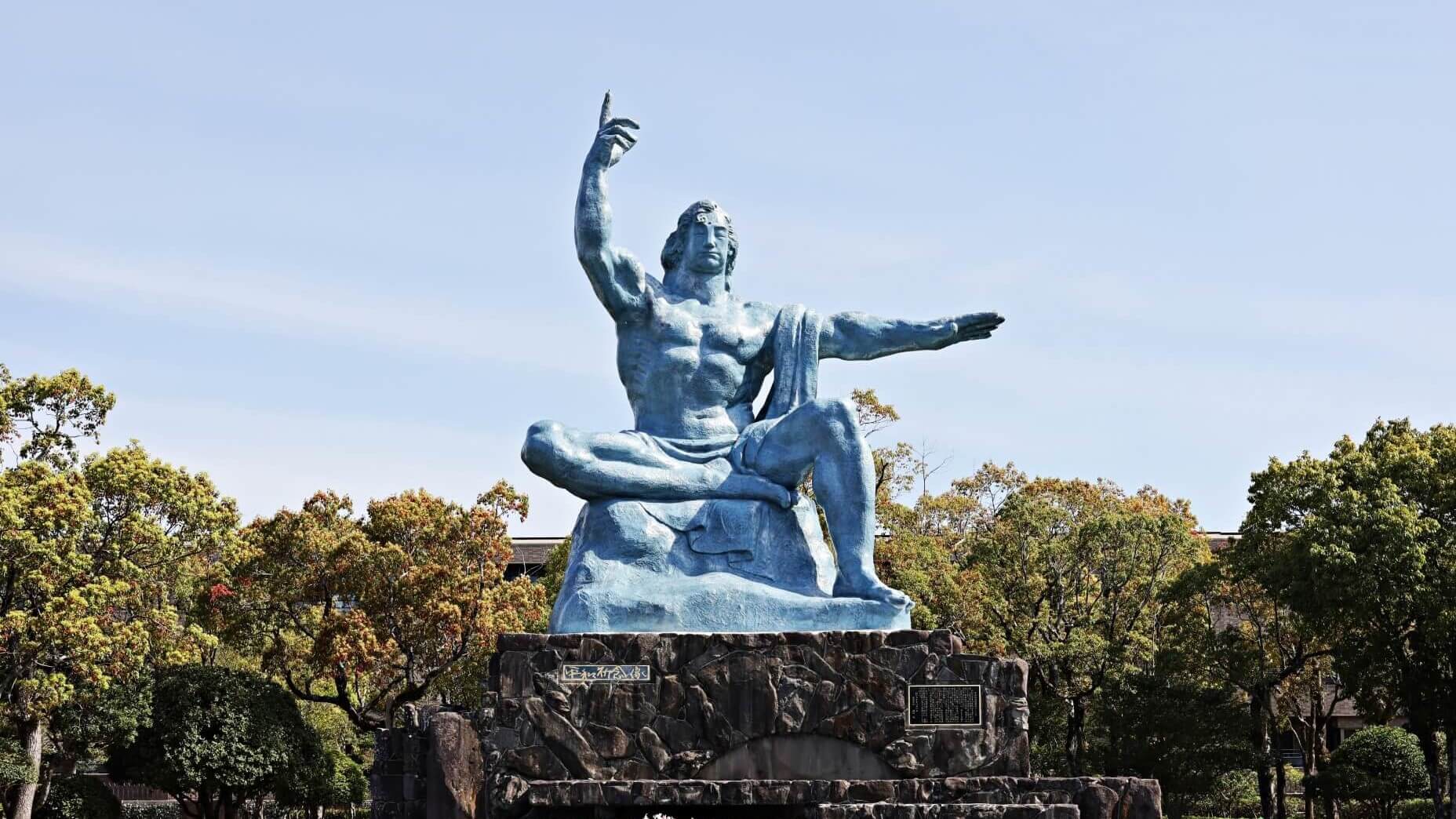
Nagasaki holds a tragic and poignant place in global history that needs little introduction. While the recent history of the city is known around the world, travellers may be less aware of Nagasaki’s history as a thriving trade city including the continued presence and influence of Chinese and Dutch traders for many centuries. But to begin, any first-time visitor to Nagasaki should head to the:
9 / NAGASAKI PEACE PARK & ATOMIC BOMB MUSEUM / all year round

On August 9th 1945 – three days after the bombing of Hiroshima – Nagasaki was subjected to the second use of an atomic weapon, in an attack that devastated much of city and kill tens of thousands of residents. While the bombing effectively brought the war to an end, the legacy of the attack continues to resonate in the global consciousness with many visitors to Japan traveling to Nagasaki in solemn pilgrimage to commemorate what took place. The Nagasaki Peace Park stands in testament to the bombing and includes the Hypocenter Park – marking the epicentre of the explosion – along with the Nagasaki Atomic Bomb Museum, and Nagasaki National Peace Memorial Hall for the Atomic Bomb Victims. Located around 10 minutes by tram to the north of Nagasaki Station, the park can be access anytime of day with the museum open daily (other than Dec.29-31) from 08:30 to 18:30 or 17:30 from September to April. Last entry is 30 minutes before closing and admission is JPY200. For accommodation listings in the city, see our ‘Nagasaki Station Area’ hotel page.
10 / NAGASAKI ‘KUNCHI’ FESTIVAL / October
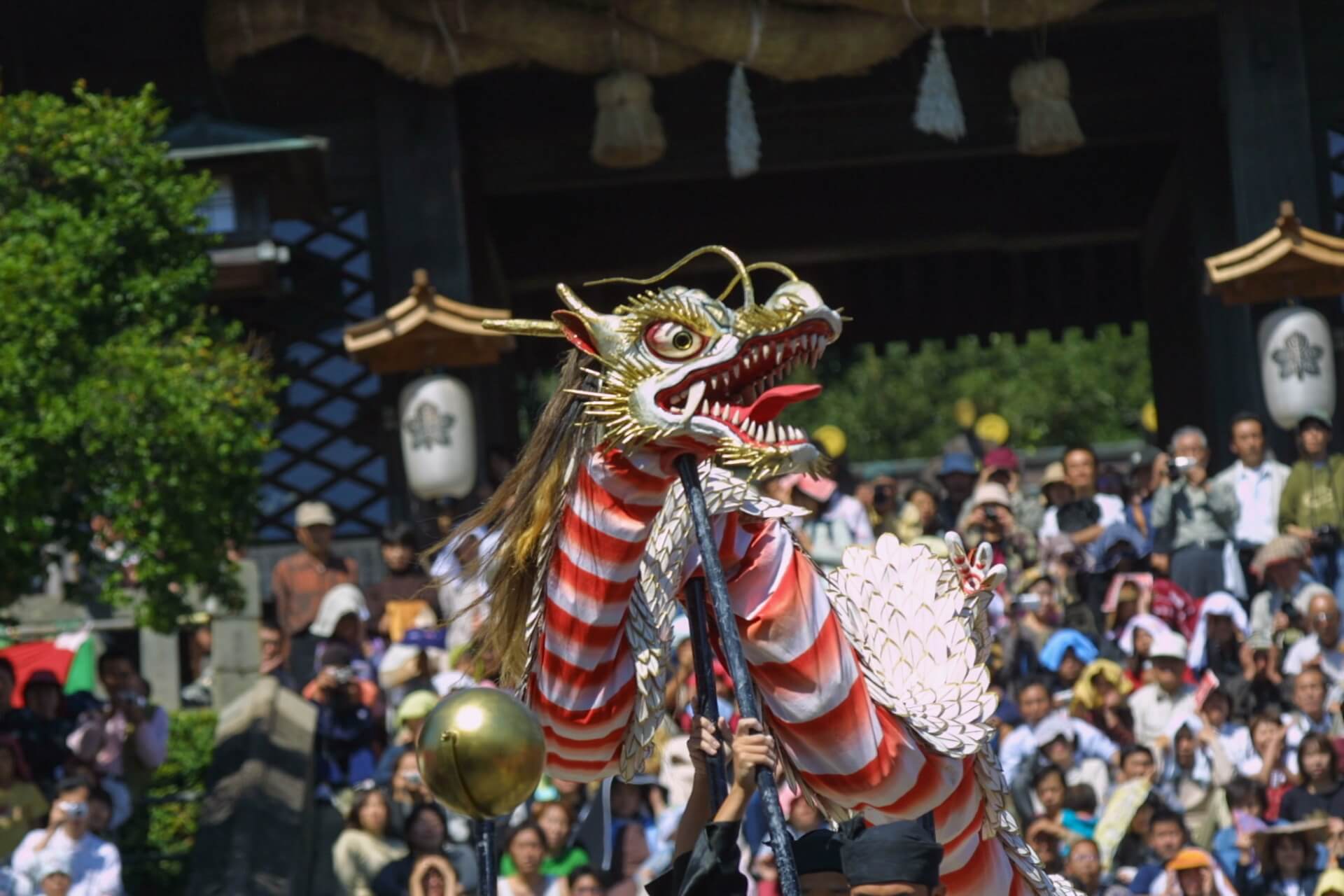
Taking place from October 7th to 9th each year, the Nagasaki ‘Kunchi’ Festival blends Japanese, Chinese and European elements in a celebration of the city’s cosmopolitan heritage as an important trading port. The festival sees the residents of seven districts of Nagasaki pull an elaborate float through the city and perform dances for large crowds of onlookers – an honour bestowed on each district only once every seven years, ensuring that each enjoys its chance to perform with true vigour. Events take place throughout the city with the main performances held at Suwa Shrine, Otabisho, Yasaka Shrine and Chuo Koen in the morning and evening of October 7th and mornings of October 8th and 9th. To see the performances you need to book reserved seating however unfortunately, tickets sell-out quickly and require Japanese language ability to arrange, so for most international visitors, it won’t be possible. However, it’s a great time of year to visit Nagasaki as the city celebrates its culturally diverse and colorful heritage.
11 / ‘SHINCHI’ CHINATOWN / all year round
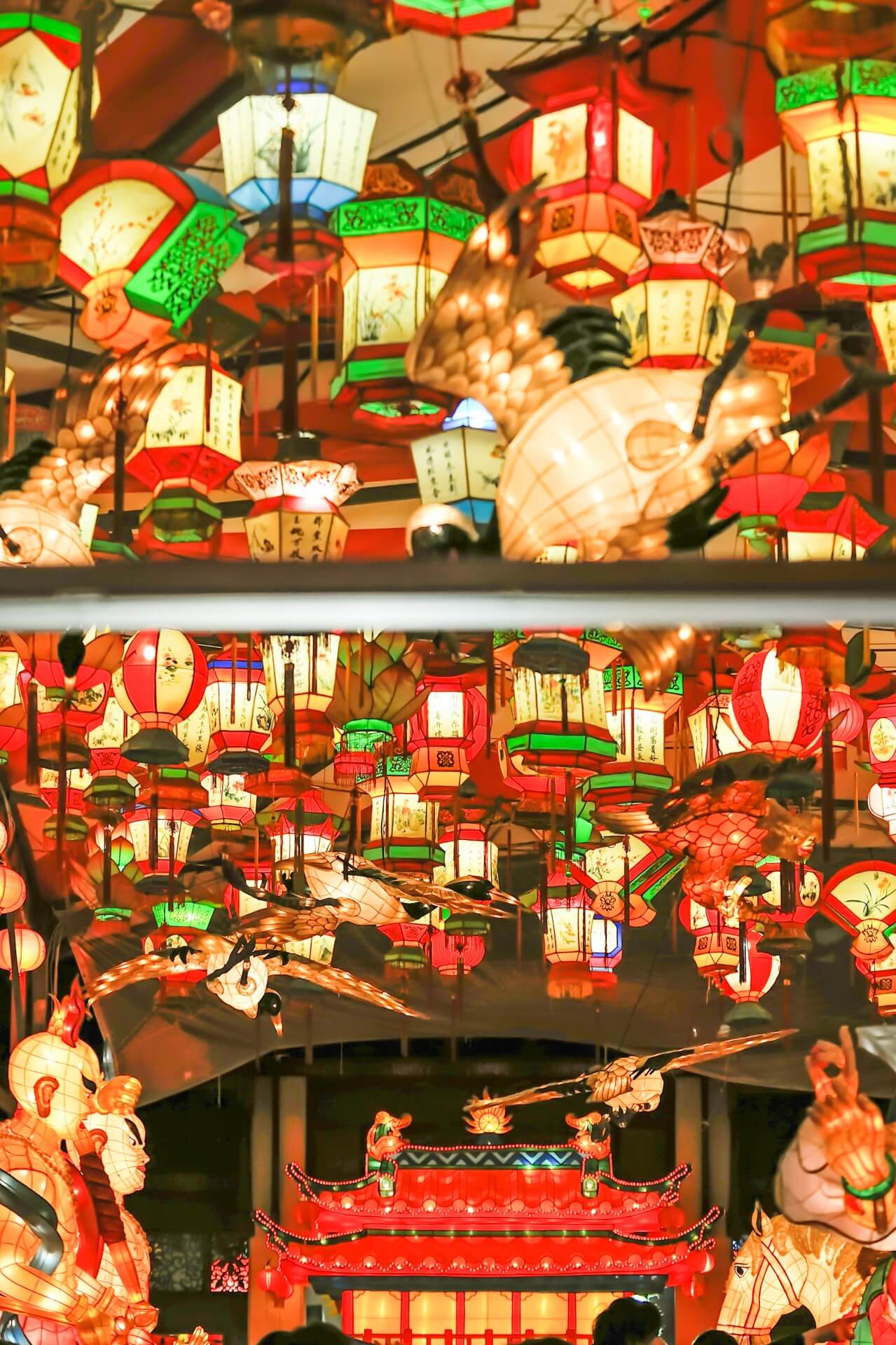
Nagasaki’s location at the western tip of Japan has long equated to a strong connection with China, with Chinese and Dutch the only traders allowed to enter the city during Japan’s self-imposed years of isolation. Nagasaki’s ‘Shinchi’ is Japan’s oldest Chinatown district and home to plenty of great restaurants, usually open from 11:00 to 15:00 and 17:00 to 21:00, and at its most lively during the Nagasaki Lantern Festival held to mark Lunar New Year sometime between late-January to early-March each year. The district is located around 20 minutes to the south of Nagasaki Station or a short tram ride along lines 1 or 5. For more information including links to accommodation listings, see our ‘Nagasaki: Chinatown Area’ hotel page.
12 / DEJIMA / all year round

Much like the Chinese, Dutch traders were also allowed to remain in Nagasaki during Japan’s self-isolation, although under tight controls and restricted to the man-made island of Dejima at all times. While the former island is now part of the city thanks to surrounding land being reclaimed, a number of historical buildings including Dutch residences, warehouses and gates remain, allowing visitors to glimpse back into Nagasaki’s not so distant past. The district is located around 15 minutes walk from Nagasaki Station or only a short tram ride along line 1.
13 / GUNKANJIMA / all year round
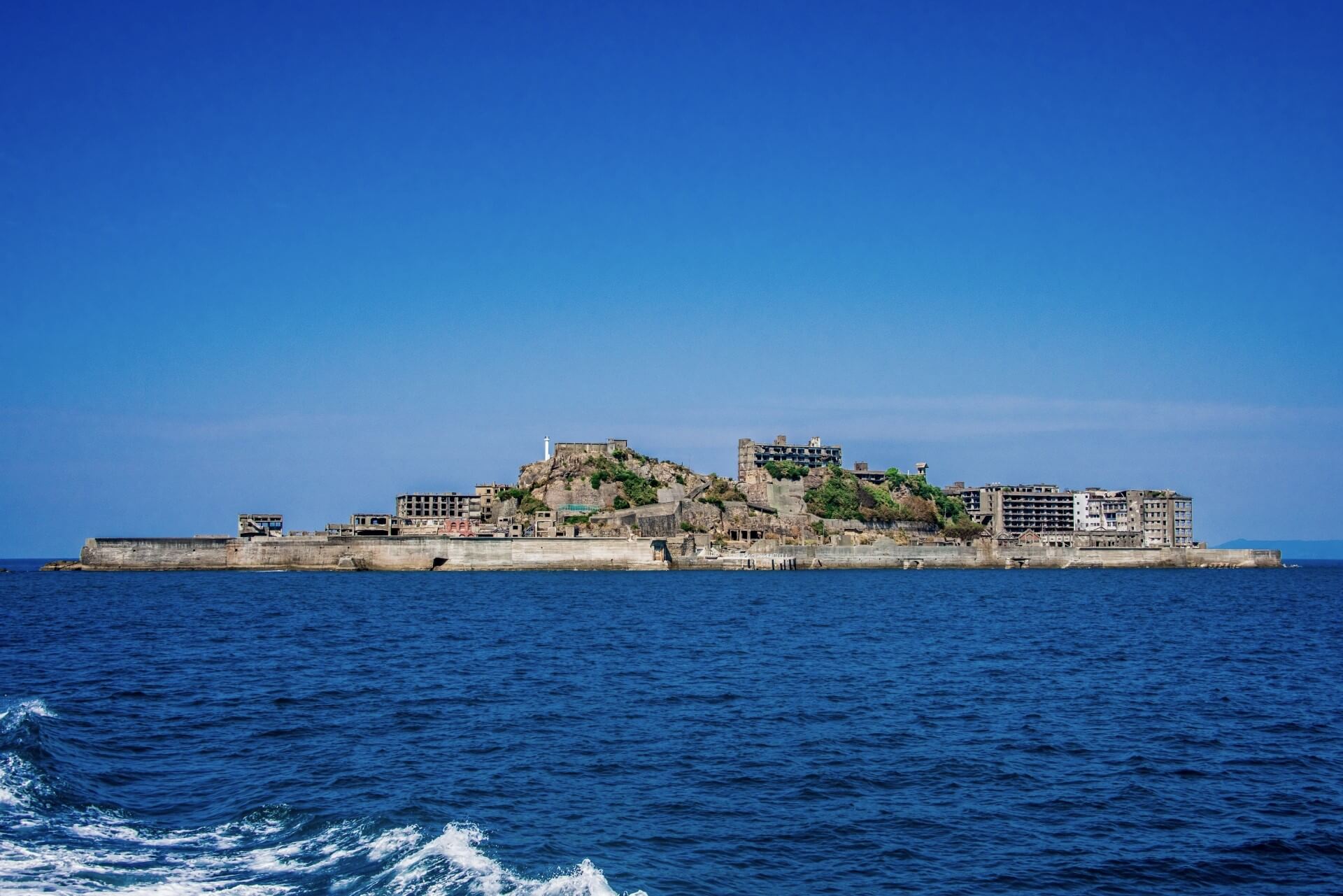
Once one of the most densely populated places on earth, the small island of Gunkanjima lies around 20 kilometres from Nagasaki. The island – measuring only 480 metres in length and 150 metres in width – served as a coal mine and place of residence for more than 5000 people, including workers and their families. Coal-mining started on the island in the late-1800s, and over time, the build-up of structures including fortified seawalls, came to resemble a battleship and popularisation of the name ‘Gunkanjima’ or ‘Battleship Island’.
Abandoned in 1974, the region’s severe typhoons have damaged and reduced much of the island, leaving an eerie, post-apocalyptic industrial landscape made famous by the James Bond film ‘Skyfall’. Multiple companies operate tours to the island from Nagasaki Port, taking around three hours – including one hour on the island – for around JPY4000 per person.
14 / SHIMABARA PENINSULA & MOUNT UNZEN / all year round
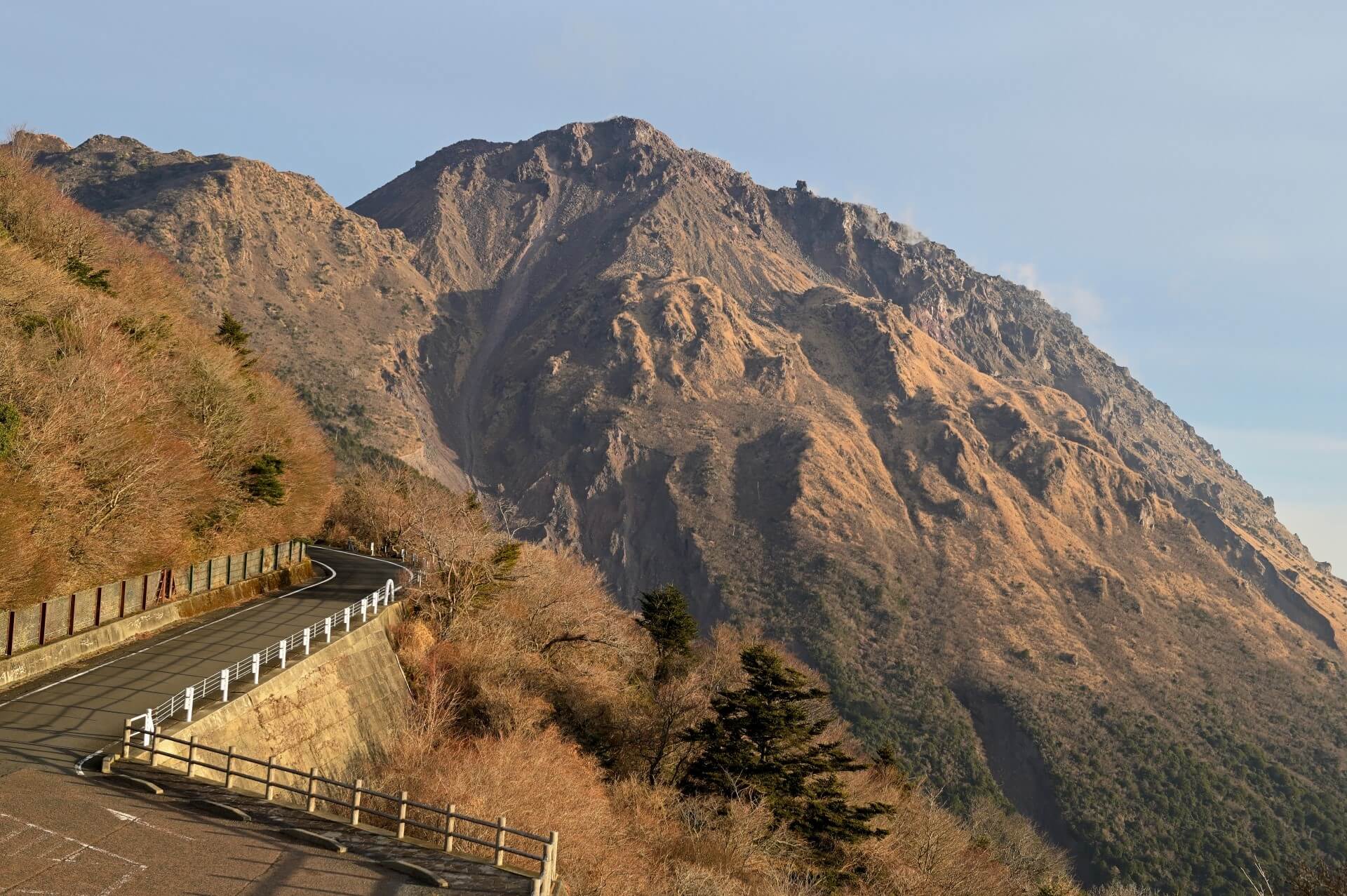
Shimbara Peninsula lies to the east of Nagasaki City, an area dominated by Unzen-Amakusa National Park and focal point of Mount Unzen – one of Japan’s most active volcanoes. Despite this, it is a popular destination for hikers who come to enjoy its trails, dramatic scenery and the enticement of Unzen Onsen as a place of rest and relaxation – see below for further details. Visitors can drive as far as Nitatoge Pass from where the Unzen Ropeway ascends further up the mountain. Late-October to mid-November are especially popular times to visit as the mountain offers a rare chance in Kyushu to enjoy spectacular autumn leaves with the added enticement of then staying overnight at Unzen Onsen. The ropeway operates all-year-round, open daily from 08:30 to 17:00. A one-way tickets costs JPY730 while a return journey is JPY1290. To get there, buses from Nagasaki take around 100 minutes / JPY1850 however services are infrequent meaning that renting a car and driving yourself will be the best option.
Mt. Unzen is an active volcano and your personal safety should be your first priority. The Japan Meteorological Agency provides real-time advice and warnings for the entire country. Prior to visiting Unzen, we recommend checking the JMA website.
15 / UNZEN ONSEN / all year round
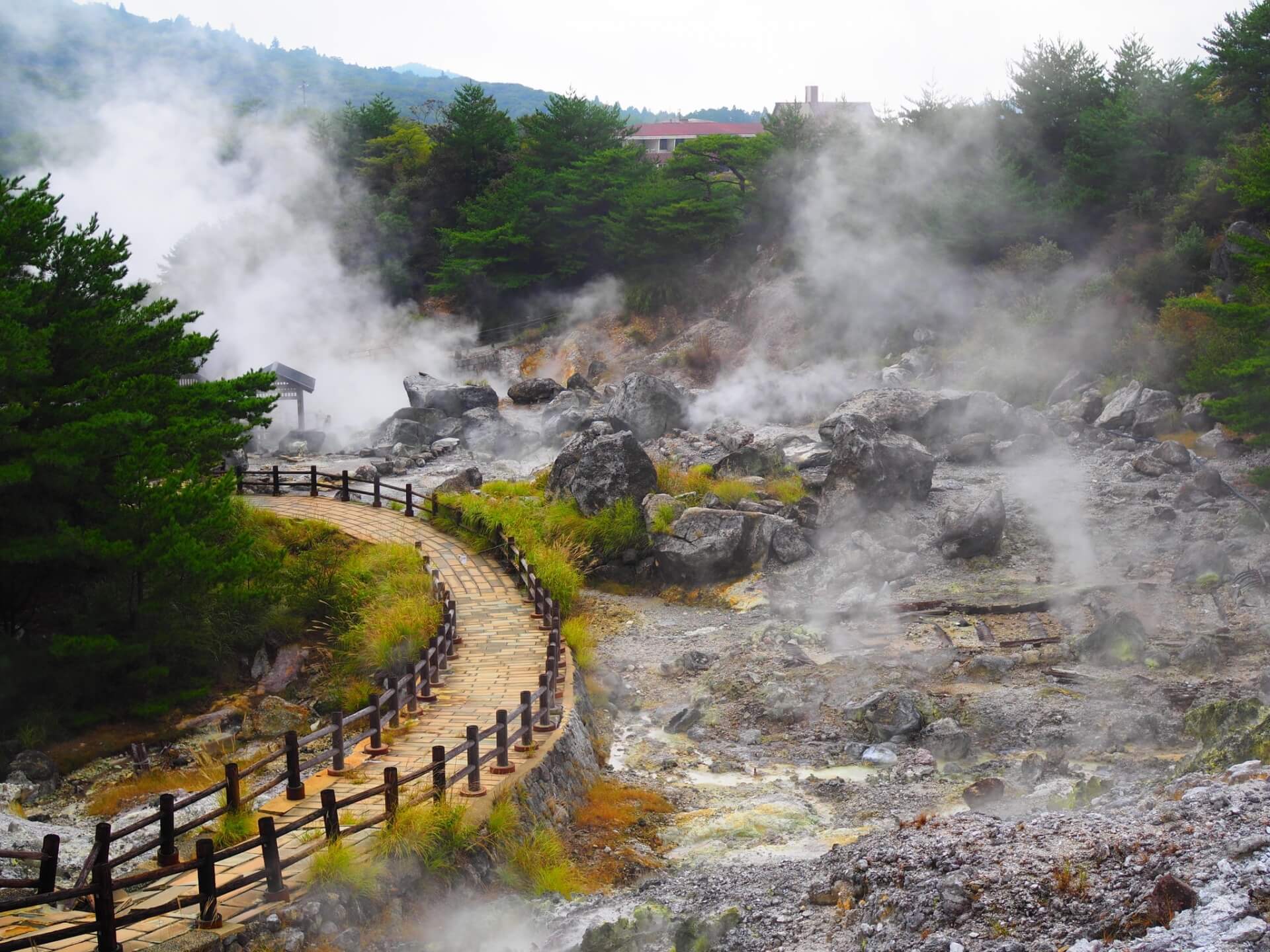
The hot spring town of Unzen Onsen lies on the slopes of Mount Unzen, surrounded hot spring fields that serve as a constant reminder of the volcanic activity below. The fields are dissected by paved trails that forge a safe route past steam vents, mud pools, and bubbling hot springs. Much like most onsen towns, there are plenty of hotels and guesthouses to choose from, each of which will have its own in-house baths to enjoy. Buses run to Unzen Onsen from Shimabara Station (50 minutes / JPY850), Isahaya Station (90 minutes / JPY1400) and less frequently, Nagasaki Station (100 minutes / JPY1850). For more information including links to accommodation listings, see our ‘Unzen Onsen Area’ hotel page.
BEST THINGS TO DO IN & AROUND KUMAMOTO
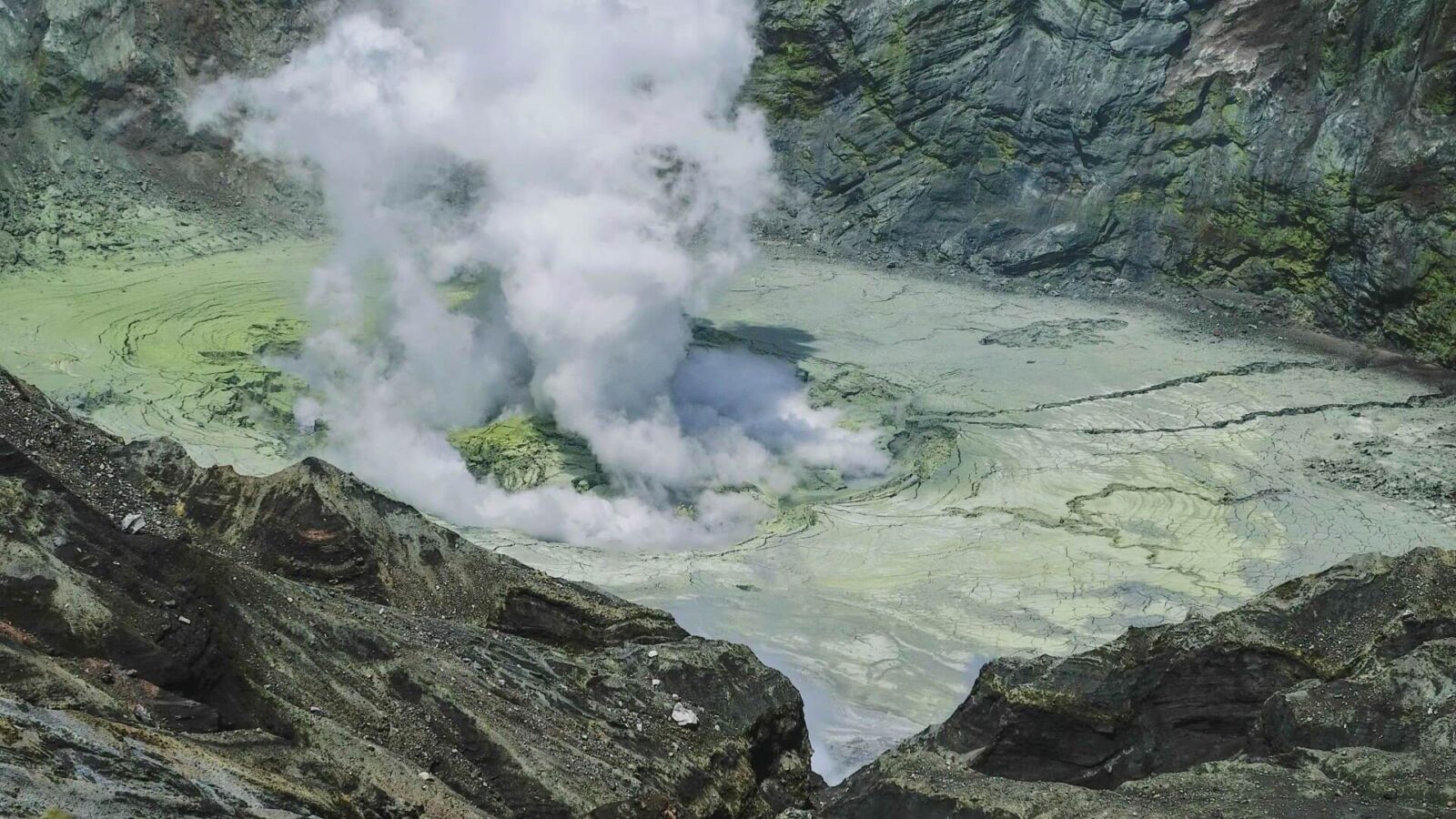
Most famous for its castle, Kumamoto is an easy destination to reach thanks to the Kyushu Shinkansen. Once there you’ll discover an intriguing mix of cultural, natural attractions and cultural-natural crossover of one of Kyushu’s best traditional hot spring towns. Any discussion of what to do when visiting Kumamoto has to start with:
16 / KUMAMOTO CASTLE / all year round*
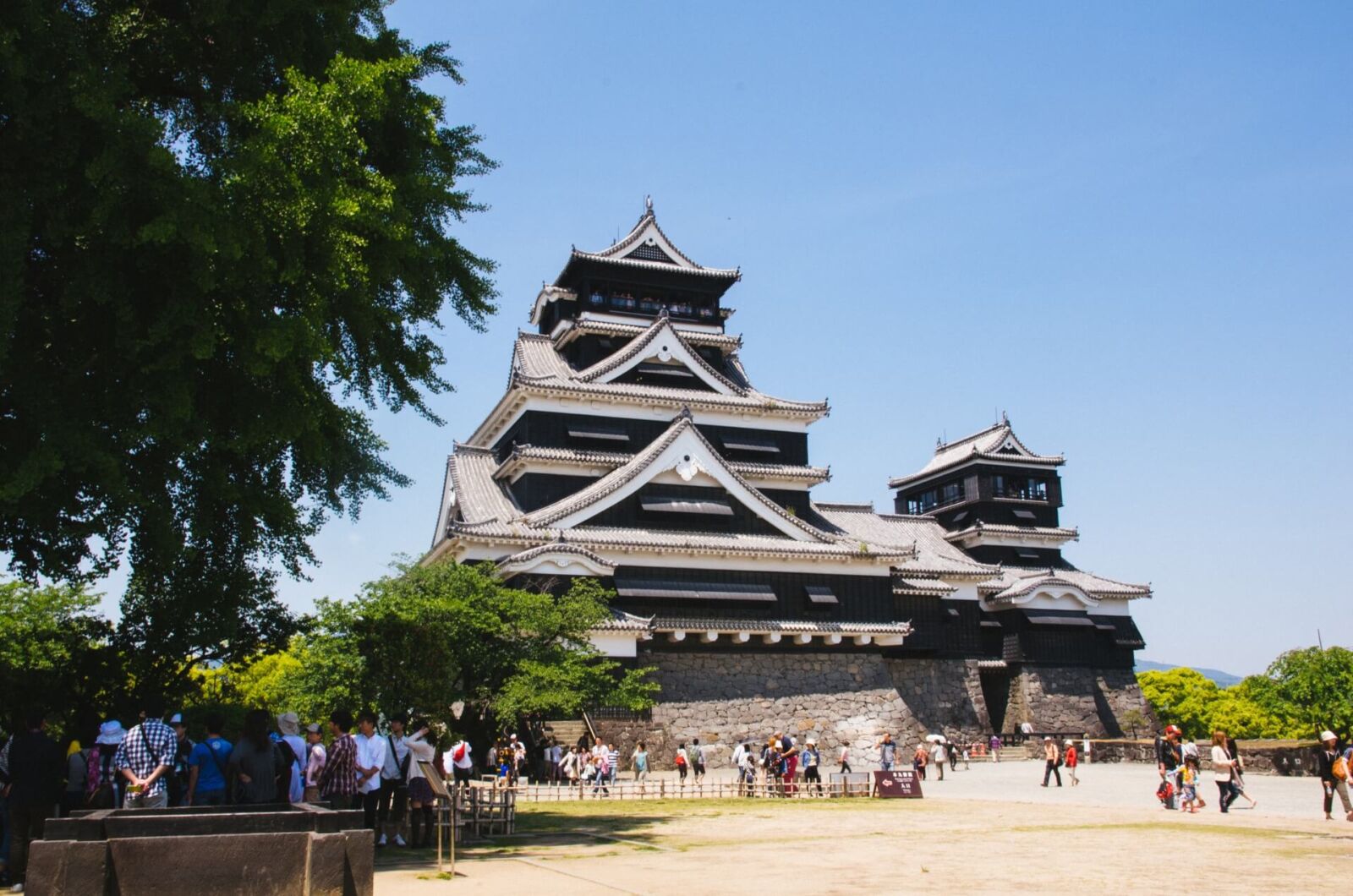
Considered one of Japan’s three most impressive castles – along with the Himeji and Matsumoto – Kumamoto Castle is something of a must-see for any first-time visitor to the city. Originally constructed in the early 17th century, the castle’s ‘tenshu’ (main tower/keep) is a reconstruction however many ancillary buildings include elements of the original structures.
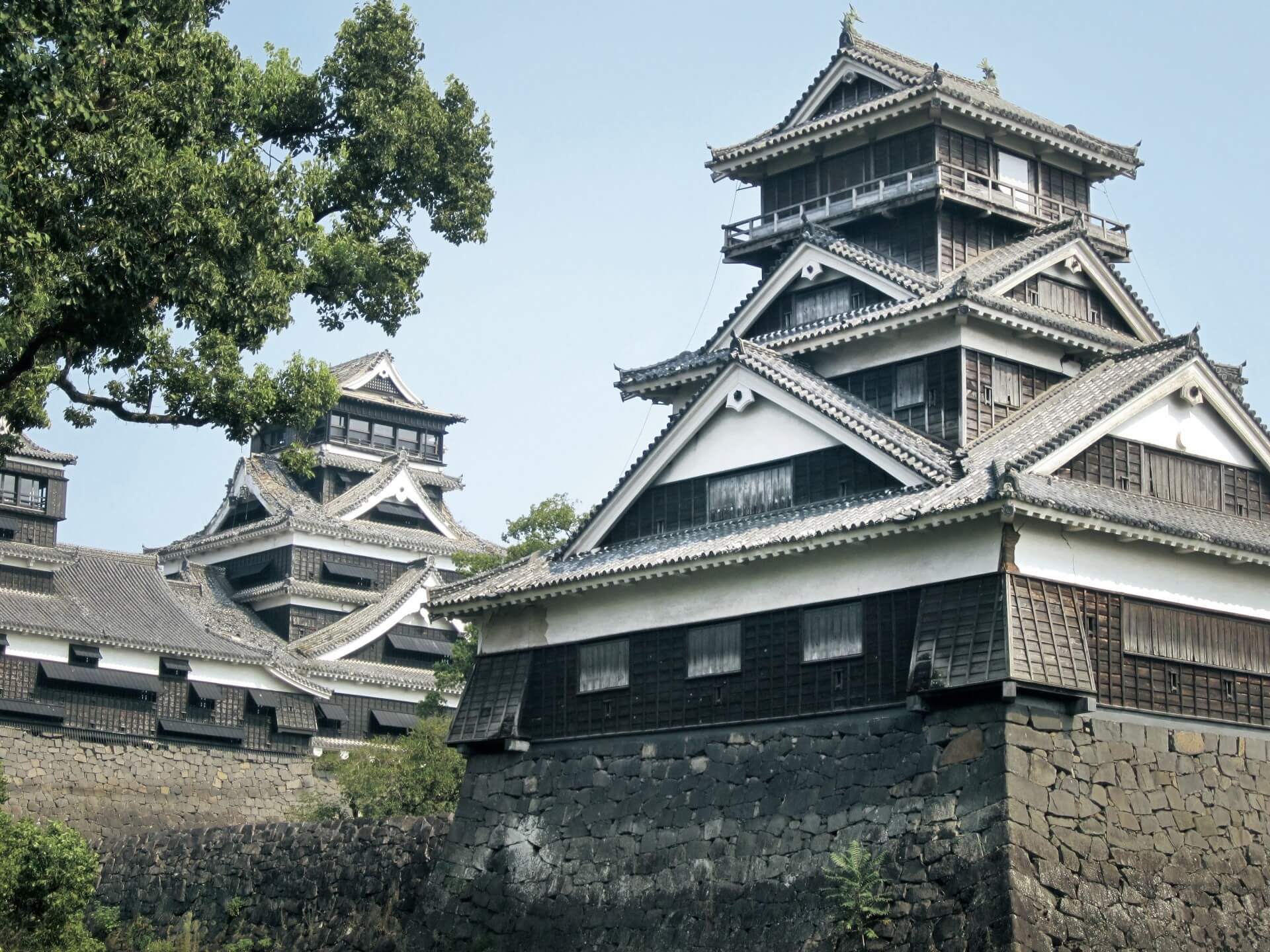
A large and well-fortified castle, there’s plenty to explore when visiting with around 800 cherry trees spread throughout the surrounding park. Blooming in late-March to early-April, Kumamoto Castle is a popular cherry blossom spot while continuing to attract visitors throughout the year. It’s located around 15 minutes by tram from JR Kumamoto Station and costs JPY170 for a one-way journey. The castle grounds can be accessed at all times of day, with the castle keep open daily from 09:00 to 17:00. Admission is JPY800. For listings of accommodation nearby the castle, see our ‘Kumamoto Castle Area’ hotel page.
*please note, Kumamoto Castle experienced significant damage during an earthquake in 2016. While the main tower has now been repaired and is open to the public, sections of the castle are currently being restored and cannot be seen due to scaffolding and ongoing work. Restoration work is set to continue for many years.
17 / SUIZENJI GARDEN / all year round
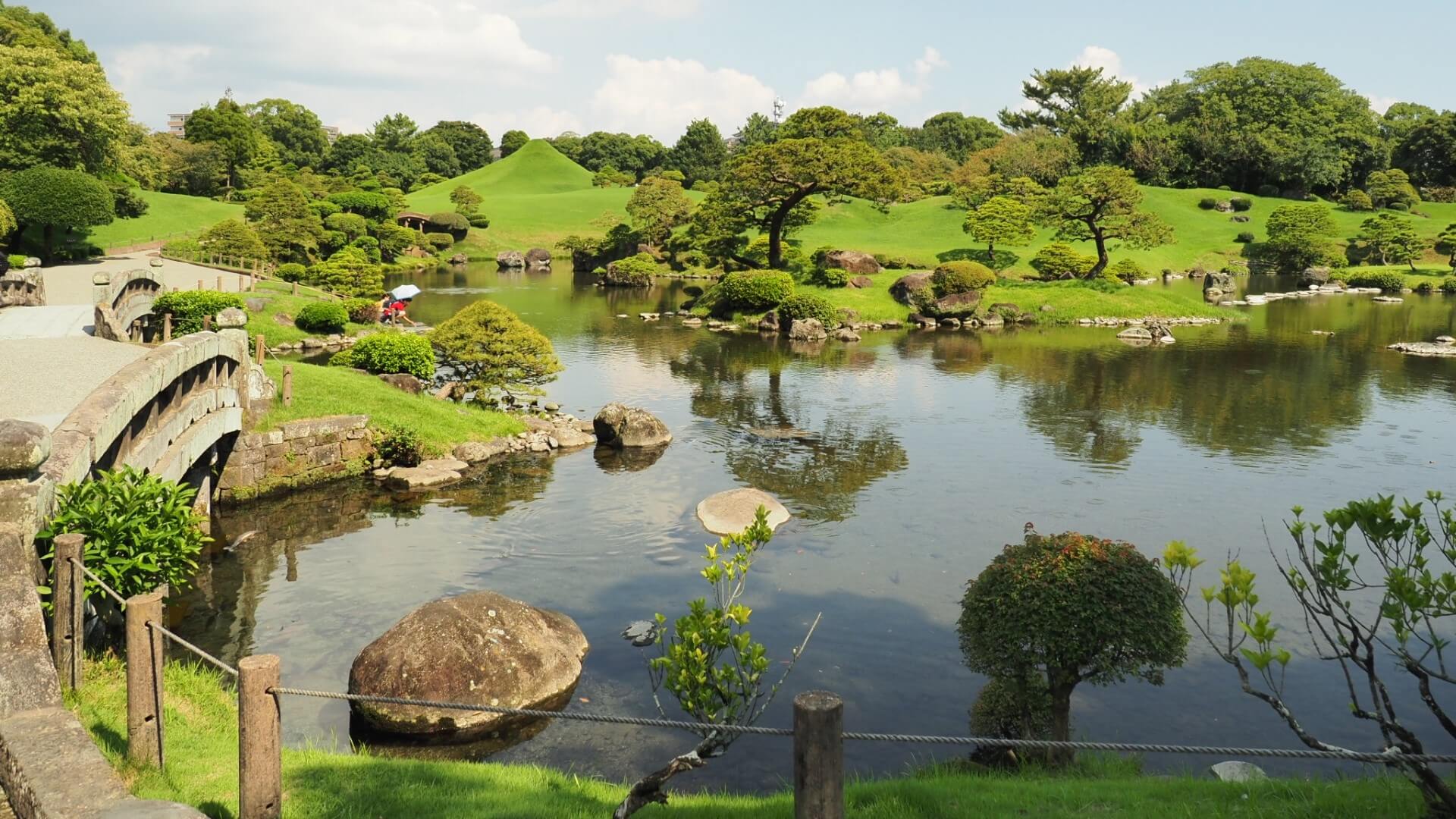
A 30-minute tram ride from JR Kumamoto Station, Suizenji is a traditional Japanese garden featuring manicured lawns and trees, water features, arched bridges and landscaped replica of Mount Fuji. Established in the 17th century, Suizenji is said mimic the former Tokaido – an important route from Kyoto to Tokyo, then called ‘Edo’, during the Edo Period (1603-1868) – and its fifty-three ‘post towns’. Beautiful at all times of year, the garden is at its best during the blossoms of late-March to early-April and the autumn leaves of late-October onward. Open daily from 07:30 to 18:00 (March to October) and 08:30 to 17:00 (November to February), admission is JPY400.
18 / MOUNT ASO / all year round
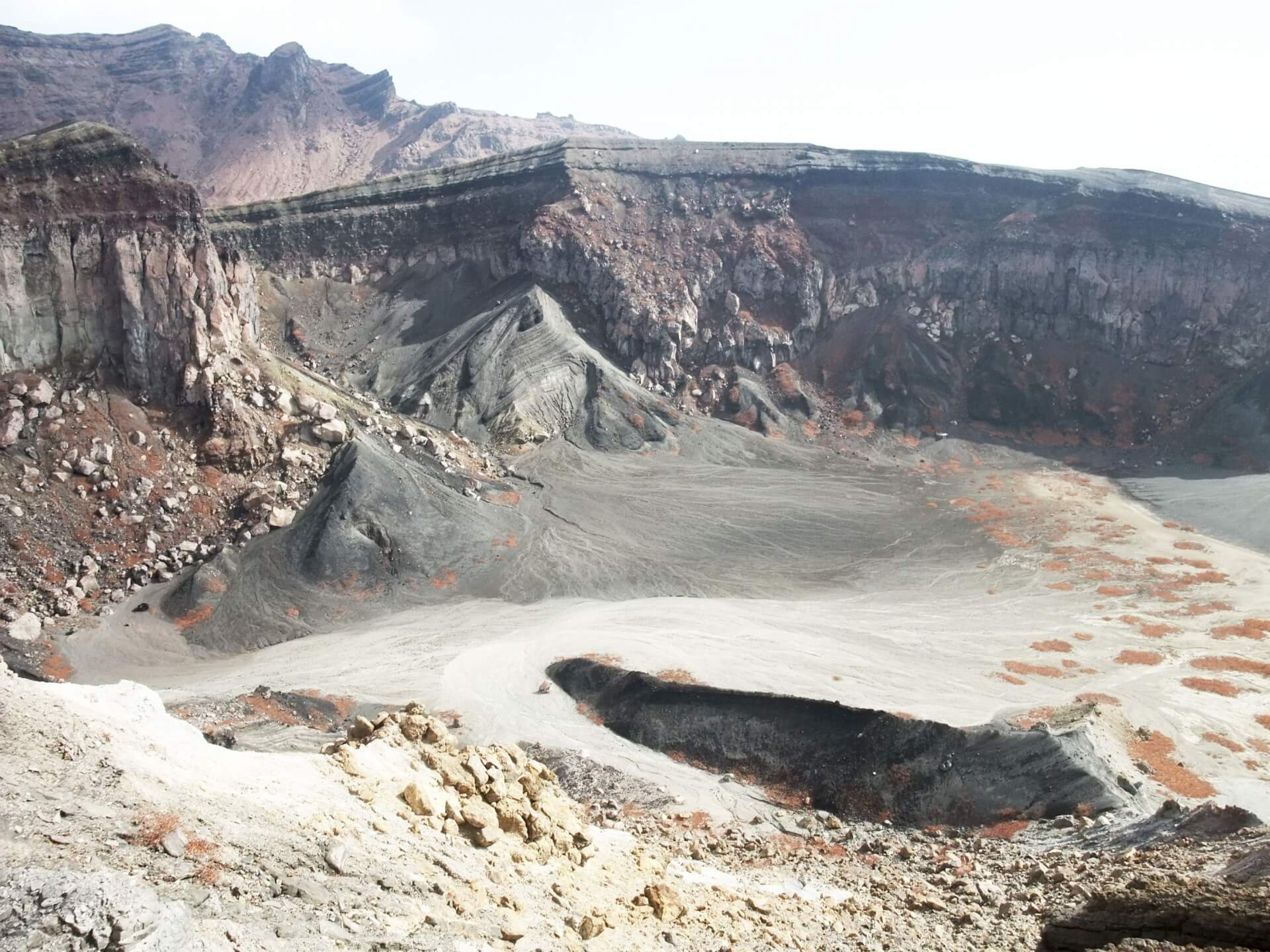
Located around 50km to the east of Kumamoto City, within Aso-Kuju National Park, Mount Aso is an active volcano boasting one of the world’s largest calderas. Within the caldera, multiple active peaks including Mount Nakadake which continuously emits smoke. The caldera is at times inaccessible due to more intense gases, bad weather or the risk of volcanic activity. JR Aso Station is the nearest train station to the mountain, with buses running from there to the caldera every 1 to 2 hours. A one-way ticket costs JPY650. You can also access the caldera by car by paying JPY800 to access the toll road.
Mt. Aso is an active volcano and your personal safety should be your first priority. The Japan Meteorological Agency provides real-time advice and warnings for the entire country. Prior to visiting Aso, we recommend checking the JMA website.
19 / KUROKAWA ONSEN / all year round
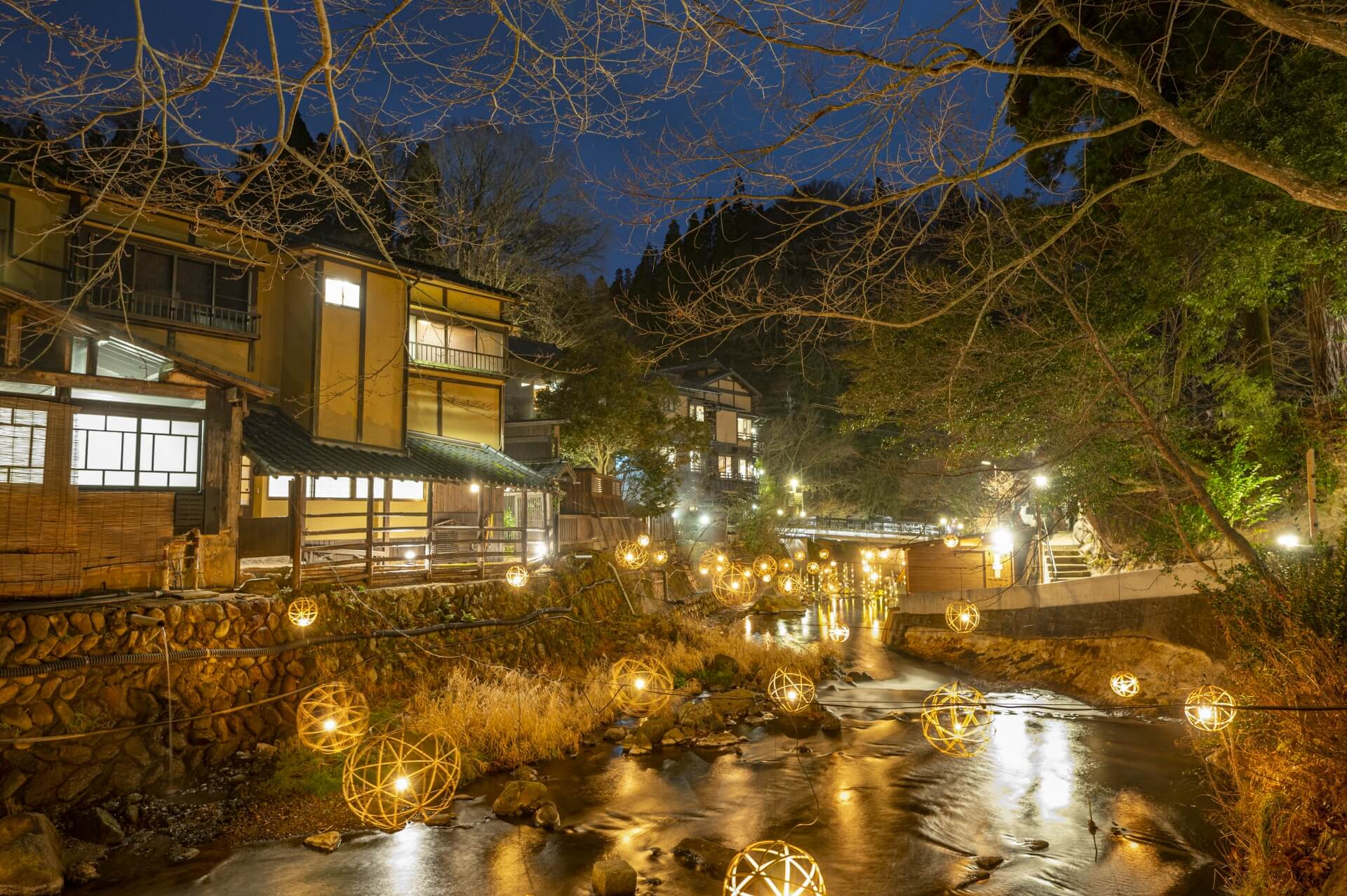
Also located within Aso-Kuju National Park and around 35 minutes drive from Mount Aso, Kurokawa Onsen is one of Japan’s most attractive hot spring towns. The towns picturesque laneways are lined with ‘ryokan’ (traditional guesthouses), cafes, shops and of course, public bathhouses. The town includes two small public bathhouses which can be used for JPY200 each, or for JP1300, you can purchase a wooden ‘tegata’ pass which allows you to use the baths of any three ‘ryokan’ you choose. Of course, if you’re making the journey to Kurokawa you really should stay at least a night and fully indulge in the hot springs. The town is home to plenty of accommodation – with something for all budgets – and thanks to the active involvement of residents, the town has been spared the insensitive development that many onsen towns have experienced, and as such retains its historic charm. For more information including accommodation listings, see our ‘Kurokawa Onsen Area’ hotel page.
BEST THINGS TO DO IN & AROUND BEPPU ONSEN
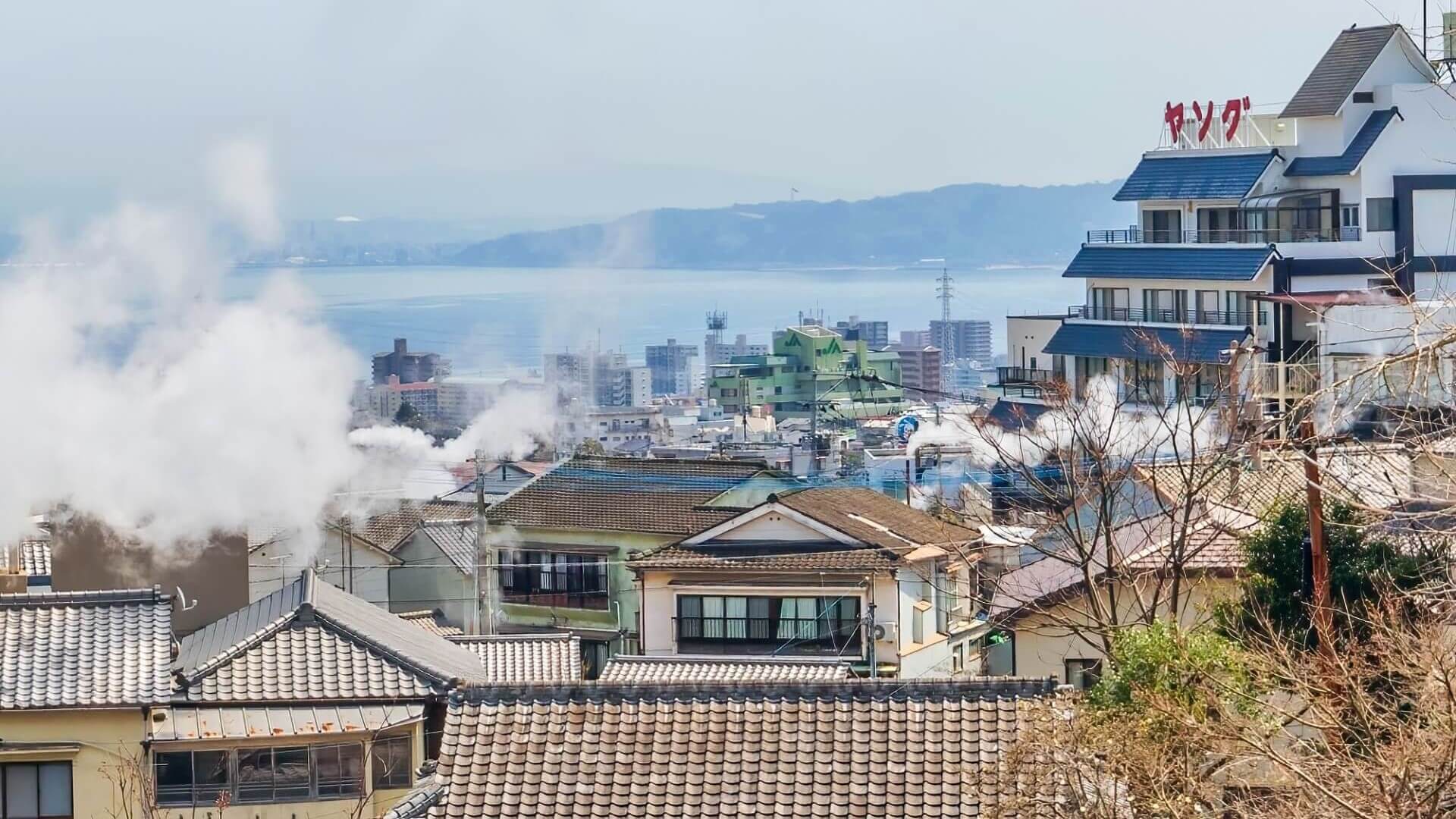
Kyushu is blessed with numerous ‘onsen’ (natural hot spring) areas of which, Beppu Onsen is the most famous. While most visitors head to Beppu just to enjoy the baths, while there it’s worth spending time to explore the surrounding area including the Kuju Mountains and Kunisaki Peninsula; after of course, you enjoy a long soak in the:
20 / HOT SPRINGS OF BEPPU ONSEN / all year round
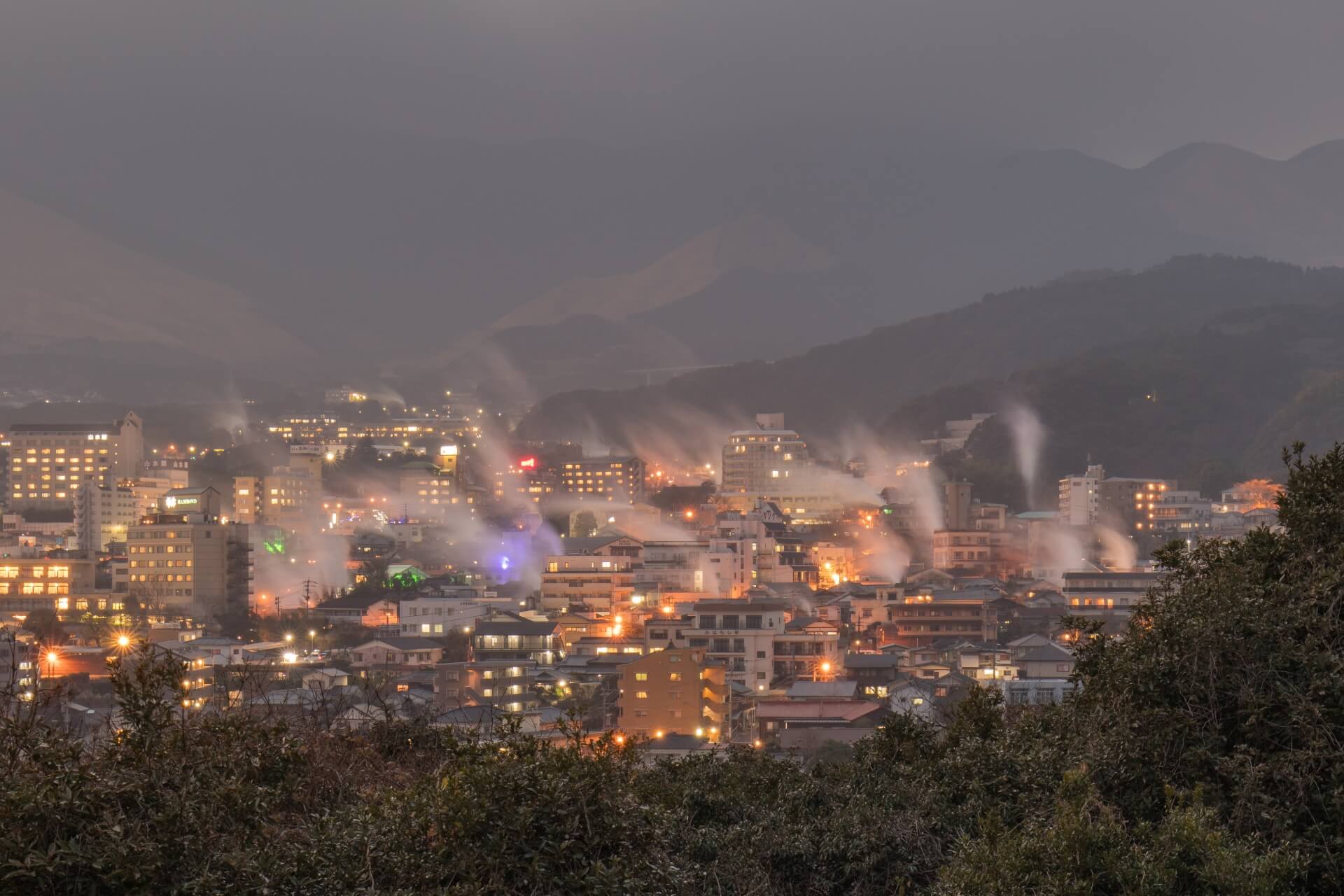
Beppu Onsen is one of Japan’s most famous and popular hot spring towns. Drawing visitors from all over the world, it is said to be blessed with more natural hot water than any other onsen town in Japan and offers visitors the chance to enjoy hot water baths along with sand, steam and mud baths including the mixed bathing mud baths of Beppu Onsen Hoyoland. The extent of Beppu’s natural hot springs is most vividly seen out night, when the rising steam mixes with the light of the setting sun and town lights make the whole scene radiate. Needless to say, there is plenty of accommodation to choose from, ranging from large hotels to intimate guesthouses catering to high-end, mid-range and budget travellers. For more information including accommodation listings, see our ‘Beppu Onsen Area’ hotel page.
21 / ‘JIGOKU’ (HELL) POOLS OF BEPPU / all year round
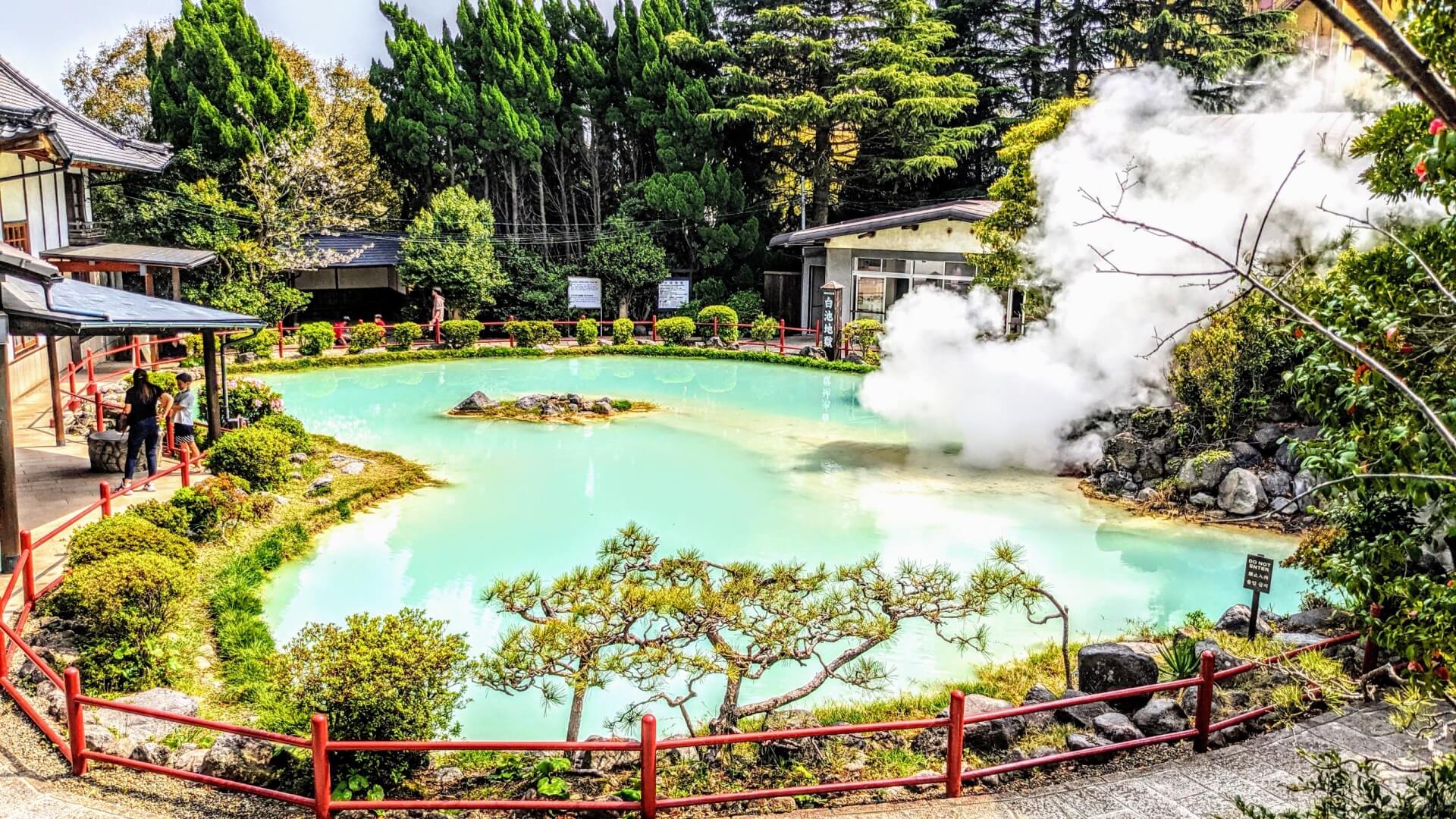
The Kannawa and Shibaseki districts of Beppu boasts one of the town’s most remarkable sights – the seven ‘Jigoku’ Hell Pools. These pools dramatically demonstrate the volcanic and primordial character of Beppu’s hot springs, each different and suitably named. The ‘Shiraike Jigoku’ or ‘White Pond Hell’ is so-named for its milky water while ‘Umi Jigoku’ or the ‘Sea Hell’ is known as such because of the intense blue of its boiling water.
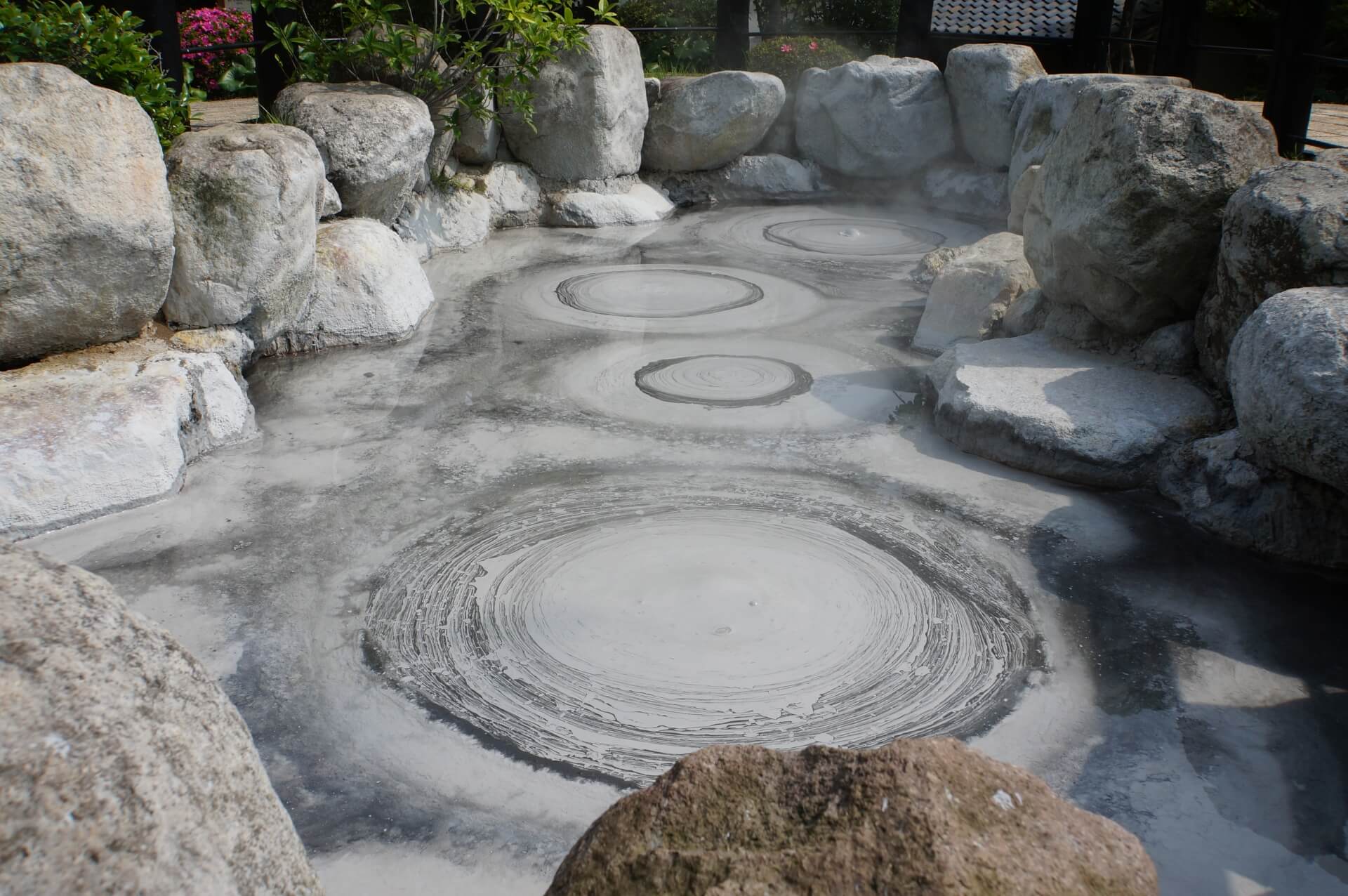
The bubbling mud bath of ‘Oniishibozu Jigoku’ takes its name for the shape of the burb mud, which reminds some of the shaven heads of monks while the red water of ‘Chinoike Jigoku’ or ‘Blood Pond Hell’ is perhaps the most striking of any of the ponds. Open daily from 08:00 to 17:00, it costs JPY400 to enter each ‘hell’ or JPY2000 for a 2-day pass covering all seven. Most of the ponds are located in the Kannawa district, around 15 minutes by bus from JR Beppu Station while the other two are in the Shibaseki district – another 5 minutes by bus from Kannawa.
22 / YUFUIN ONSEN / all year round
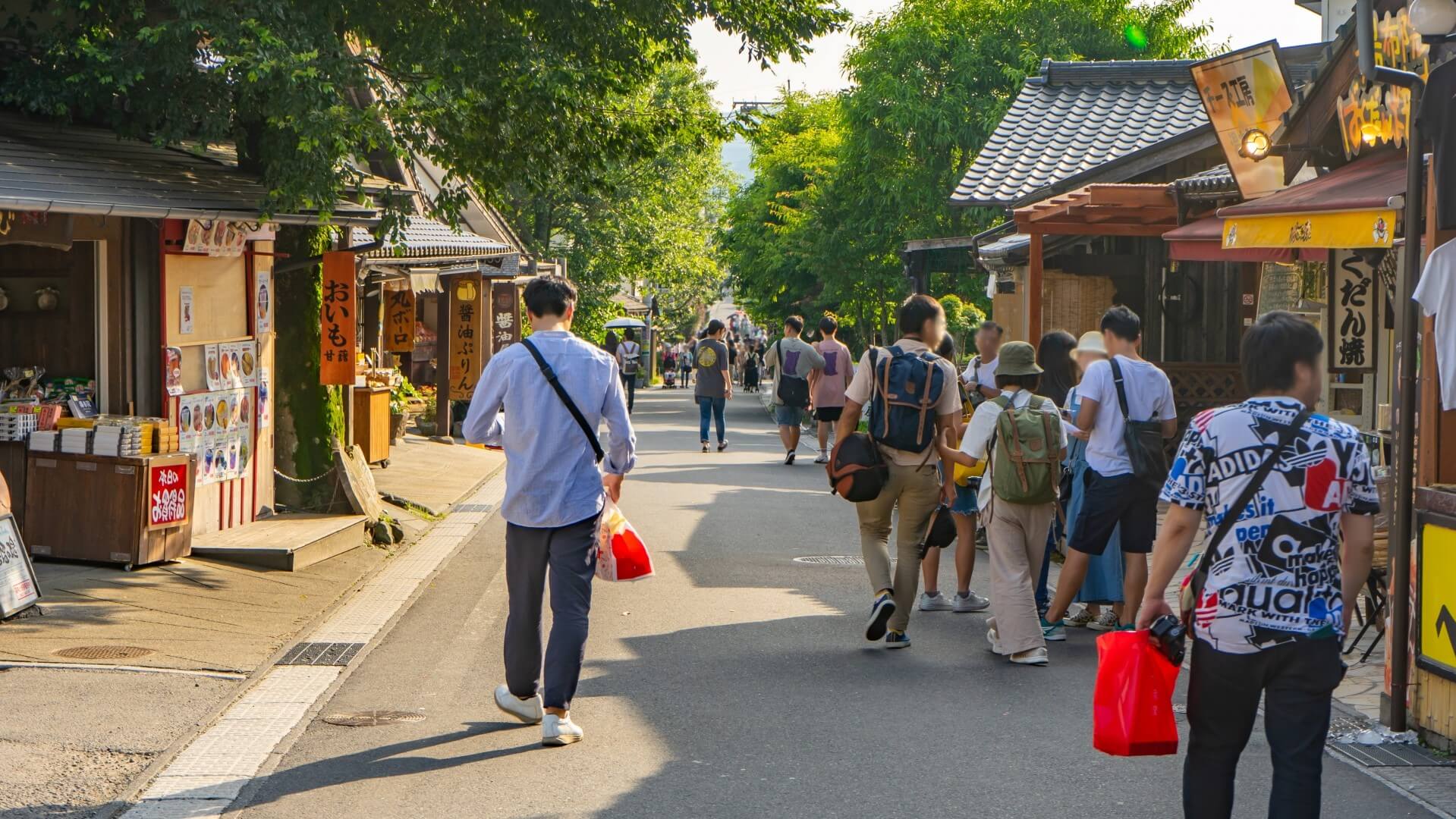
Yufuin Onsen is located between around 50-minutes drive to the west of Beppu Onsen, another hot spring town known for its art galleries, shopping, cafes and restaurants. It’s a pleasant town to stroll around with walking trails leading to the small Lake Kinrinko around 1.5 kilometres away from the train station. The town has plenty of accommodation to choose from with a number of bathhouses including Baien and Tsuka no Ma open to day-visitors. To get there, take the bus from JR Beppu Station – around 50 minutes / JPY940 one-way – or alternatively, you can take the train from JR Beppu Station to Yufuin Station – a journey of around 80 minutes / JPY1130 and requiring a transfer at Oita Station. For more information including accommodation listings in town, see our ‘Yufuin Area’ hotel page.
23 / HIKE IN THE KUJU MOUNTAINS / best: April to November
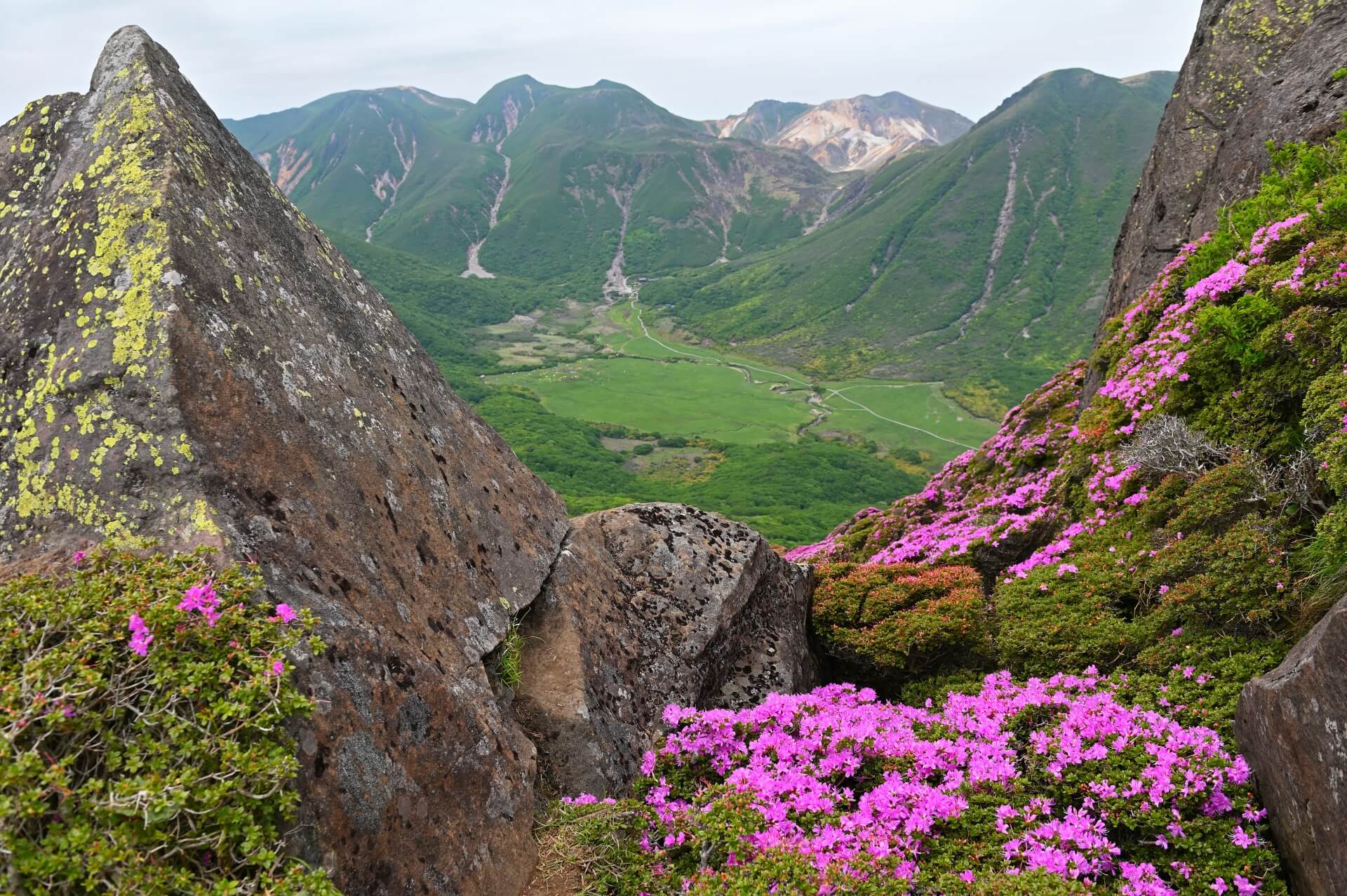
Lying within the broader Aso-Kuju National Park, the Kuju mountain range offers some of Kyushu’s best hiking and its highest peak, Nakadake. Standing 1791 metres above sea level, Mount Naka (Nakadake) and the nearby peak of Kuju (1786m) are the focal points for most hikers with two main trailheads at the Makinoto Pass and Chojabaru Visitor Center accessible by both car and bus – a 75 minute drive from Beppu and 2 hour drive from Kumamoto. Should you not have the time or energy to hike up the mountains, you’ll find leisurely walkways around Chojabaru Visitor Center with a looping 2.5km / 30 to 40-minute circuit providing good views of the mountains. While the mountains can be accessed anytime of year, they are subject to snow from December to March meaning that it’s best to hike from April to November with the autumn months of October and November being an especially beautiful time to visit.
24 / TEMPLES, SHRINES & STATUES OF KUNISAKI PENINSULA / all year round
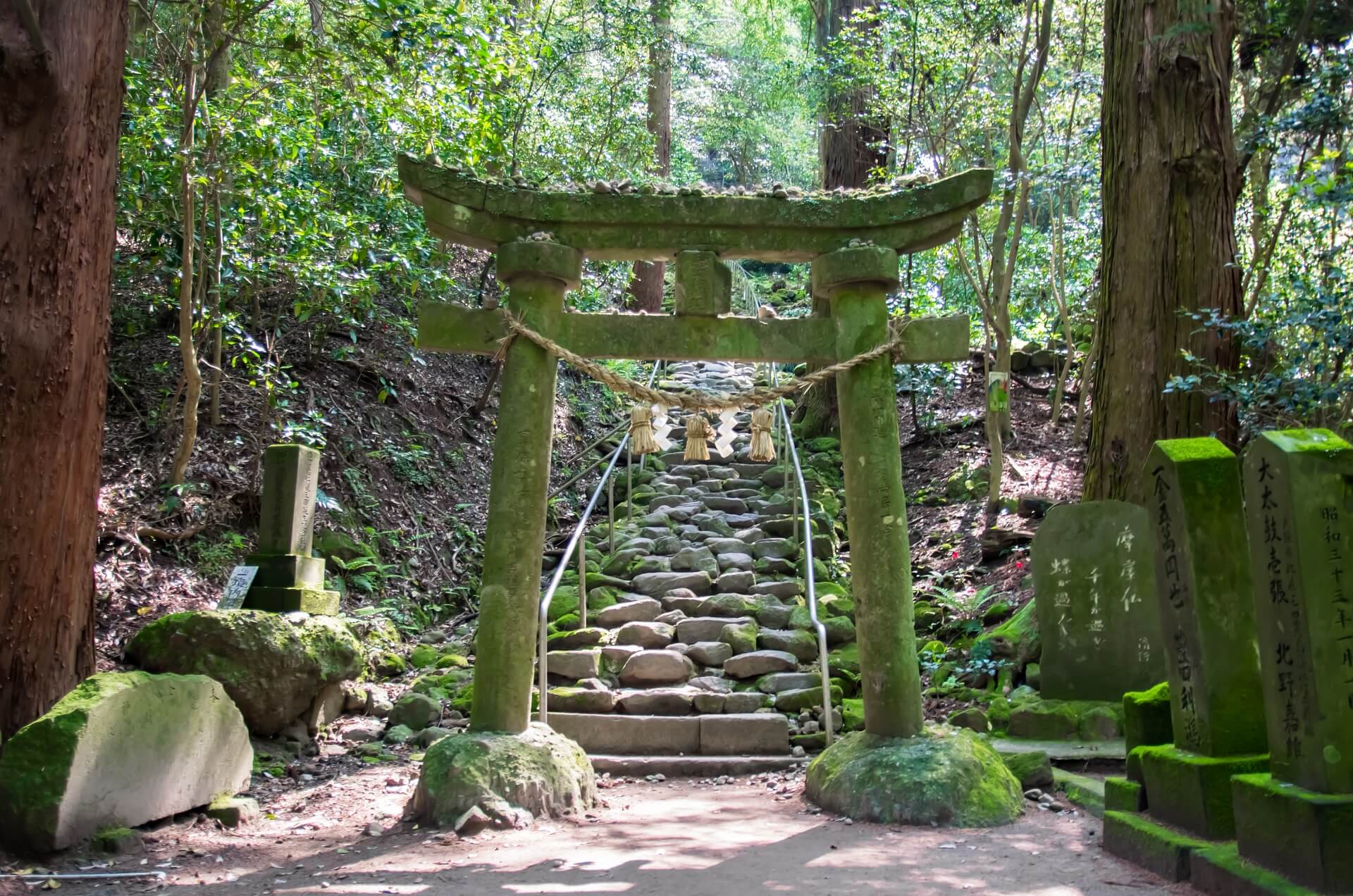
Kunisaki Peninsula sits to the north of Beppu, dominated by Mount Futago and most famous for its many archaic, rustic and lost temples. The local faith system of ‘Rokugo Manzan’ blends elements of Buddhism, Shinto, folk and mountain worship as reflected in its many temples, shrines and stone statues dotted throughout the forested valleys on the flanks of the mountain. Located at the summit of Mount Futago, Futago-ji is the most celebrated of the temples, with a history stretching back more than 1300 years while Fuki-ji Temple – located around 15km from Futago-ji – is a designated national treasure.
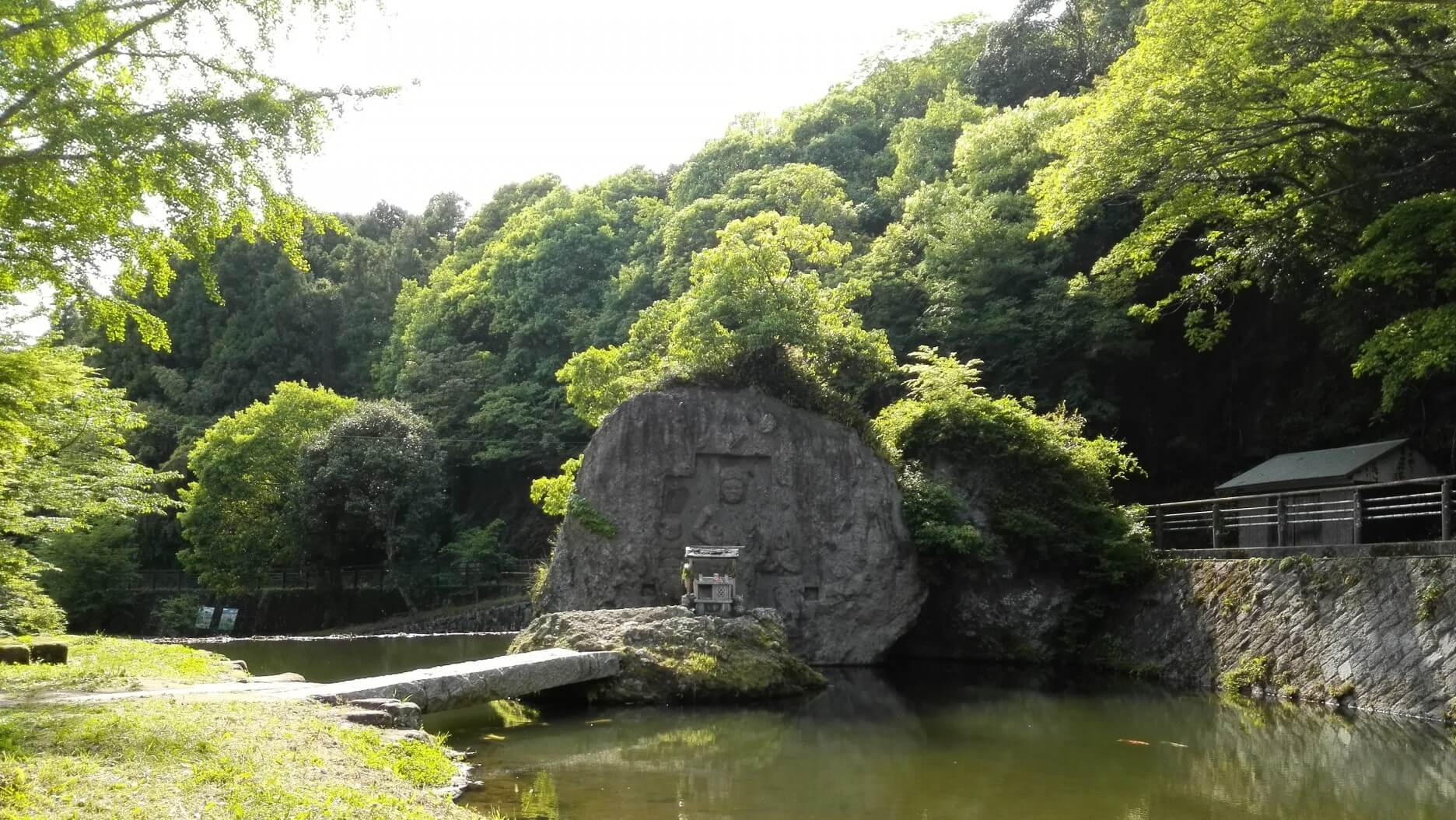
There are many temples and shrines across the peninsula along with numerous stone statues of both Buddhist deities and Shinto stelae and sacred stones. Most notably, the area is home to the largest Buddhist stone carvings in Japan – an 8-metre tall ‘fudomyoo’ and 7-metre tall Dainichi Buddha known as the ‘Kuman Magaibutsu Stone Buddha’. For more information including links to accommodation listings, see our ‘Kunisaki Peninsual Area’ hotel page.
BEST THINGS TO DO IN & AROUND KAGOSHIMA
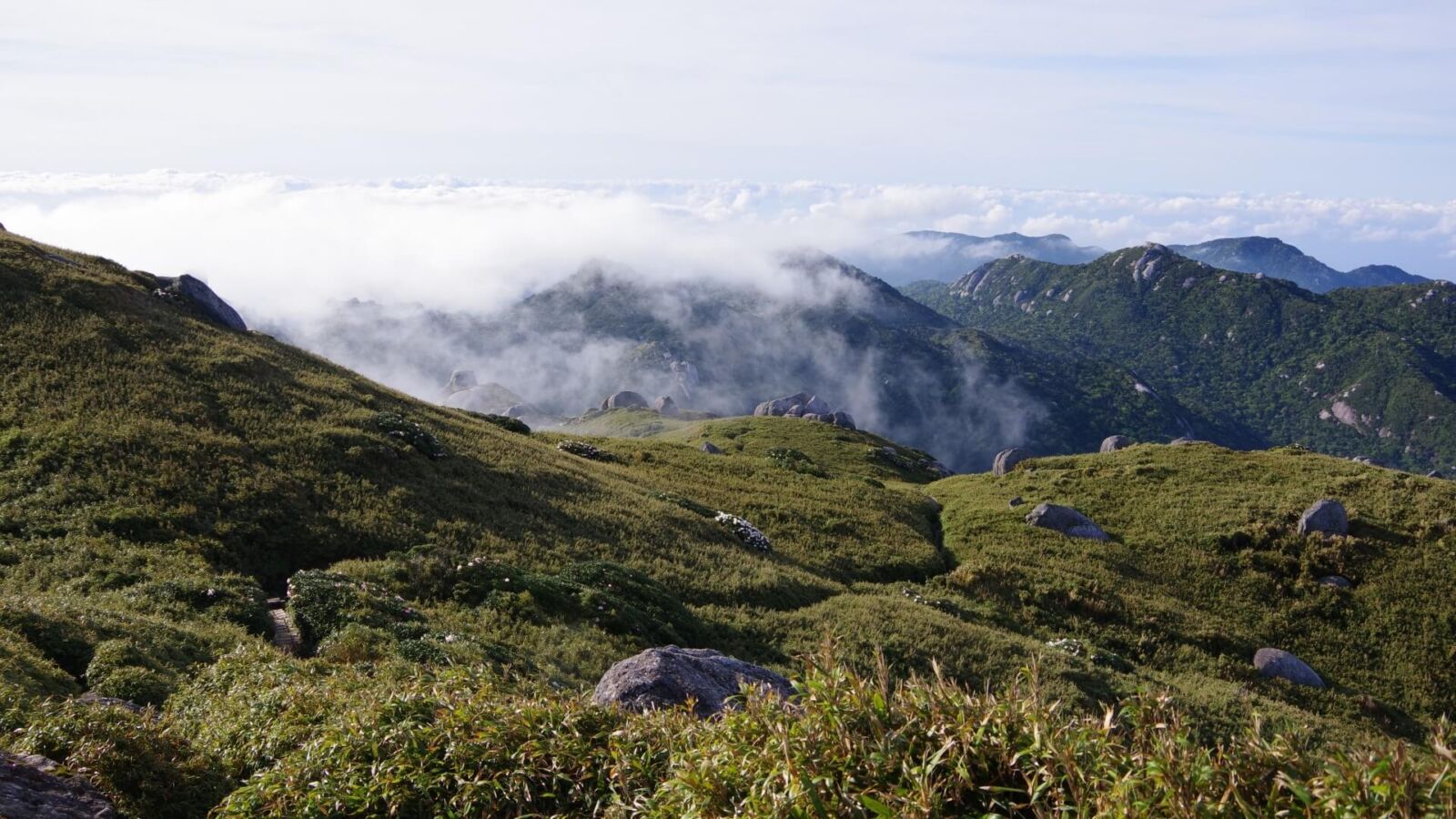
Kagoshima-chuo Station is the terminus of the Kyushu Shinkansen line making it quick and easy to reach. Once there, visitors can enjoy some of Japan’s best outdoor destinations including the volcanic island of Sakurajima, the beautiful Satsuma Peninsula and World Heritage-listed Yakushima:
25 / SAKURAJIMA / all year round
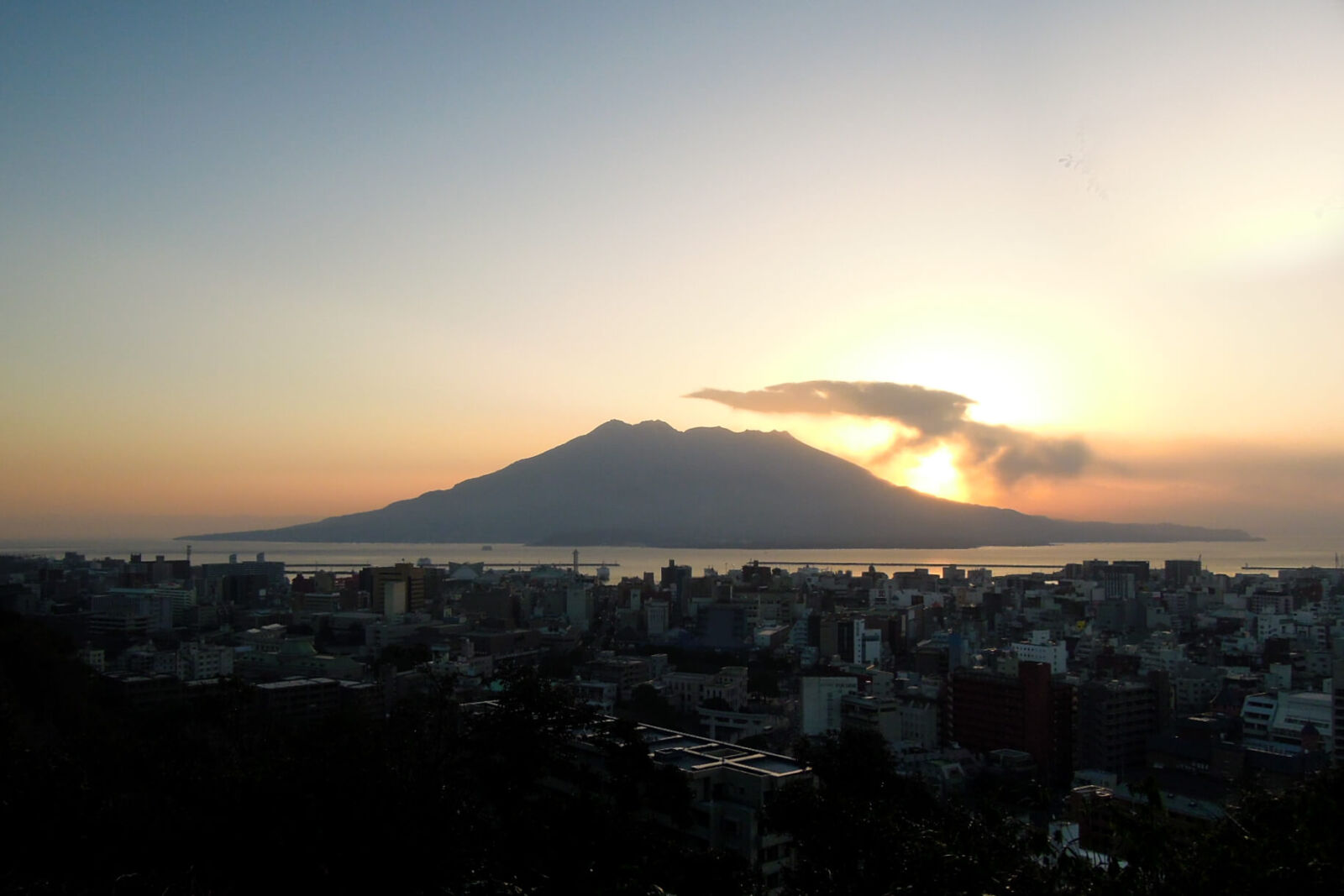
Visitors to Kagoshima will not need to look hard to find Sakurajima. One of Japan’s most active volcanos, the tripled-peak Sakurajima is located in the middle of Kagoshima Bay – a constant, smoking presence that looms over the city. There is a 2-kilometre exclusion zone around the three peaks – ‘Kita-dake’ (1117m), ‘Naka-dake’ (1060m) and ‘Minami-dake’ (1040m) – of Sakurajima, nevertheless the island is the most popular destination in and around the city. Only a 15-minute / JPY200 ferry ride from central Kagoshima, Sakurajima is accessible at all times of year and boasts a visitor center – open daily from 09:00 to 17:00 – along with multiple walking trails, observation points, onsen and some excellent accommodation. For more information including links to accommodation listings, see our ‘Sakurajima Area’ hotel page.
Sakurajima is an active volcano and your personal safety should be your first priority. The Japan Meteorological Agency provides real-time advice and warnings for the entire country. Prior to visiting Sakurajima, we recommend checking the JMA website.
26 / SENGANEN GARDEN / all year round
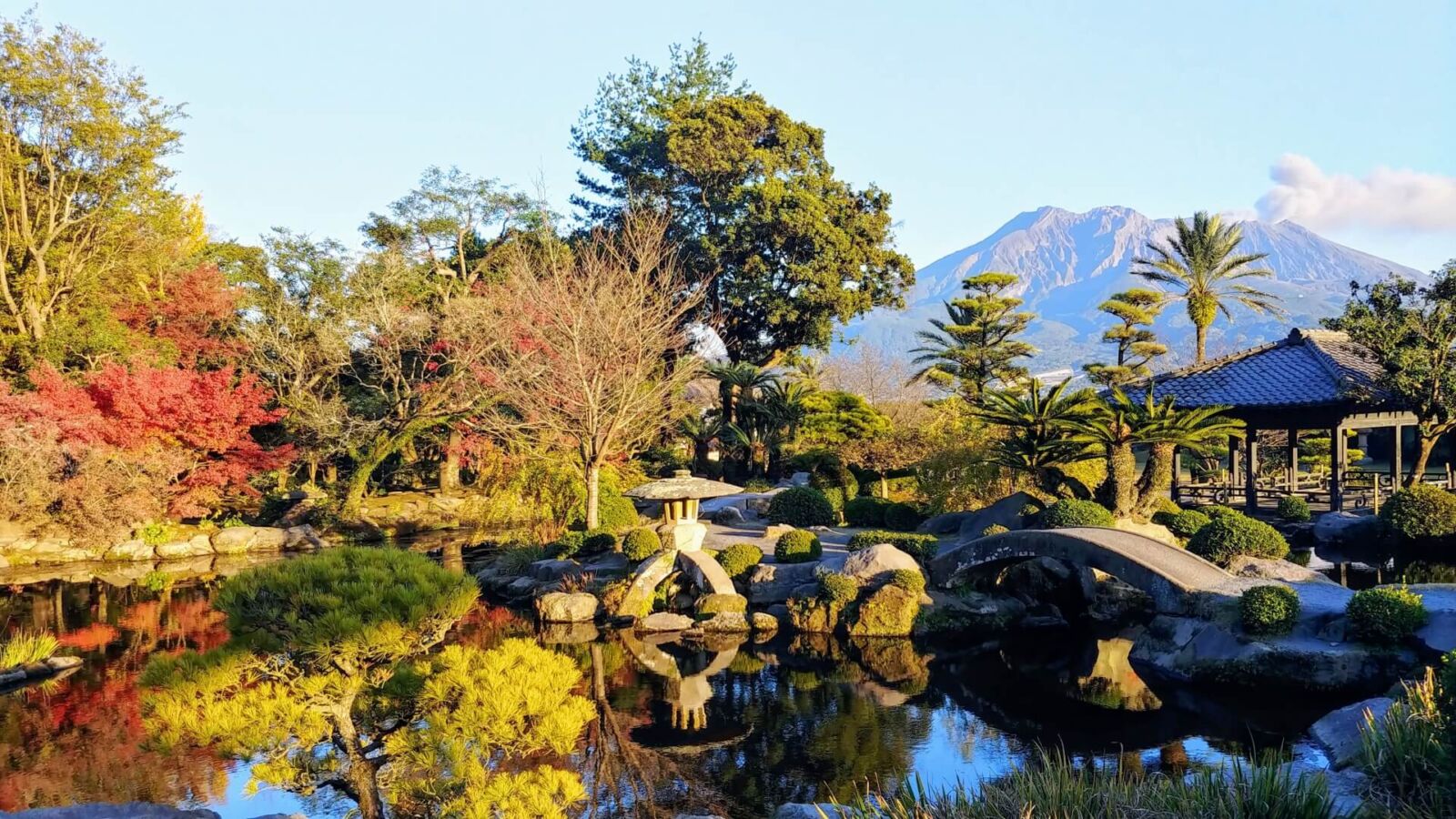
Looking-out toward Sakurajima, Senganen is a traditional Japanese garden sitting to the coast to the north of central Kagoshima. As such, the brooding island volcano contrasts against the tranquillity of garden featuring ponds, ambling streams, manicured trees, tea houses, bamboo groves and the 19th century ‘Iso Residence’. The garden includes trees and plants chosen to reflect the beauty of each season therefore no matter when you visit, the garden is well-worth visiting. Senganen is located around 35-minutes by bus from Kagoshima-chuo Station and open daily from 09:00 to 17:00. Admission is JPY1000.
27 / KIRISHIMA ONSEN / all year round
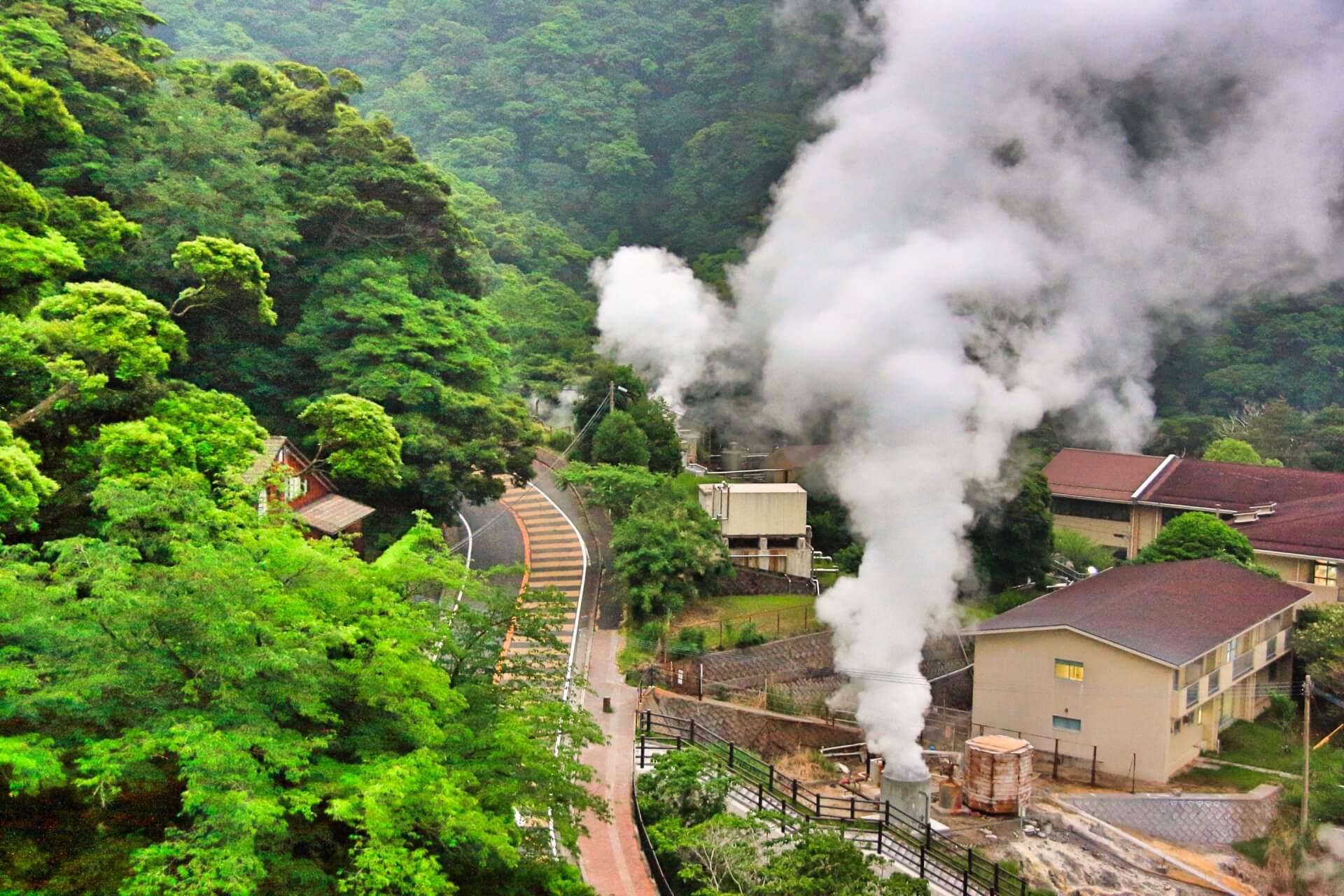
With the volcanic island of Sakurajima lying just across the bay from Kagoshima City, it’s no surprise that the region is also blessed with some fantastic natural hot springs including expansive area of Kirishima Onsen. Made-up of multiple ‘onsen’ (hot springs), Kirishima boasts an interesting array of facilities including high-end accommodation, making it an ideal base from where to explore Kirishima-Kinkowan National Park. To get there, take any local – 60 minutes / JPY860 – or limited express – 50 minutes / JPY1500 – from Kagoshima Station to Kirishima-Jingu Station. Once there, many guesthouses will pick you up while public buses run to various points in the area including the national park. For more information including accommodation listings, see our ‘Kirishima Onsen Area’ hotel page.
28 / HIKING IN KIRISHIMA-KINKOWAN NATIONAL PARK / best: April to November
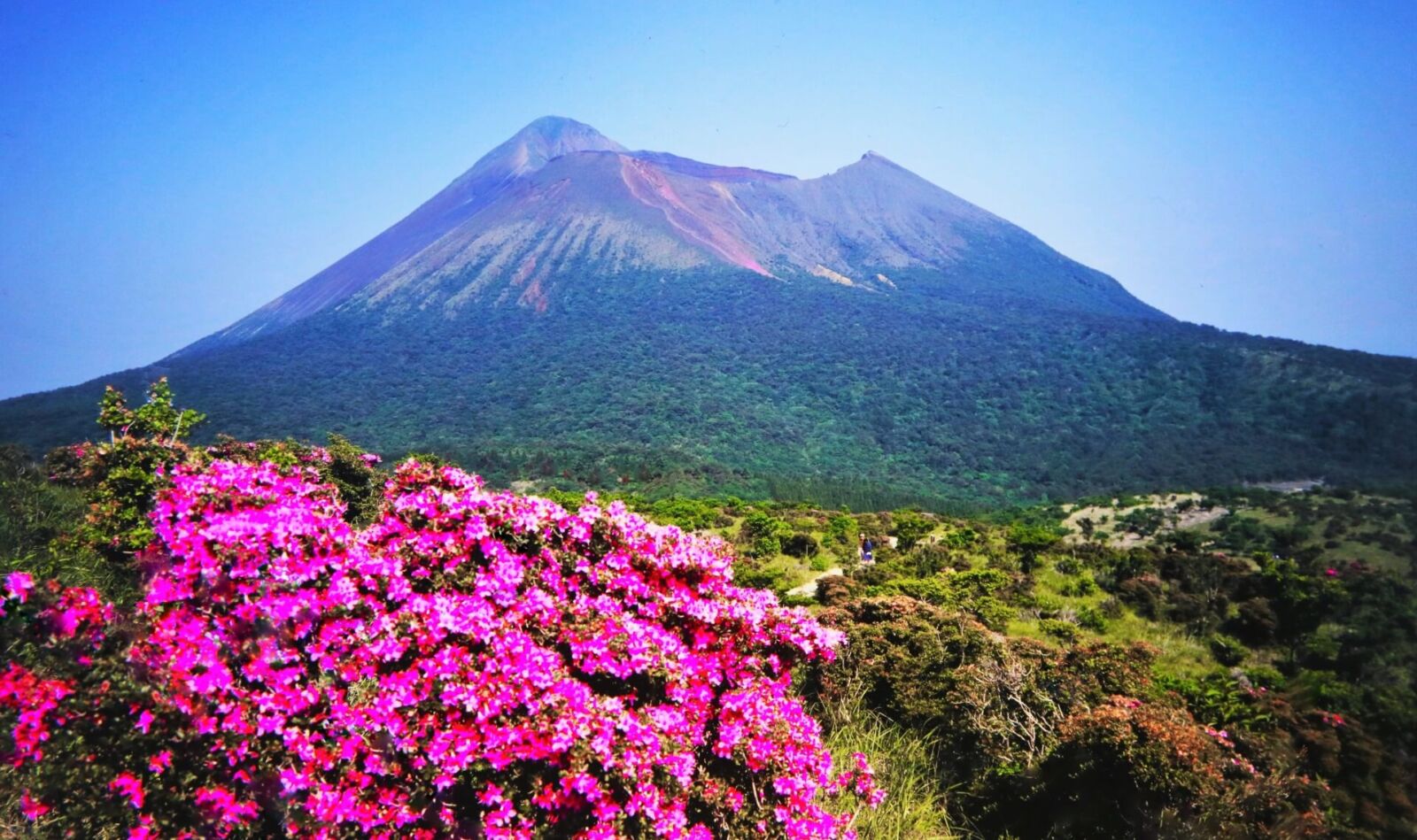
Kirishima-Kinkowan National Park is divided into a mountainous northern area of more than twenty volcanoes and southern area including the coastline of Kinkowan Bay and Sakurajima. The frequent volcanic activity of the area is caused by the movement of a sinking tectonic plate, creating a diverse cluster of large to small volcanoes and calderas. One of Japan’s most striking landscapes, the park is best-experienced along its many hiking trail of which he 12km ‘Kirishima Ridge Trail’ is a highlight. Taking around 6 hours to walk, the trail is suitable for anyone of reasonable fitness. The trail takes in the park’s tallest peak, Mount Karakunidake (1700m) before continuing onto Mount Shinmoedake (1421m) and Nakadake (1332m). The only obstacle to enjoying it is the lack of convenient public transport meaning this is an experience best-suited to travellers with their own car. The trails are accessible throughout the year but best-enjoyed from April to November.
The Kirishima Mountains include multiple active volcanoes and your personal safety should be your first priority. The Japan Meteorological Agency provides real-time advice and warnings for the entire country. Prior to visiting Kirishima, we recommend checking the JMA website.
29 / SATSUMA PENINSULA / all year round
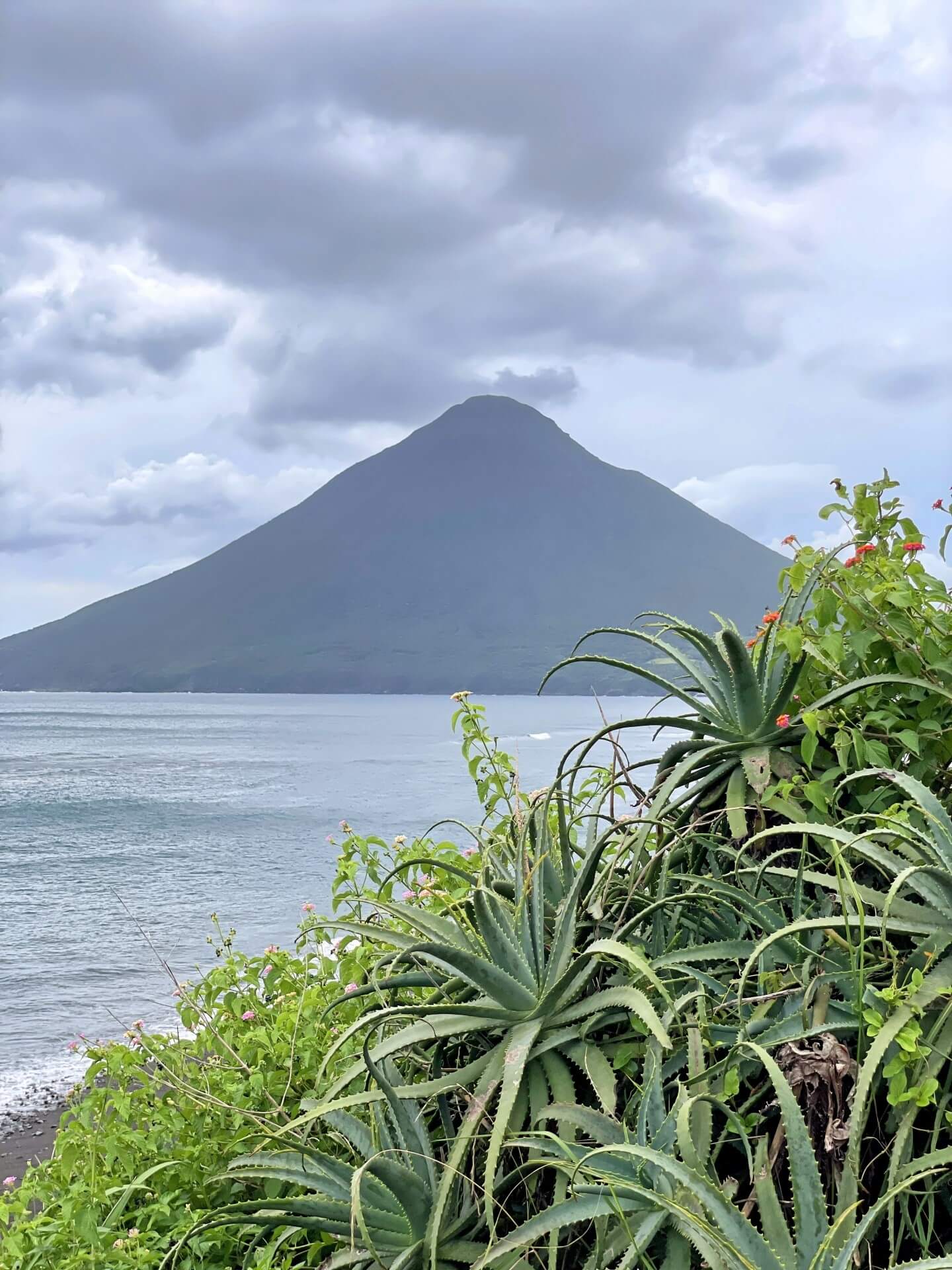
Satsuma Peninsula lies to the south of Kagoshima City and offers visitors an enticing mix of natural and cultural attractions that are best-enjoyed by renting a car and driving yourself. Taking its name from the former feudal domain of ‘Satsuma’, the Chinran Samurai district is a good place to start when exploring the peninsula. The rock walls and hedges of the town’s historic area are particularly photogenic and impart a strong sense of how the samurai class lived around 250 years ago. The former residences cannot be entered however seven gardens connected to some of those residences are open to the public – with a single JPY530 ticket providing access to all gardens.
Moving further south, the Ibusuki area on the southern tip of the peninsula is known for its hot springs and naturally heated ‘sand baths’. Bathers are buried in the sand – typically for 10 to 20 minutes – which can be enjoyed at hotels and the large Saraku Sand Bath Hall before washing-off and bathing in a hot spring. Cape Nagasakibana is the southern-most tip of the peninsula. From the cape, you can enjoy a fantastic view of the conical Mount Kaimondake along with Nagasakibana Parking Garden which features a variety of tropical flora and fauna including cacti and mango trees, flamingo, lemurs and more. As mentioned, the best way to get around the peninsula is to drive yourself with most destinations only 50 to 70 minutes from Kagoshima City. For more information including links to accommodation listings, see our ‘Satsuma Peninsula Area’ hotel page.
30 / YAKUSHIMA / all year round
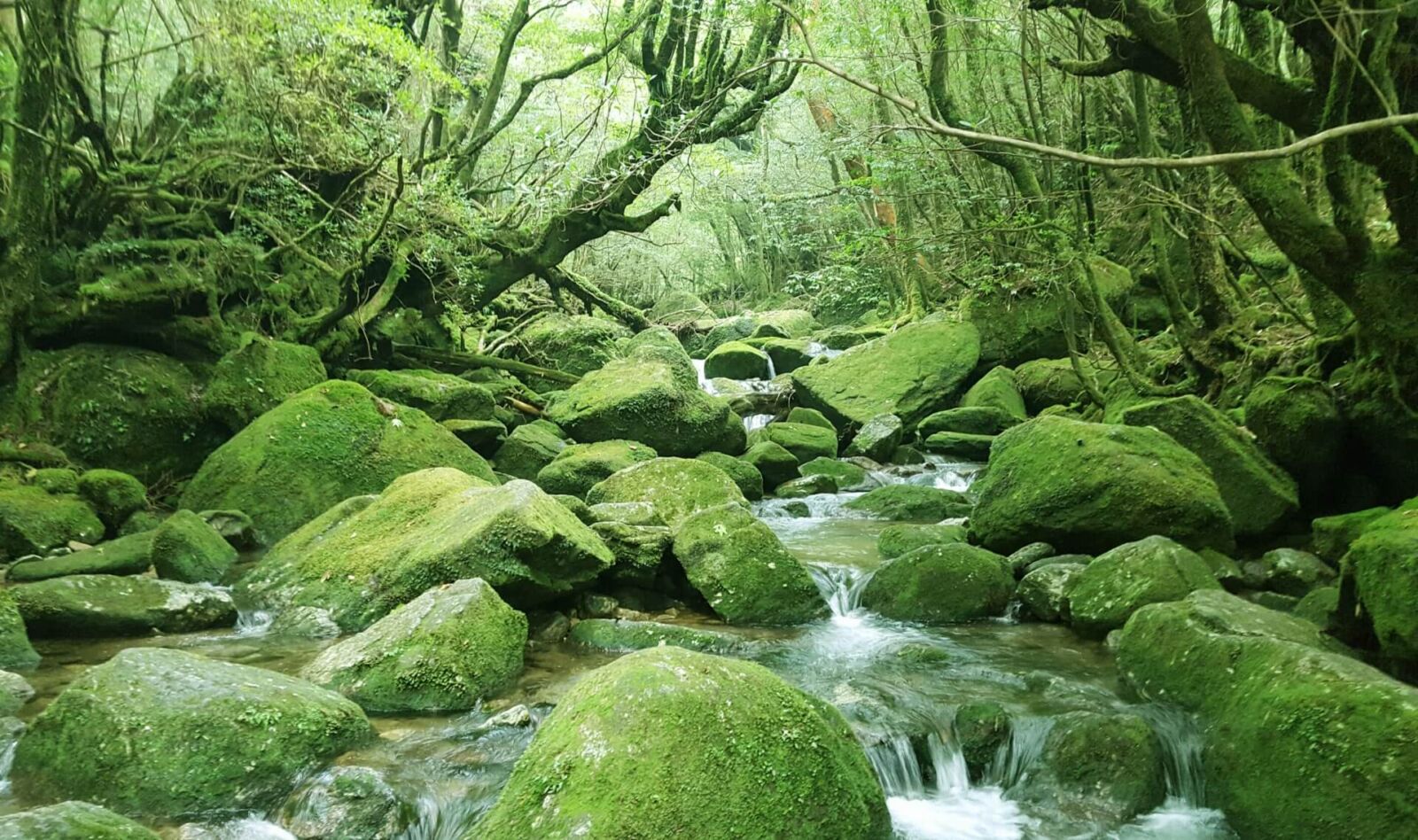
Designated a national park in 2012, the island of Yakushima is one of Japan’s true natural wonders. At 500km2 in area, it is a reasonably large island but one with a small population of just over 13,000 people residing in villages around the coast. The interior of the island is almost completely undeveloped and covered by old growth forest with many trees over 1000 years old. Referred to as ‘yakusugi’ (Yakushima cedars), the oldest of these trees – the ‘Jomonsugi’ – is estimated to be over 7000 years of age. Sadly, much of the ancient forest was logged during the ‘Edo Period’ (1603-1868) however enough remains today that areas of Yakushima were afforded World Heritage status in 1993.
An estimated 300,000 visitors head to the island each year to hike into the forests, said to be the inspiration for Studio Ghibli’s popular 1997 film, ‘Princes Mononoke’. The highest elevations on the island ascend to just under 2000 metres with more than 30 peaks over 1000 metres. The island is also blessed with numerous hot springs and protected wildlife including loggerhead turtles. Yakushima can be reached using a high-speed boat – 2 to 3 hours / JPY9200 one-way – from Kagoshima or slower ferry – 4 hours / JPY5200 one-way – with services departing regularly throughout the day. Alternatively, you can fly to the island from Kagoshima, Fukuoka and Osaka. There is plenty of accommodation on the island however it books-out well in advance during the summer peak season of July and August. For more information including accommodation listings, see our ‘Yakushima Area’ hotel page.
BEST PLACES TO STAY WHEN VISITING KYUSHU
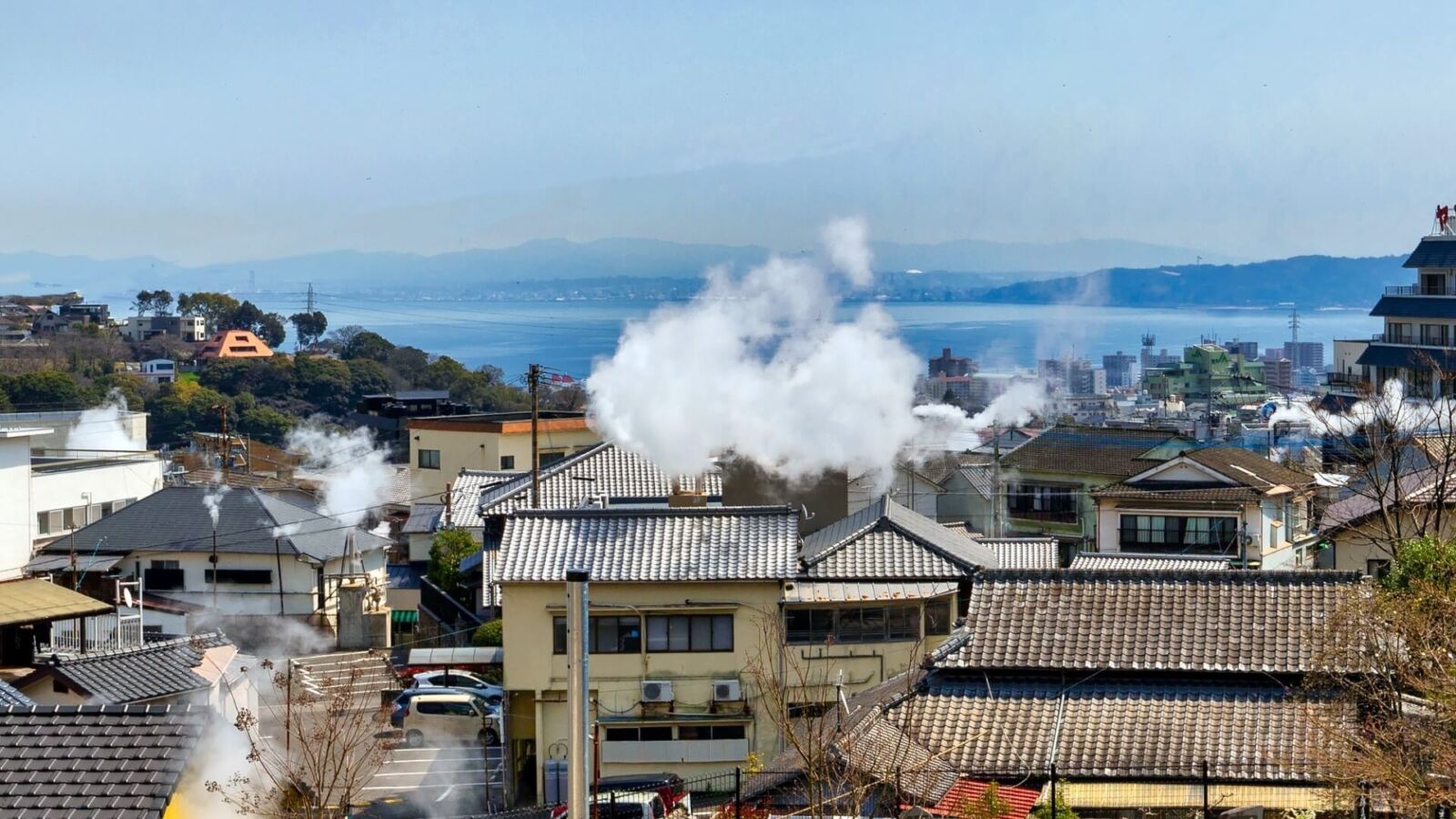
Kyushu is a large region with plenty to explore and just as many options when it comes to where to stay. Our ‘Best Places to Stay in Kyushu’ page lists lots of good options including the cities of Fukuoka, Nagasaki, Kumamoto and Kagoshima along with popular regional destinations including Beppu Onsen, Unzen Onsen, Yakushima and more.
GETTING TO & AROUND KYUSHU
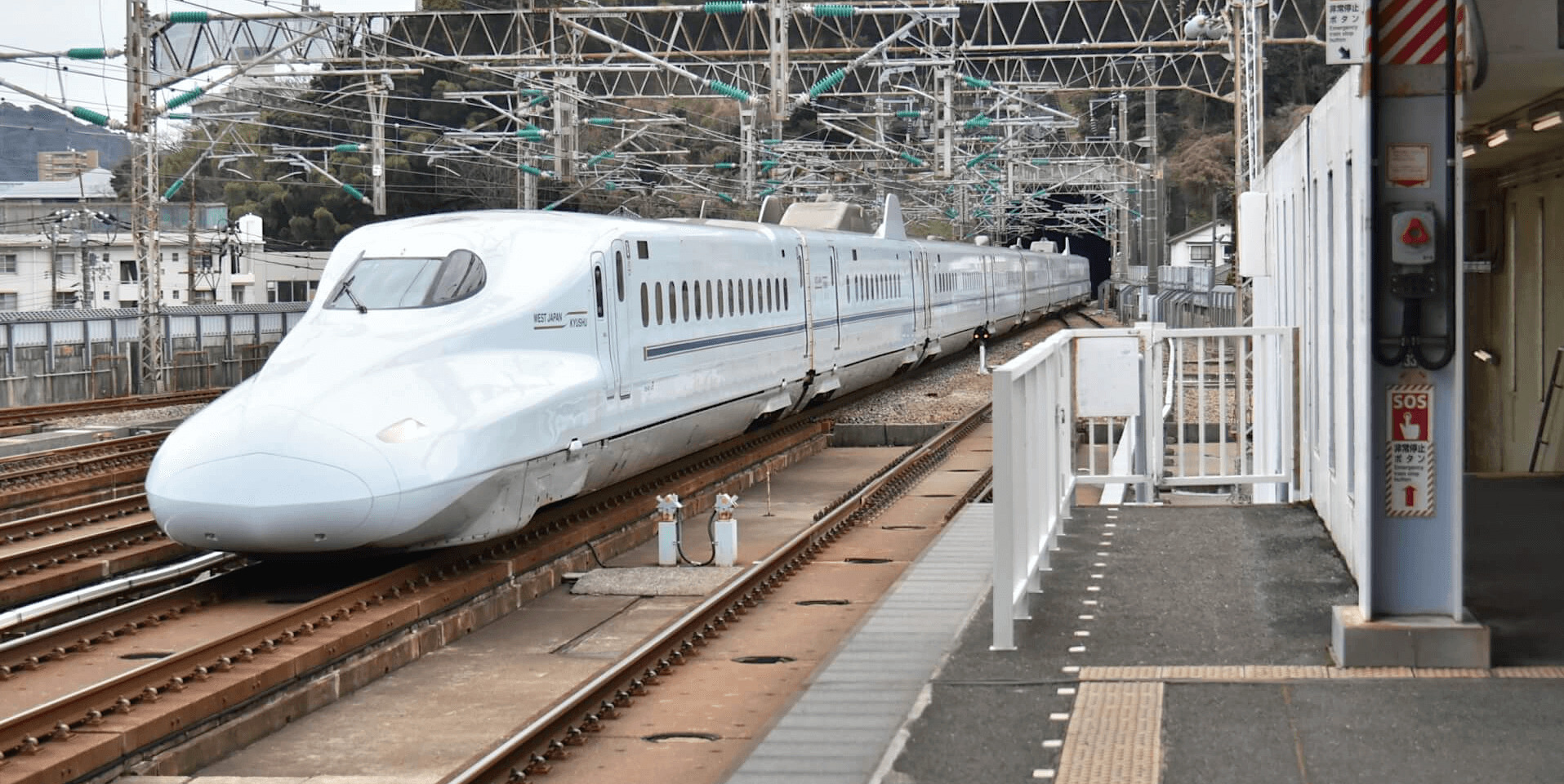
The island of Kyushu is connected to Japan’s main island of Honshu by the San’yo Shinkansen line, with the regional Kyushu Shinkansen line running to multiple cities in the region. Multiple airports service both domestic and international routes, while ferry services also operate from regional ports and express buses run to various cities across Japan. The best way to get to Kyushu therefore depends on your intended destinations once there, while also needing to consider the time and cost of each option. For many if not most international visitors, Fukuoka will be the easiest point of entry. It boasts the both largest train station – Hakata Station – and largest airport in Kyushu with ferry and bus services also connecting it to cities on Honshu. Hakata Station is the terminus of the San’yo Shinkansen line – running to Hiroshima, Kobe, Osaka and other cities – which connects through to the Tokaido Shinkansen lines – which runs to Kyoto, Nagoya and Tokyo. For information on how to get to Fukuoka from those and other cities, see our ‘How to Get to Fukuoka’ page.
Getting Around Kyushu
Once in Kyushu, the Kyushu Shinkansen line runs from Hakata Station in Fukuoka to Kagoshima-chuo Station in Kagoshima, with stops at Kumamoto and other cities. It is the fast way to move between Kyushu’s major cities – excluding Nagasaki – and from stations on the line, regional services run to other popular destinations including Nagasaki, Beppu Onsen and more.
PLAN YOUR VISIT TO JAPAN
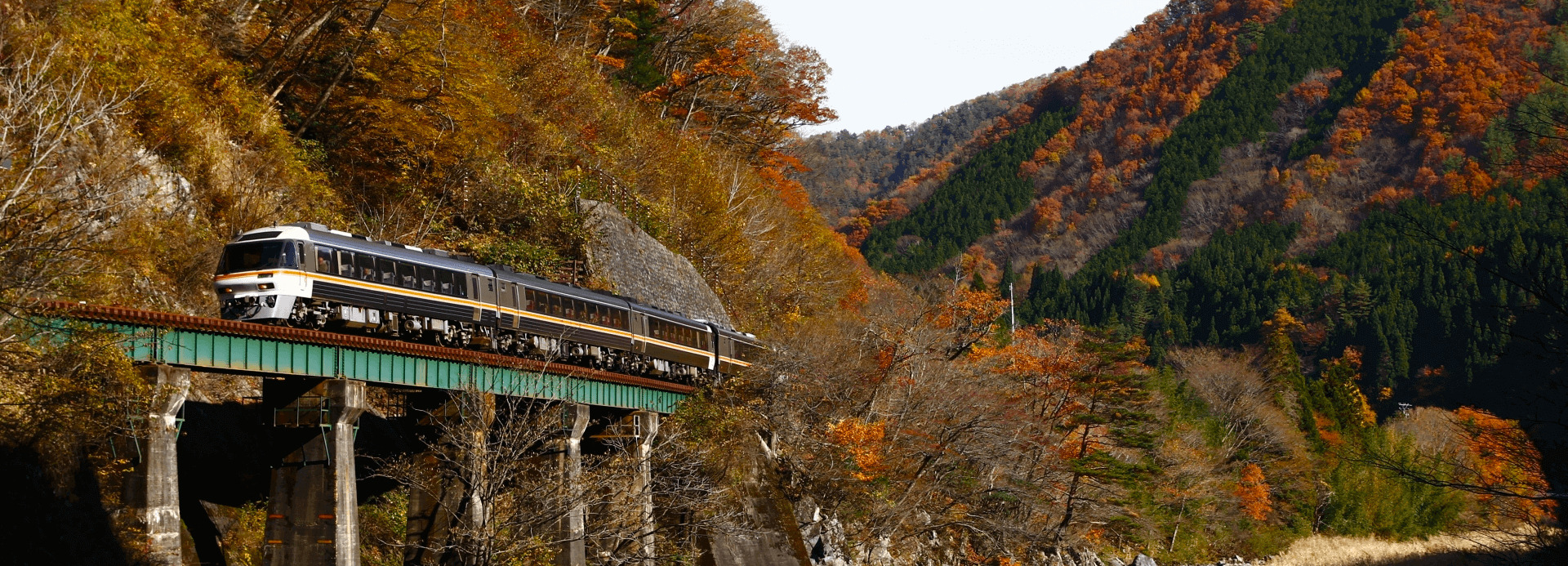

Heading to Kyushu using the rail system is easy and comfortable. Unfathomable in its size and efficiency, moving around the country by train opens-up all regions of Japan for exploration. Our ‘Plan Your Visit’ page has everything you need to know about visiting Japan – from tips on the best time to travel, times to avoid, entering and exiting the country, money matters, staying connected, accommodation, staying safe and healthy and plenty more to ensure that you get the most out of your time here.



